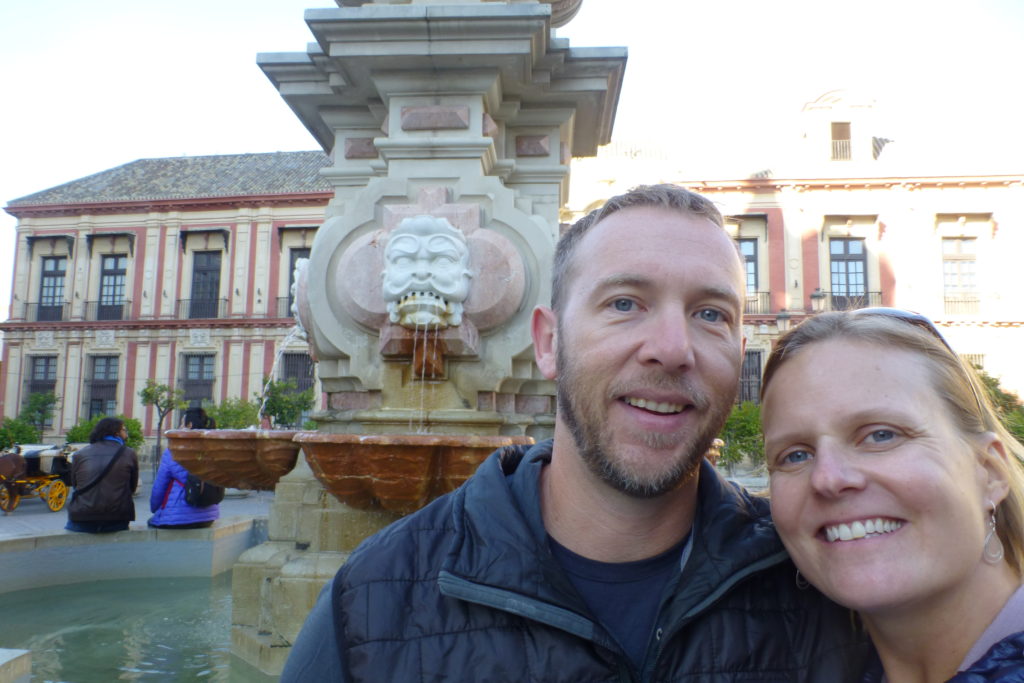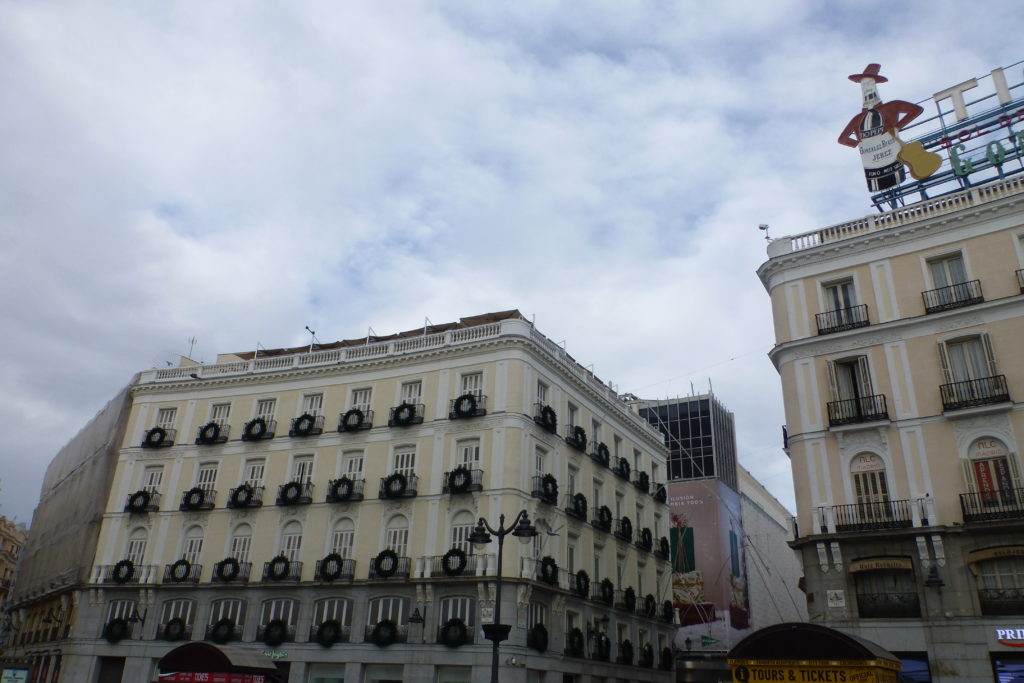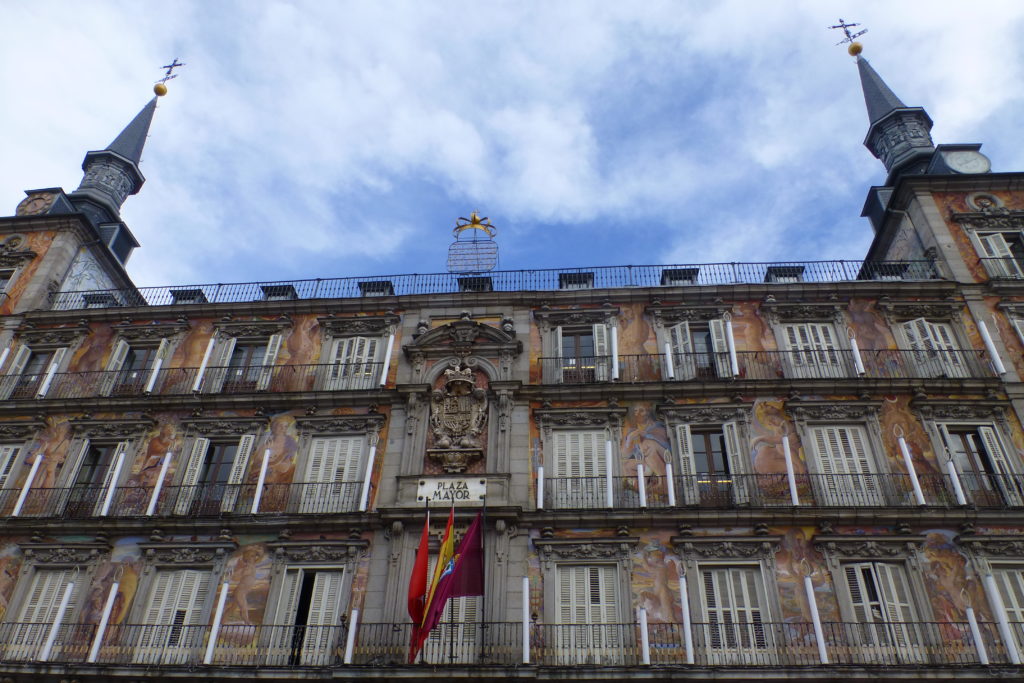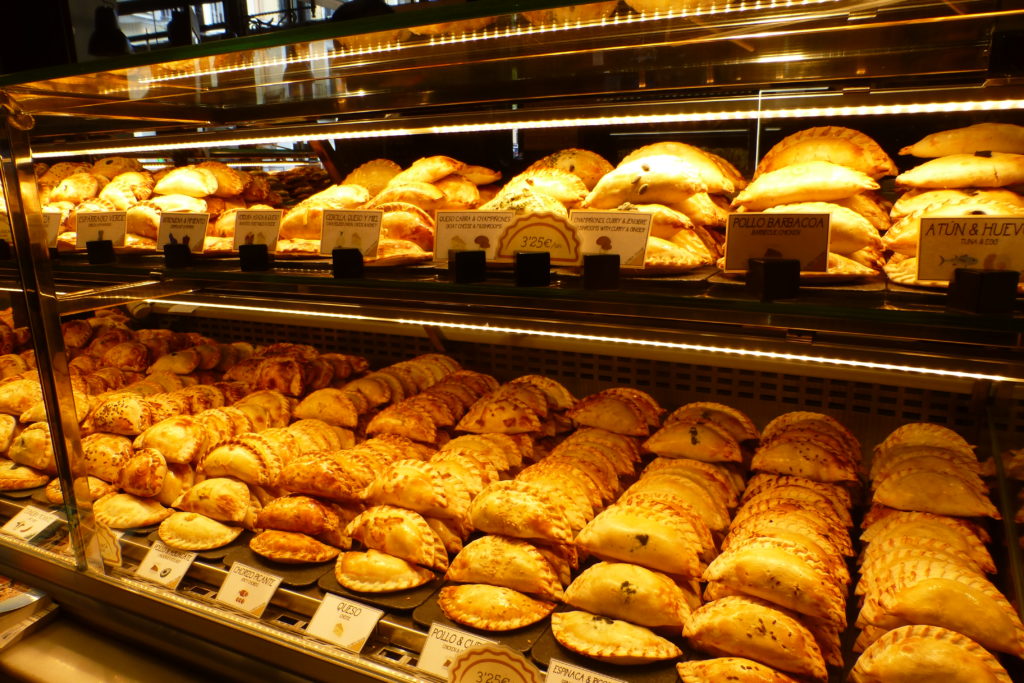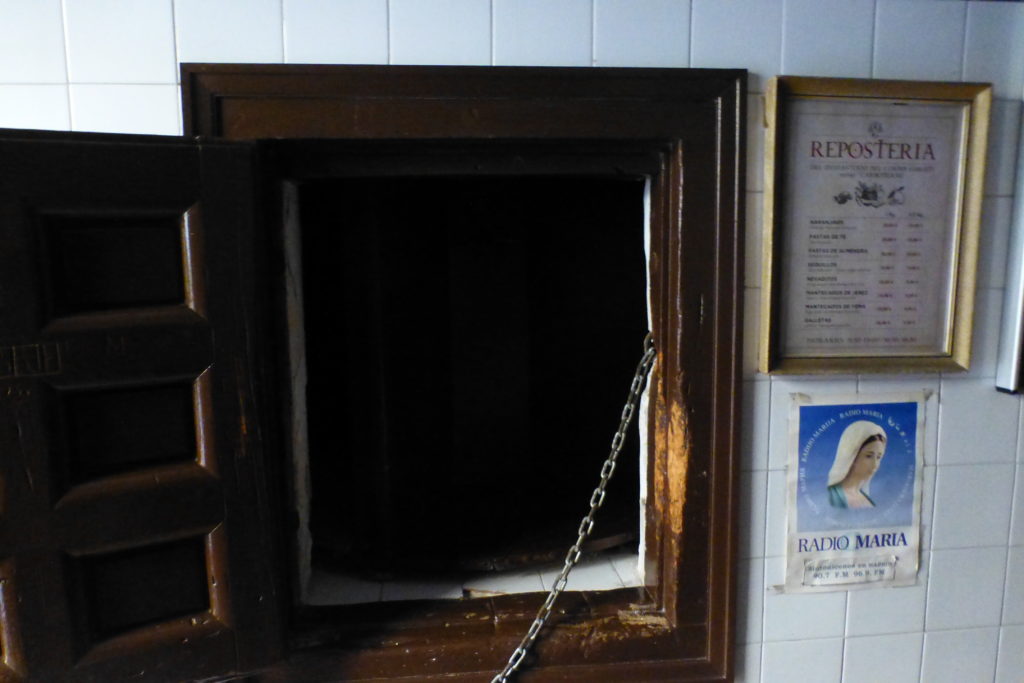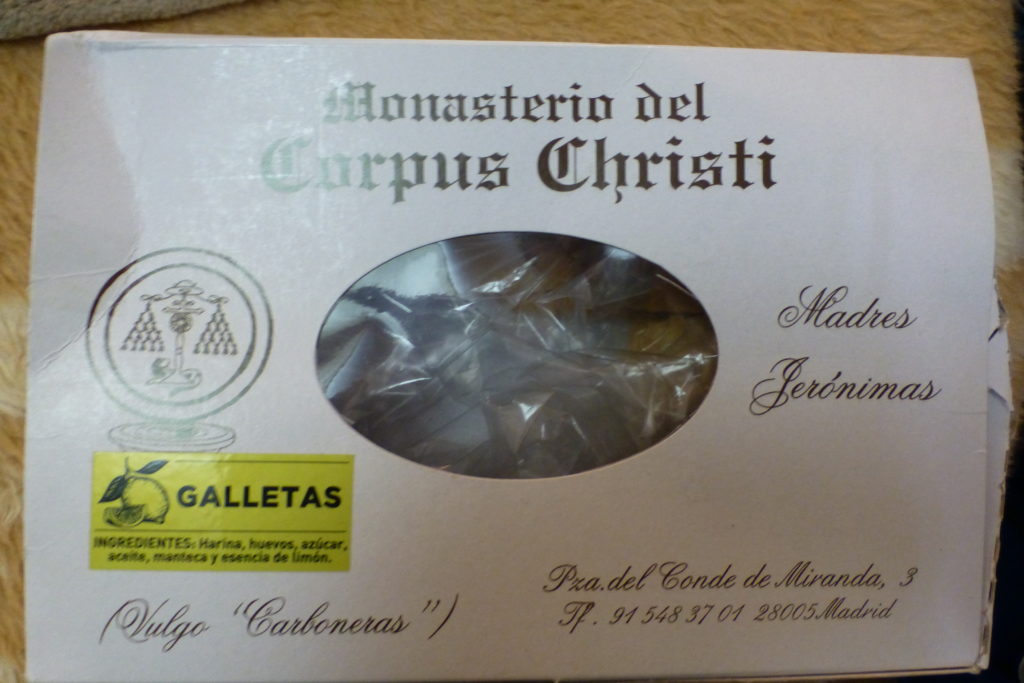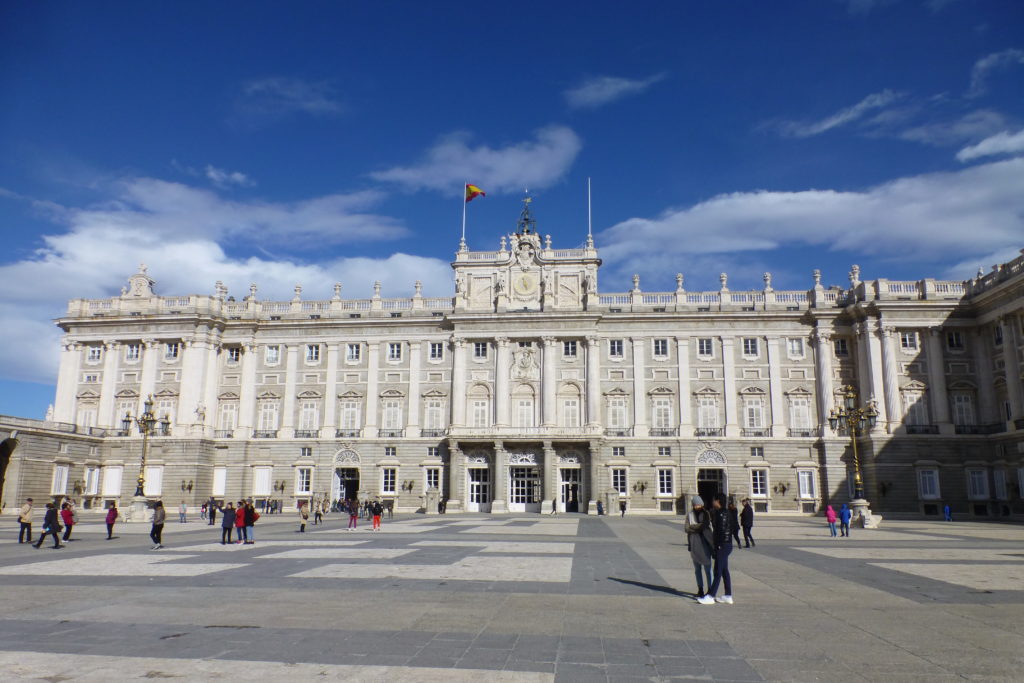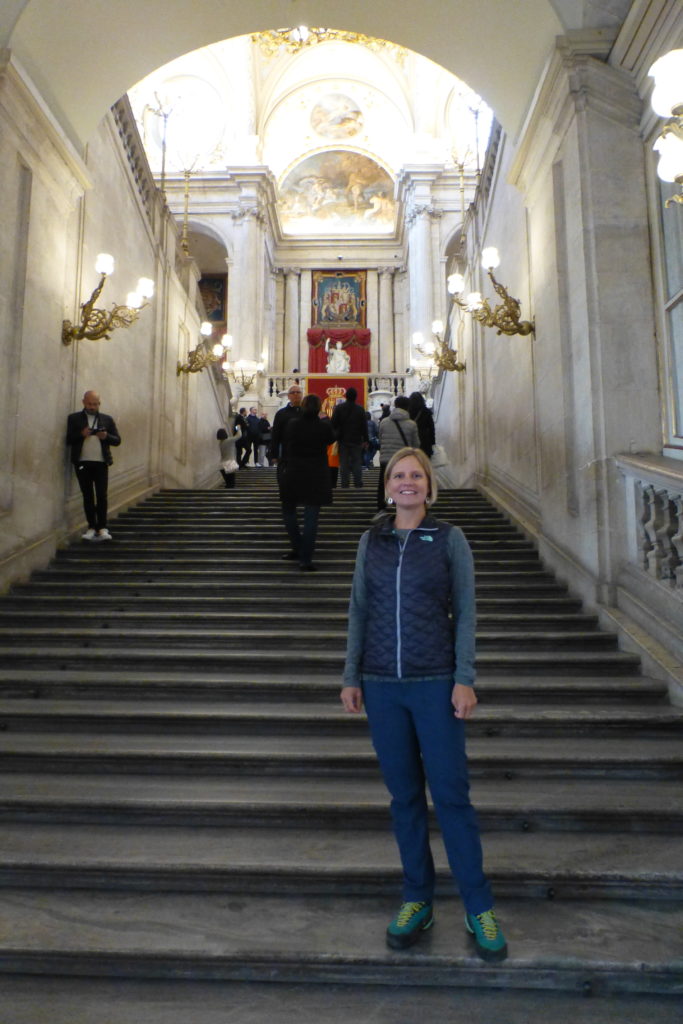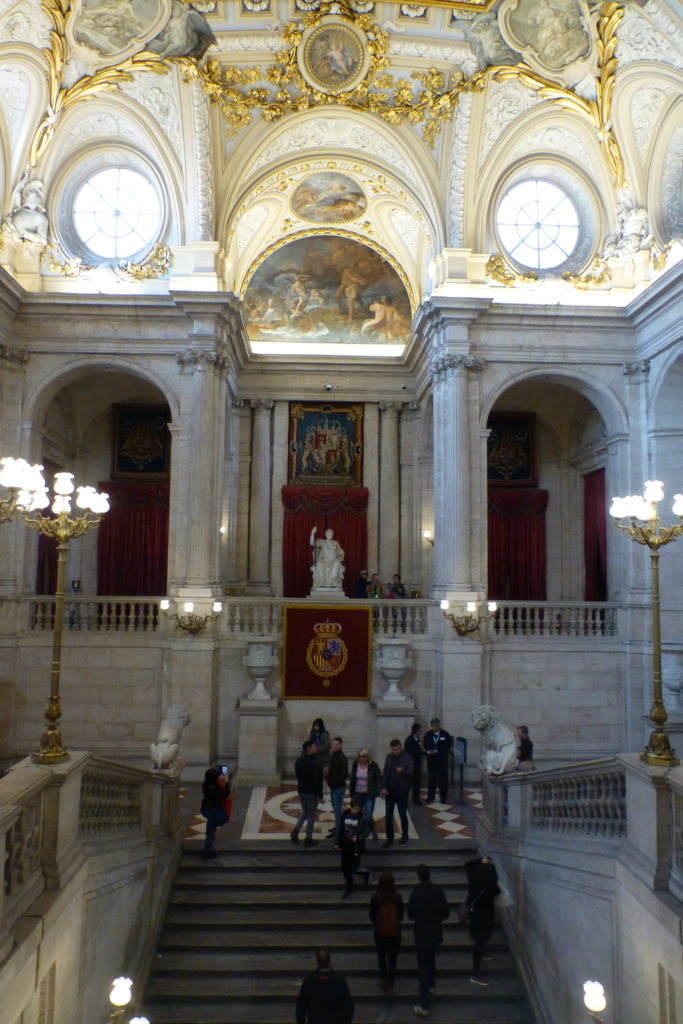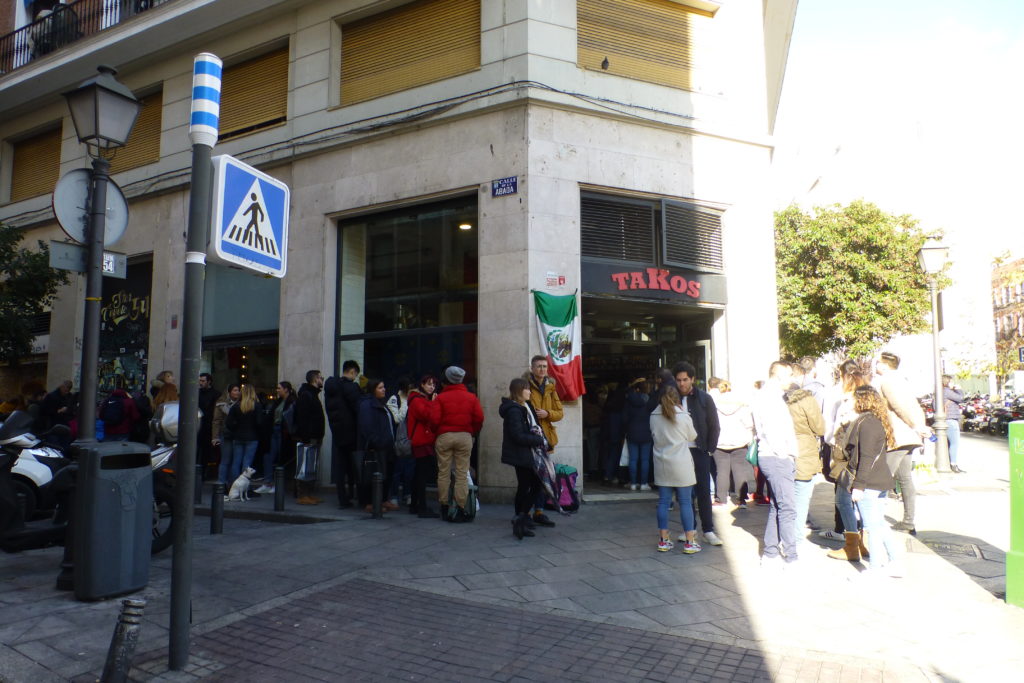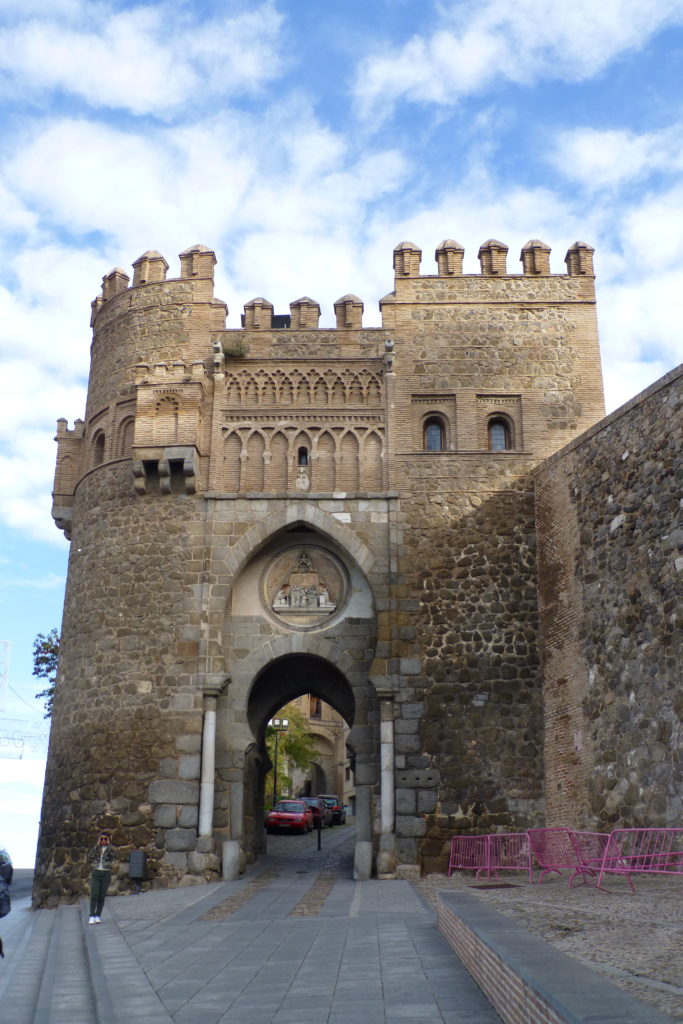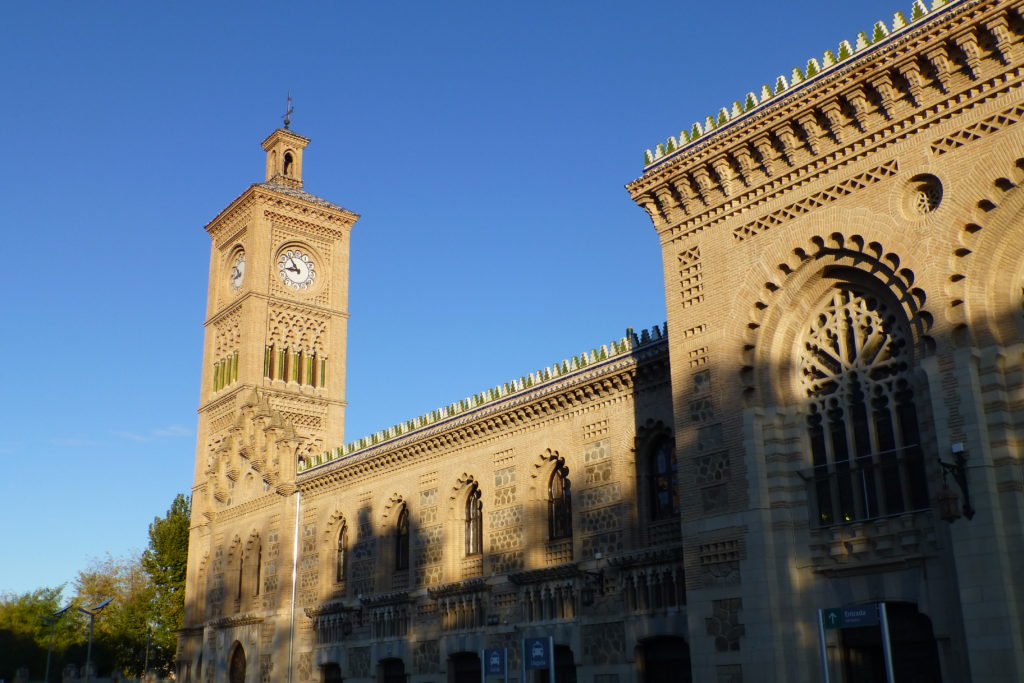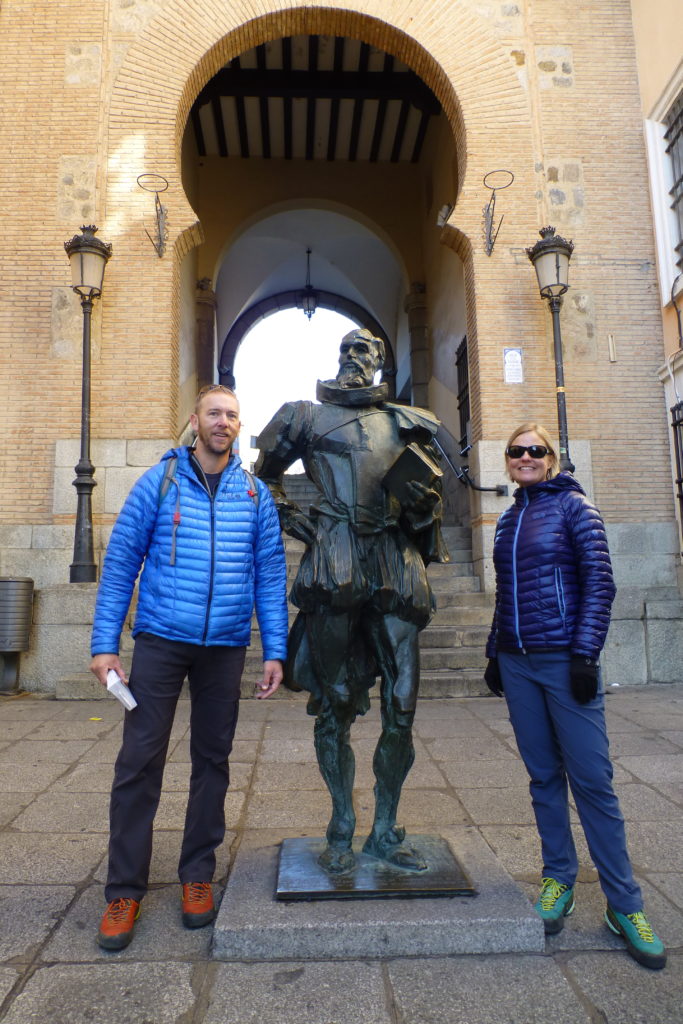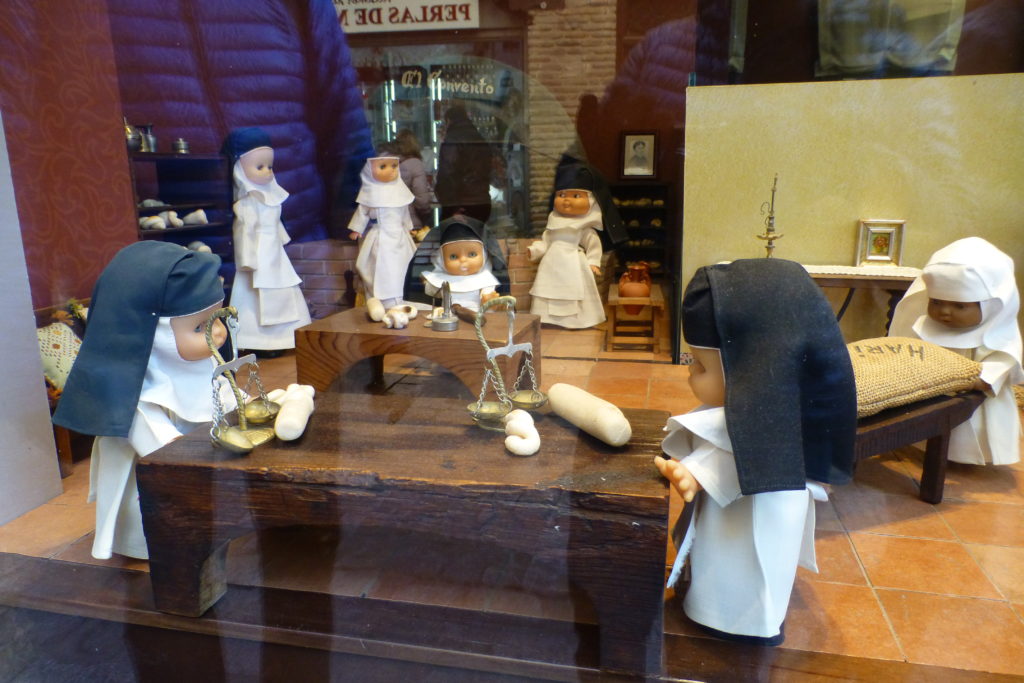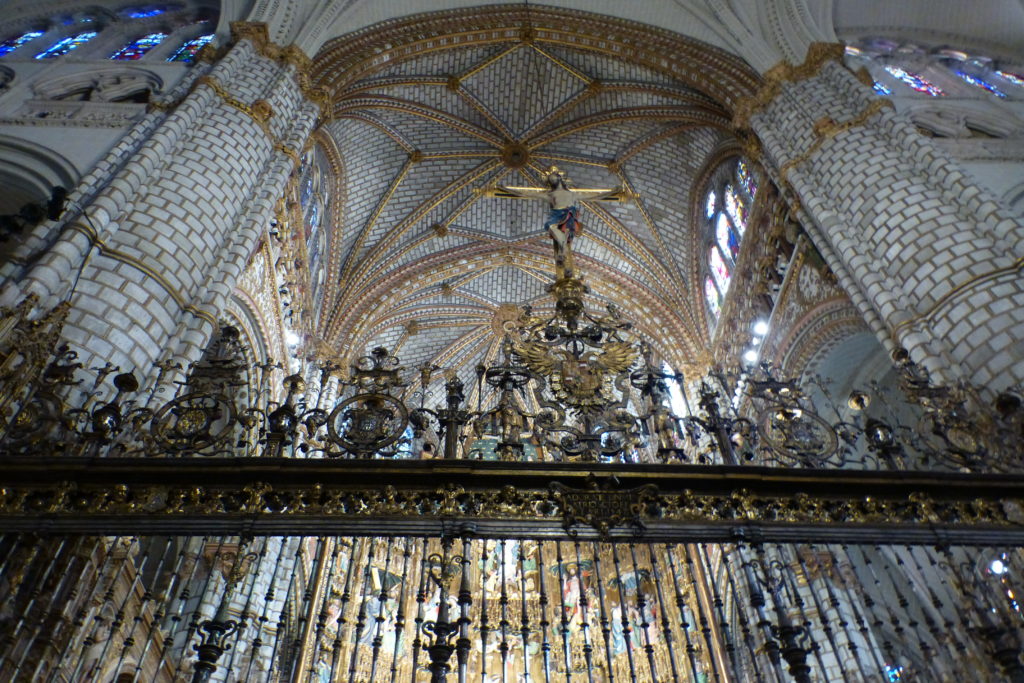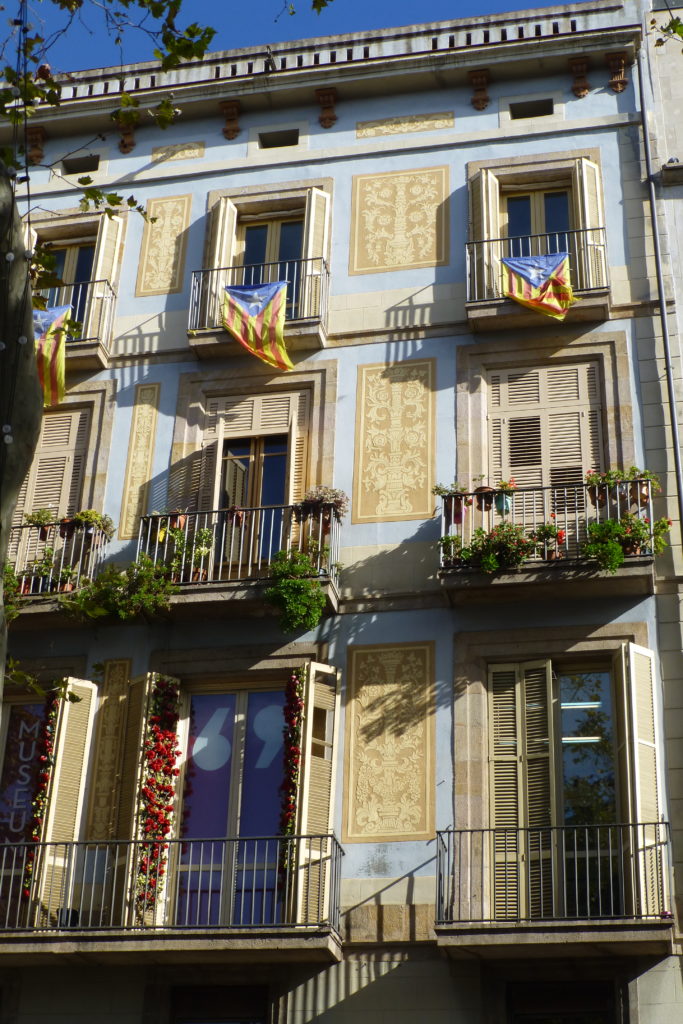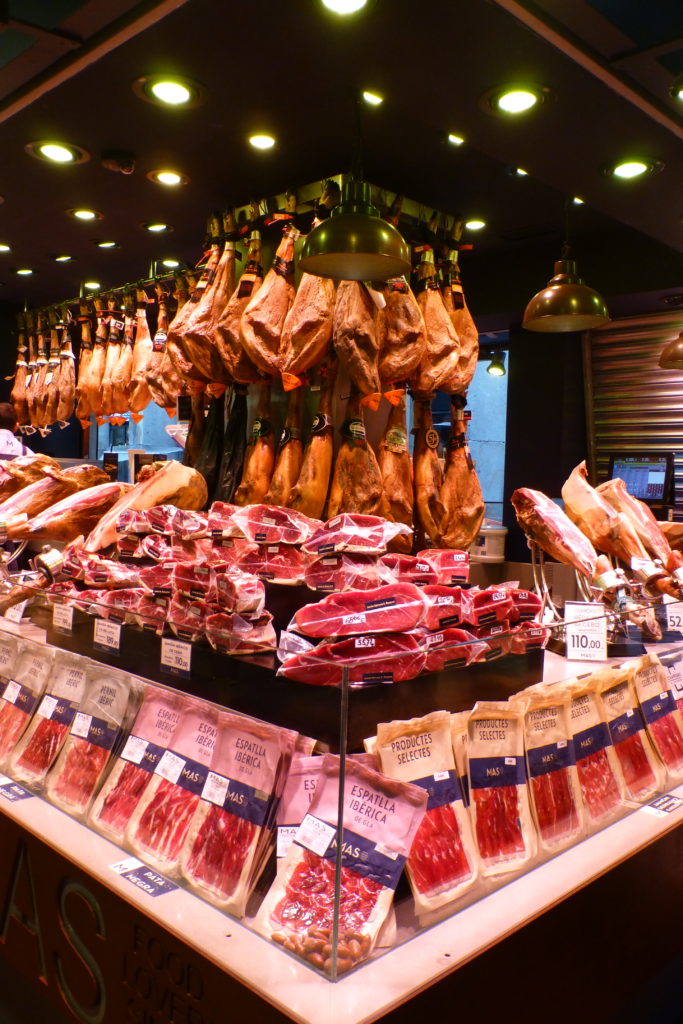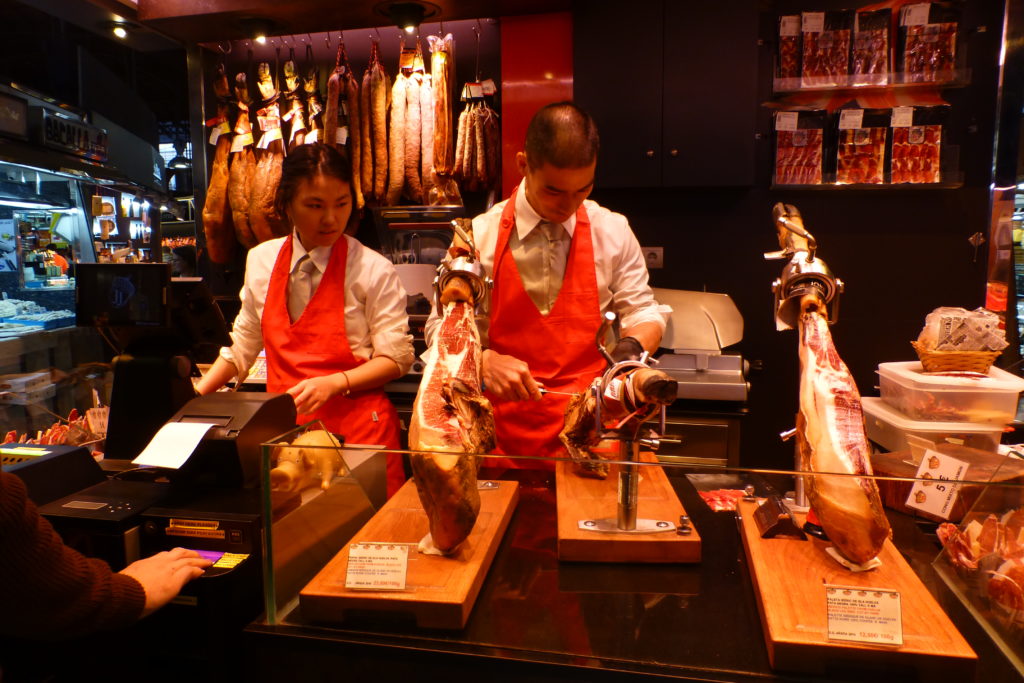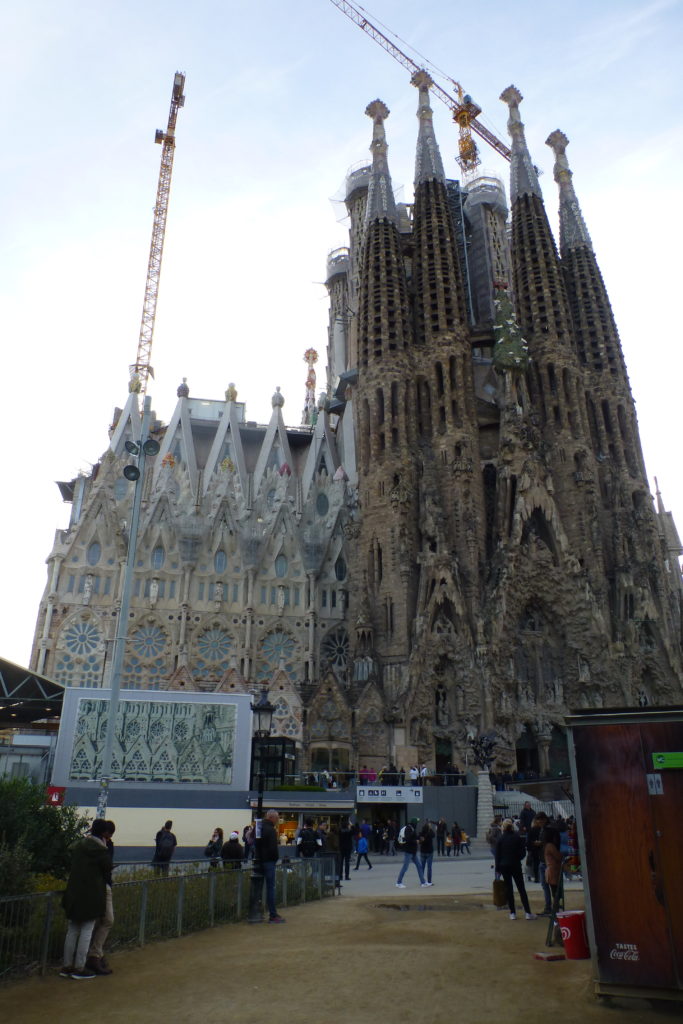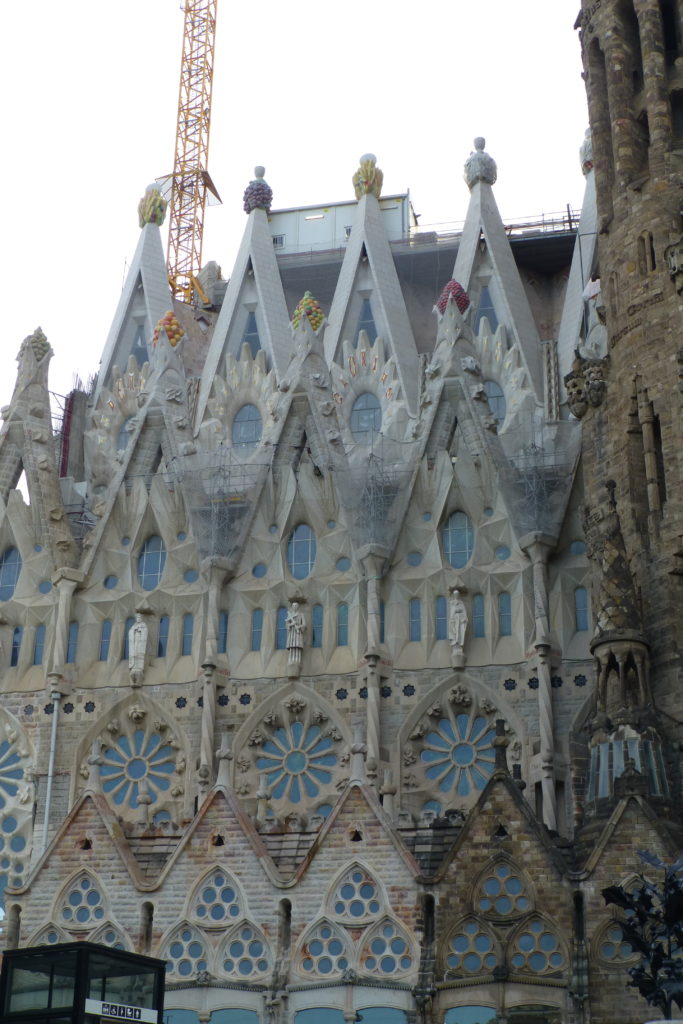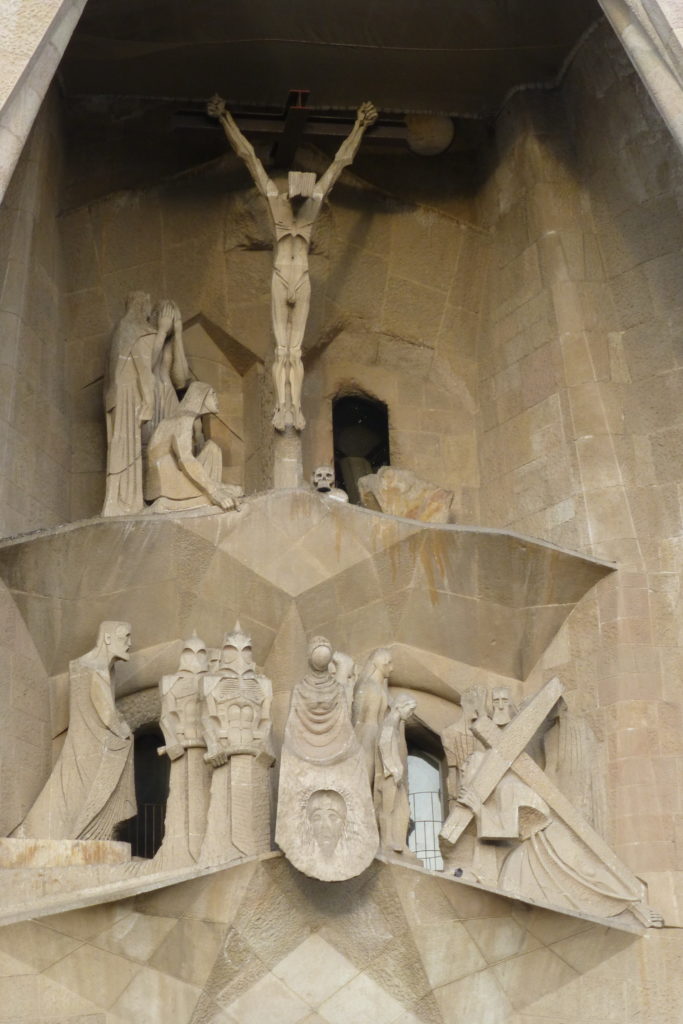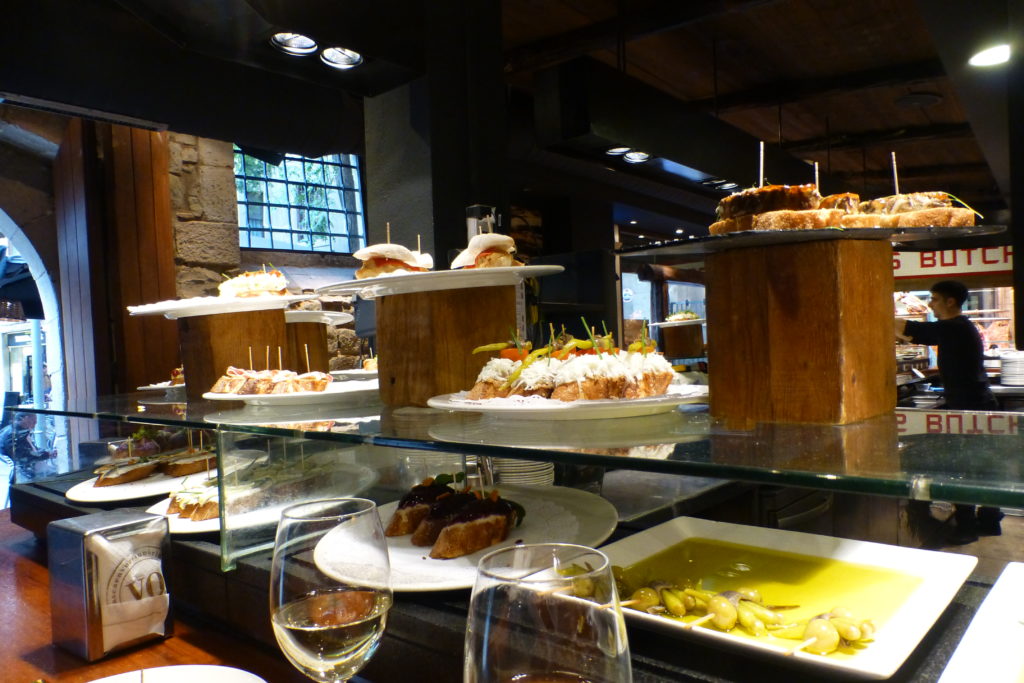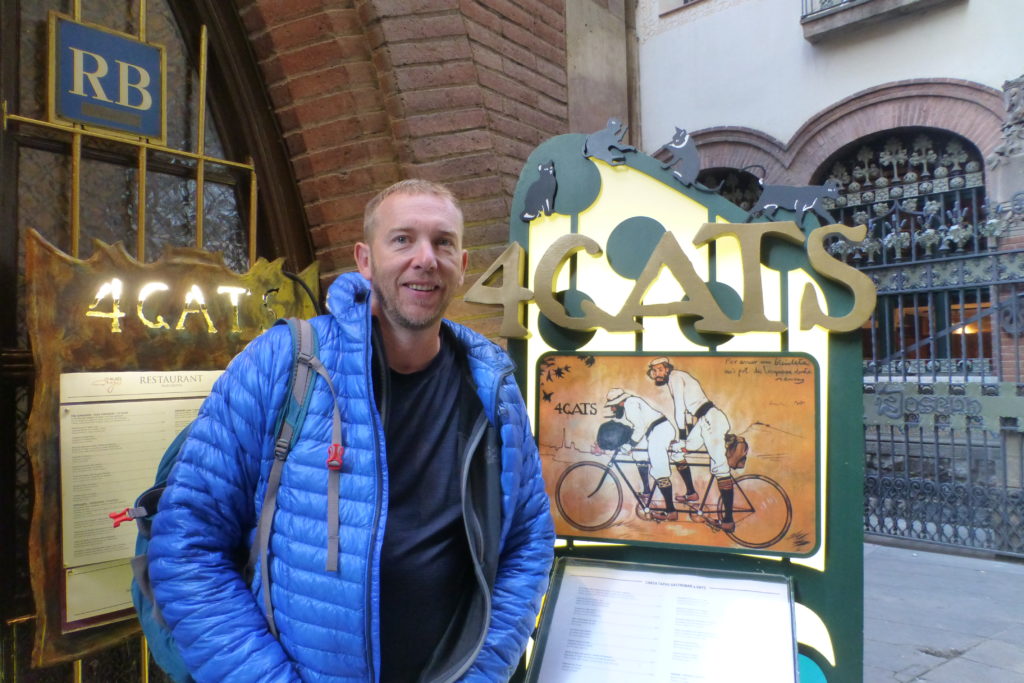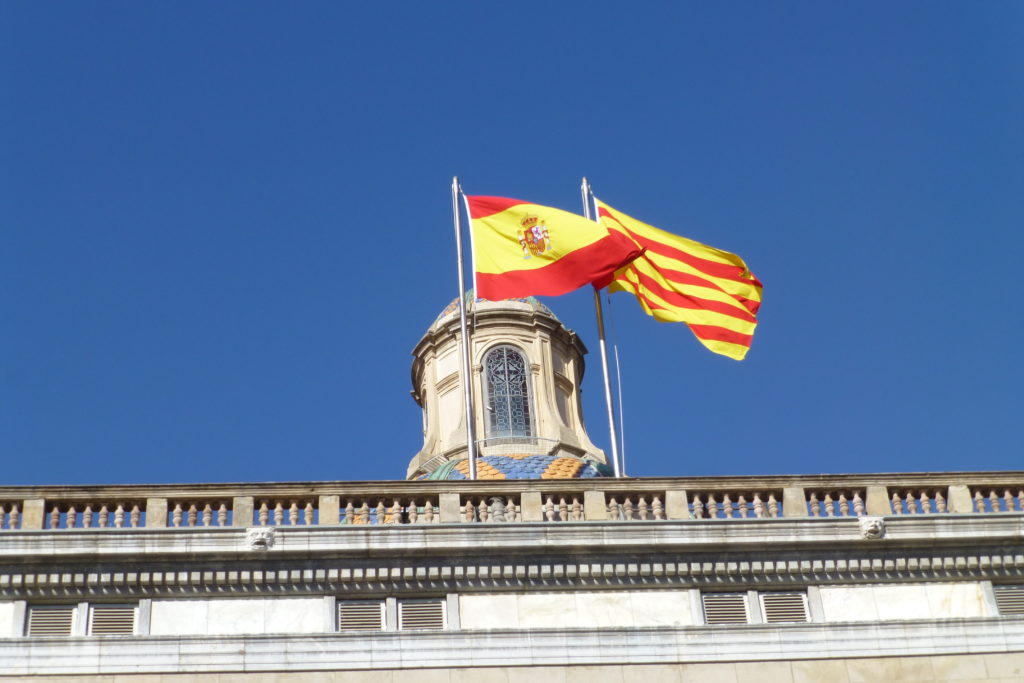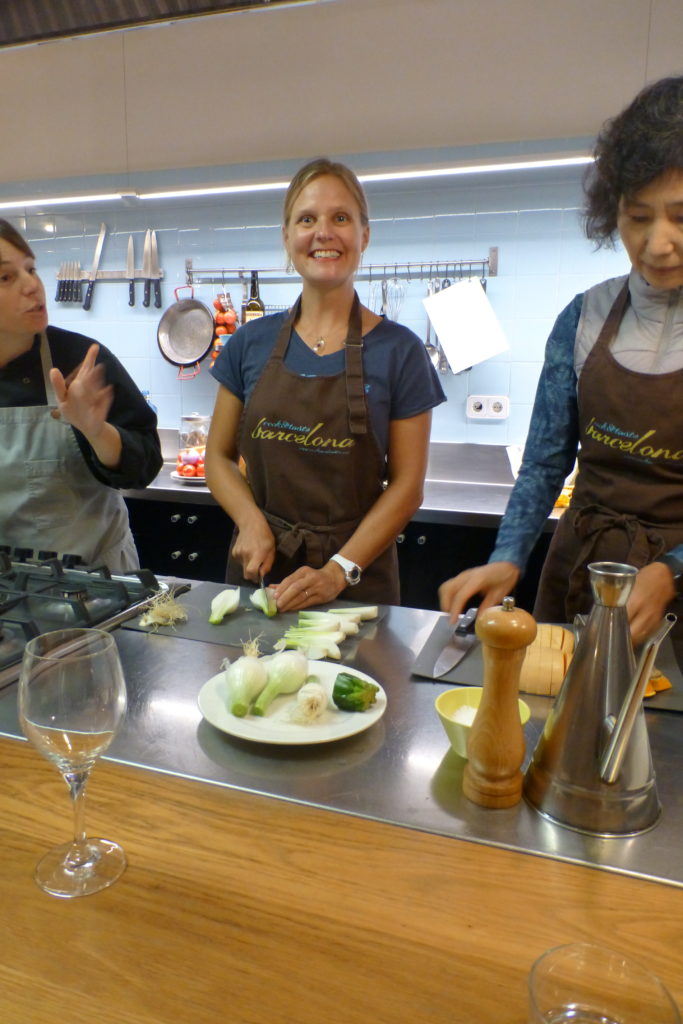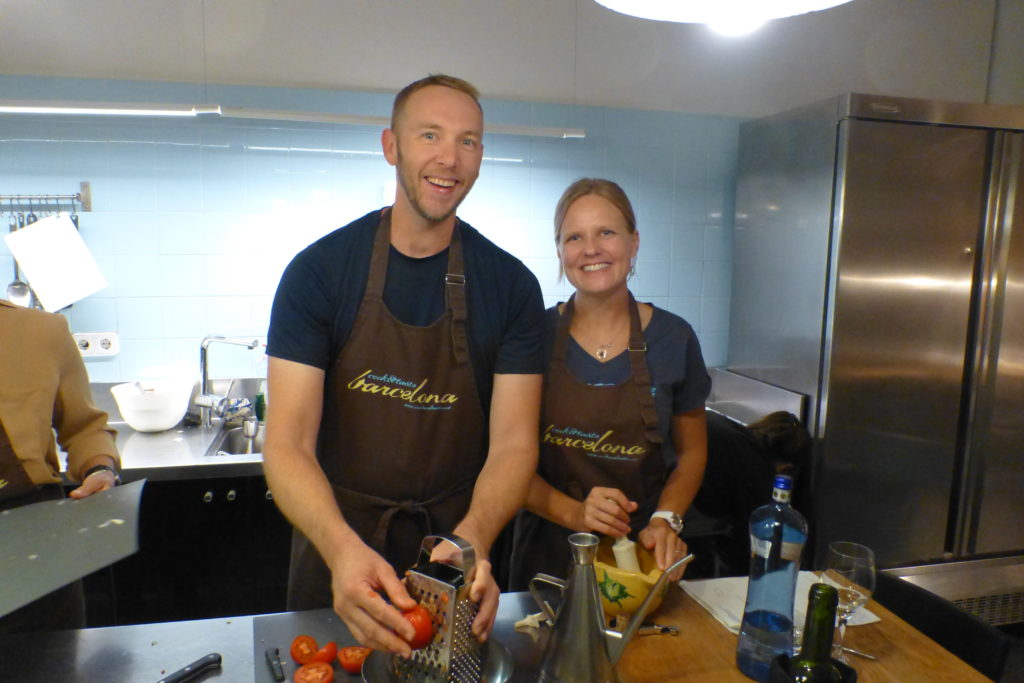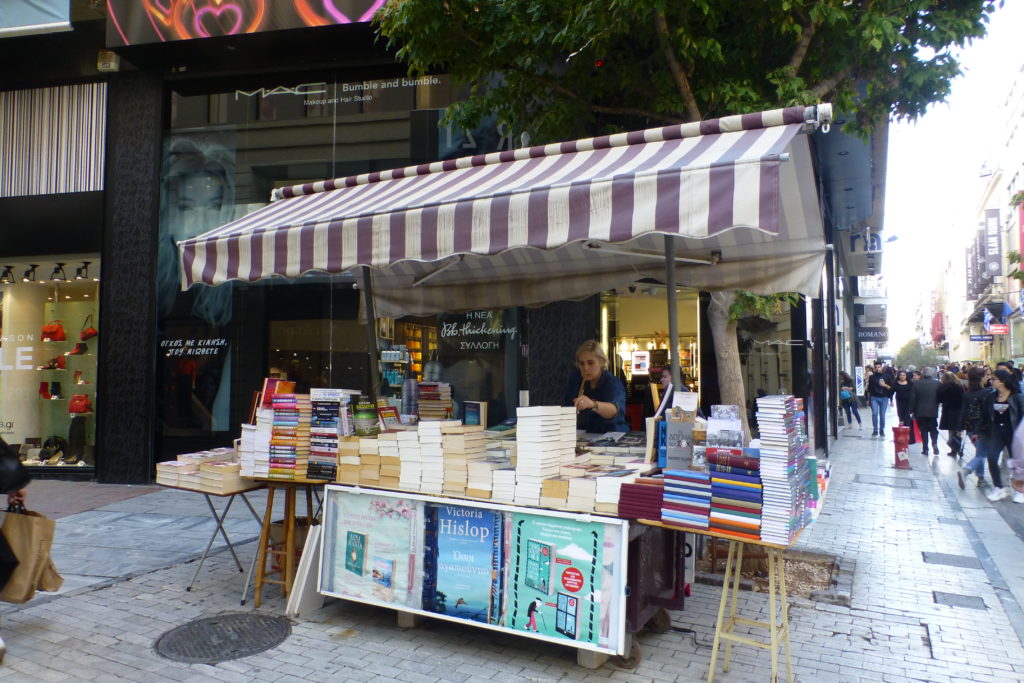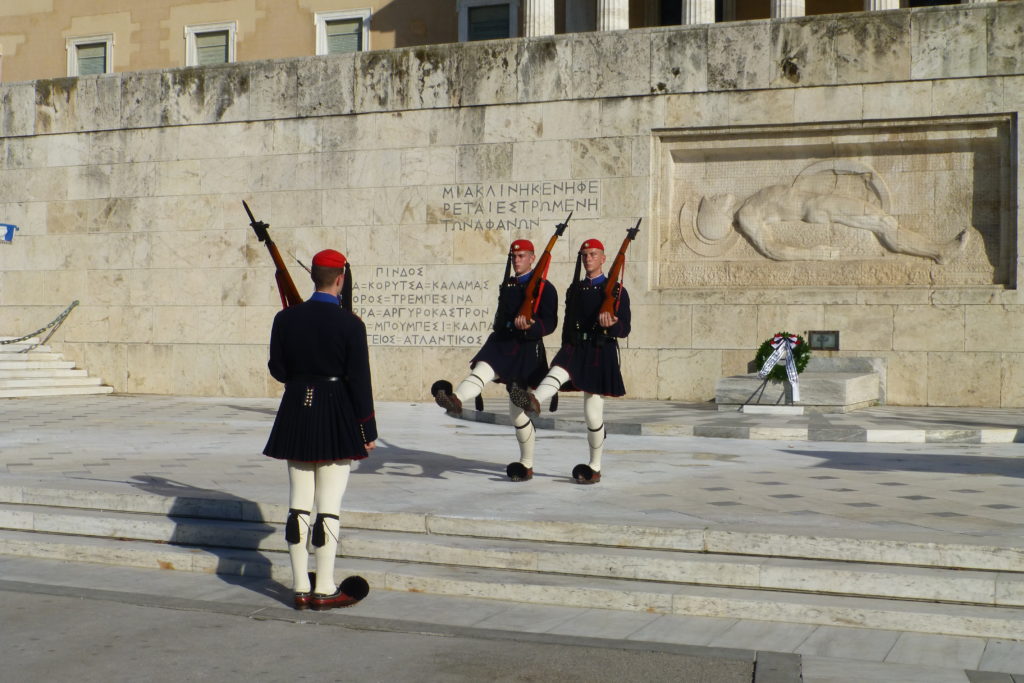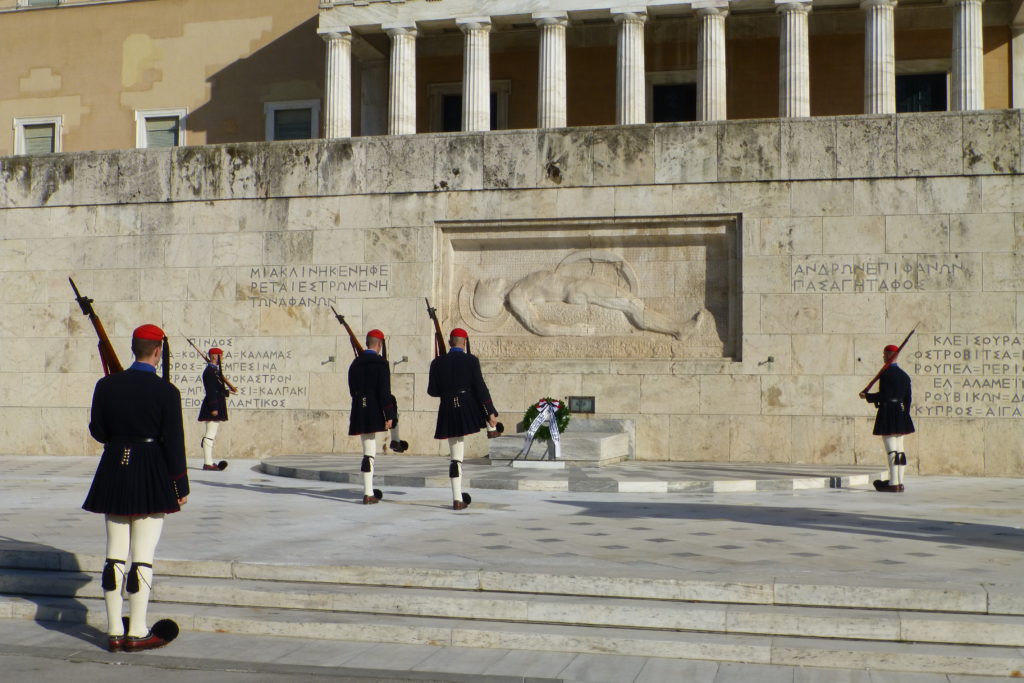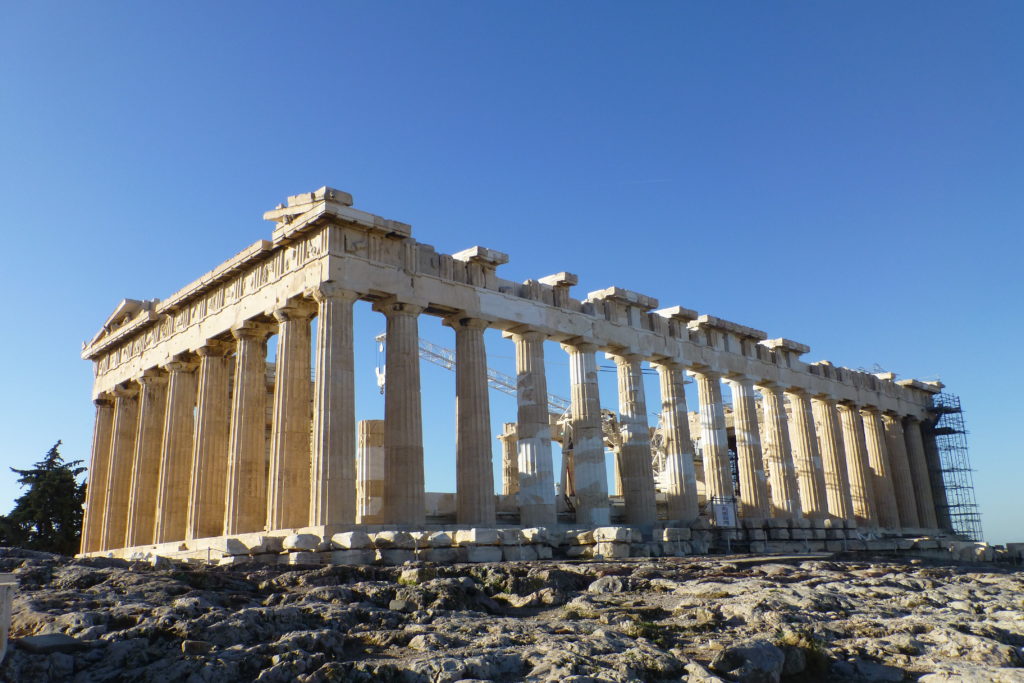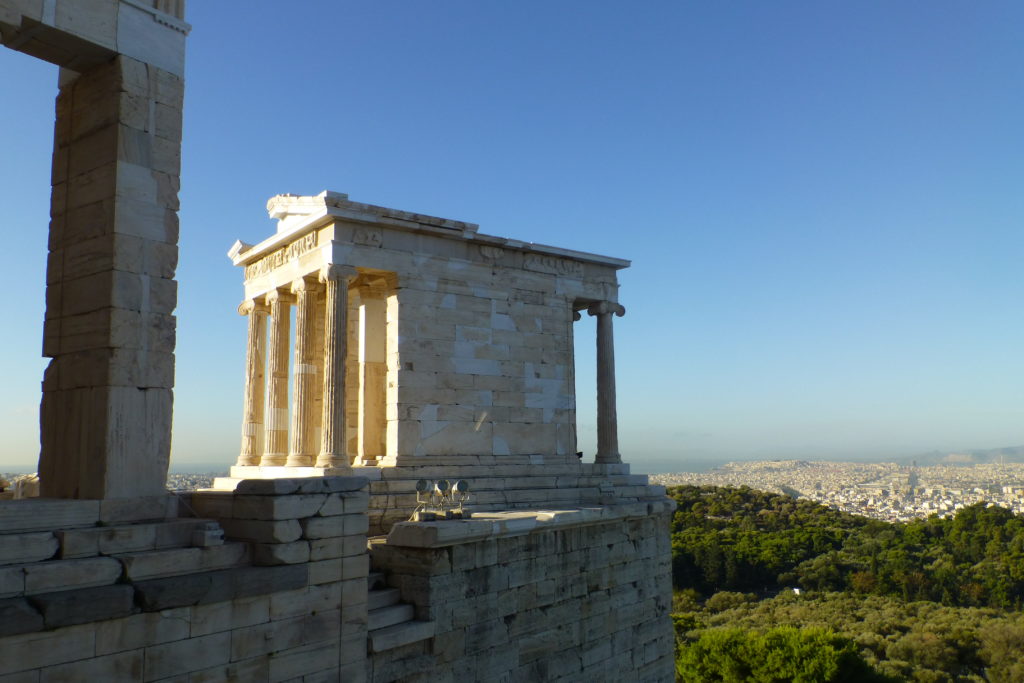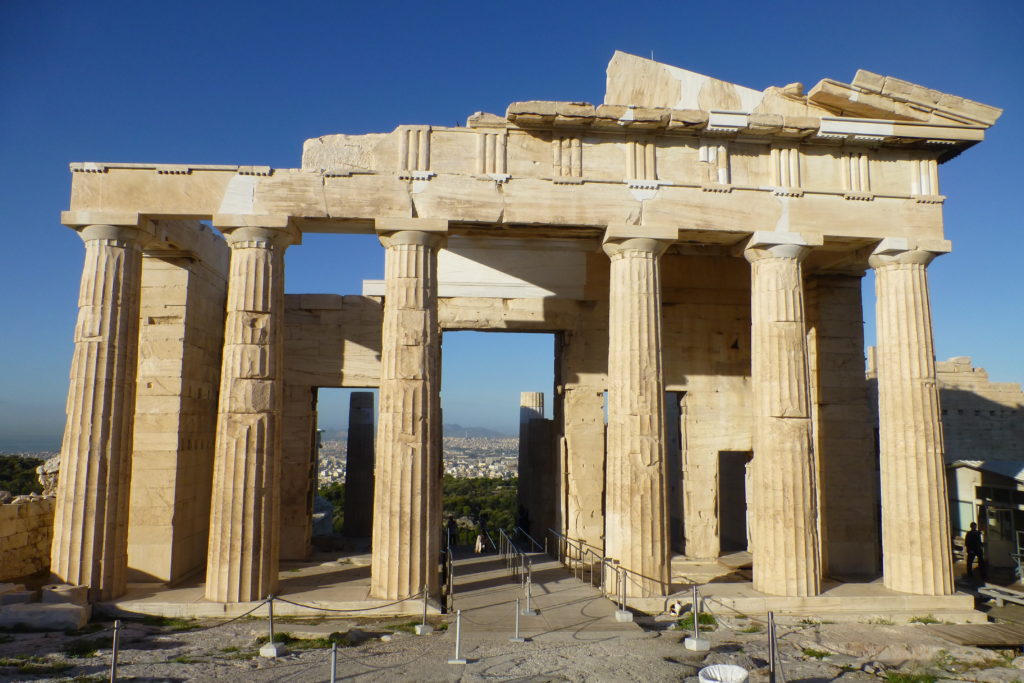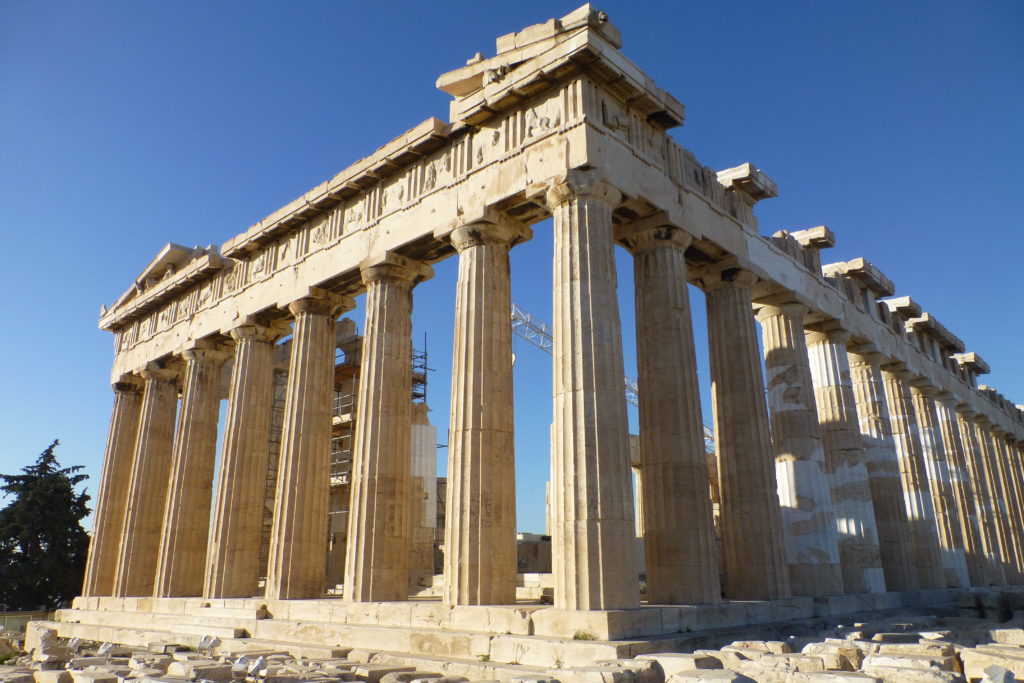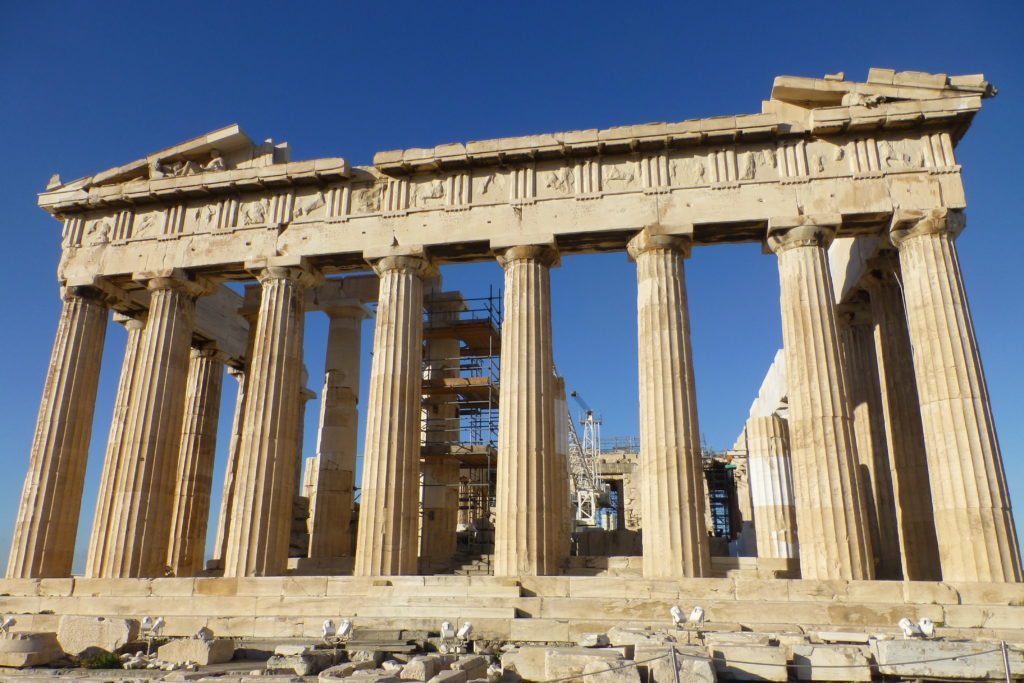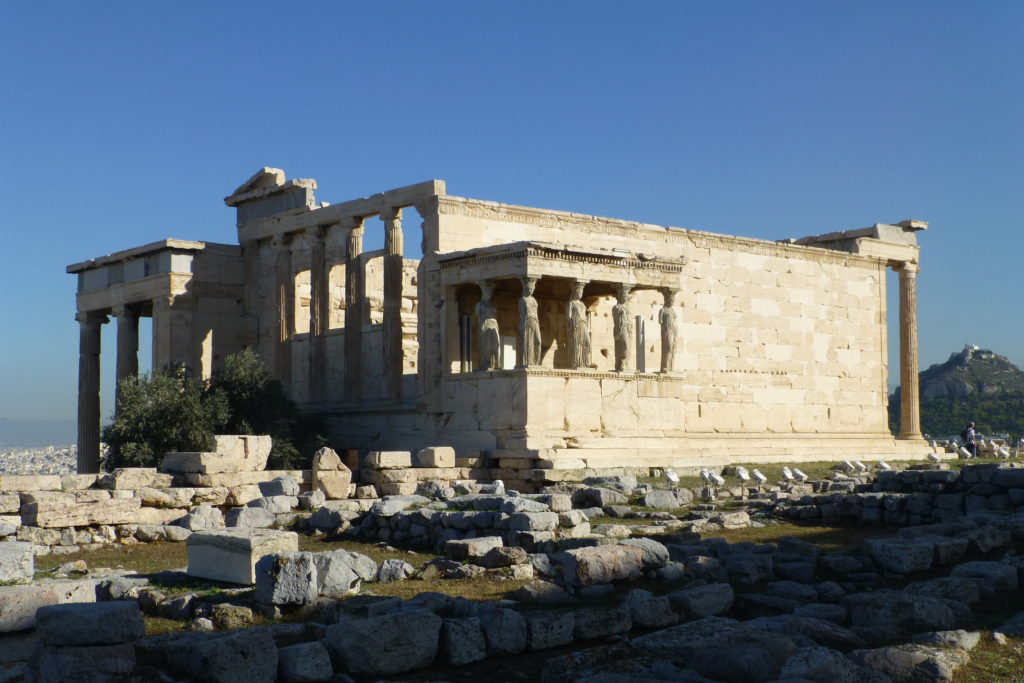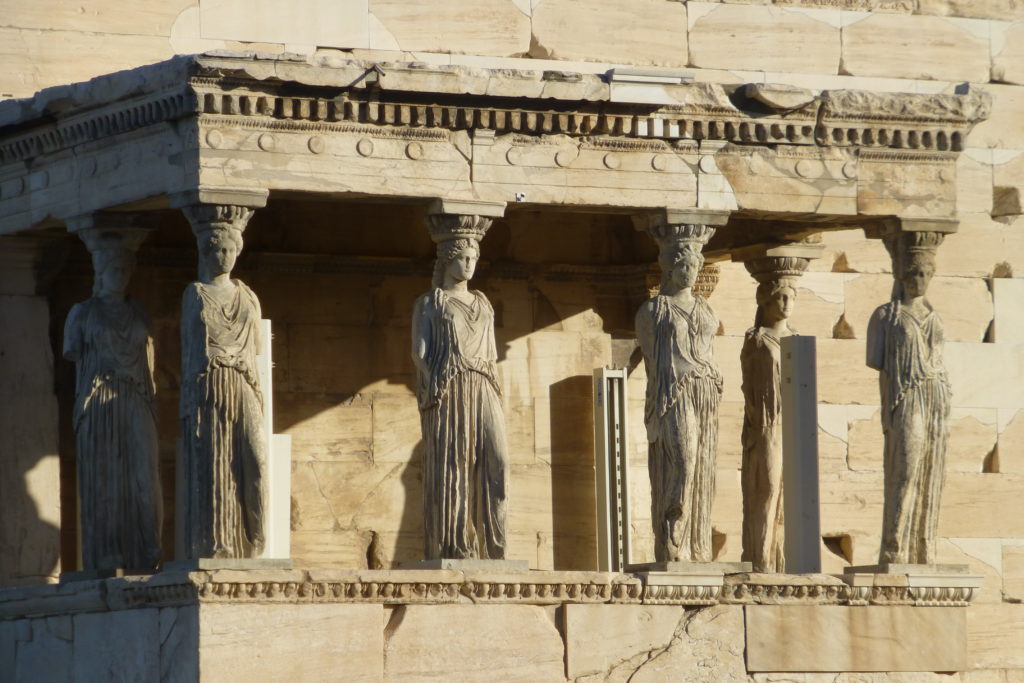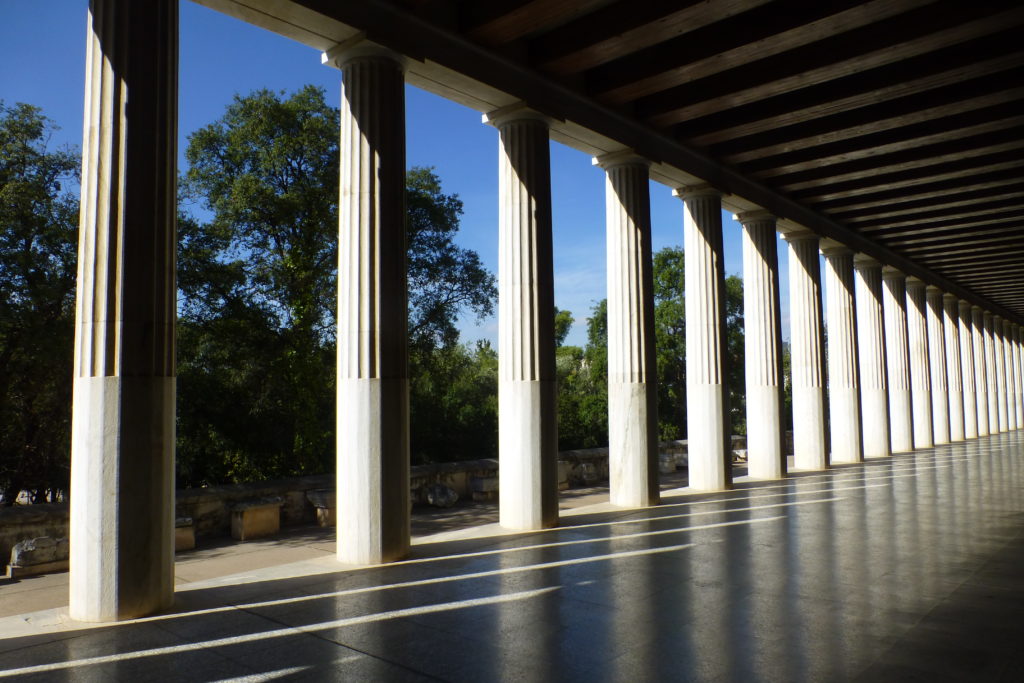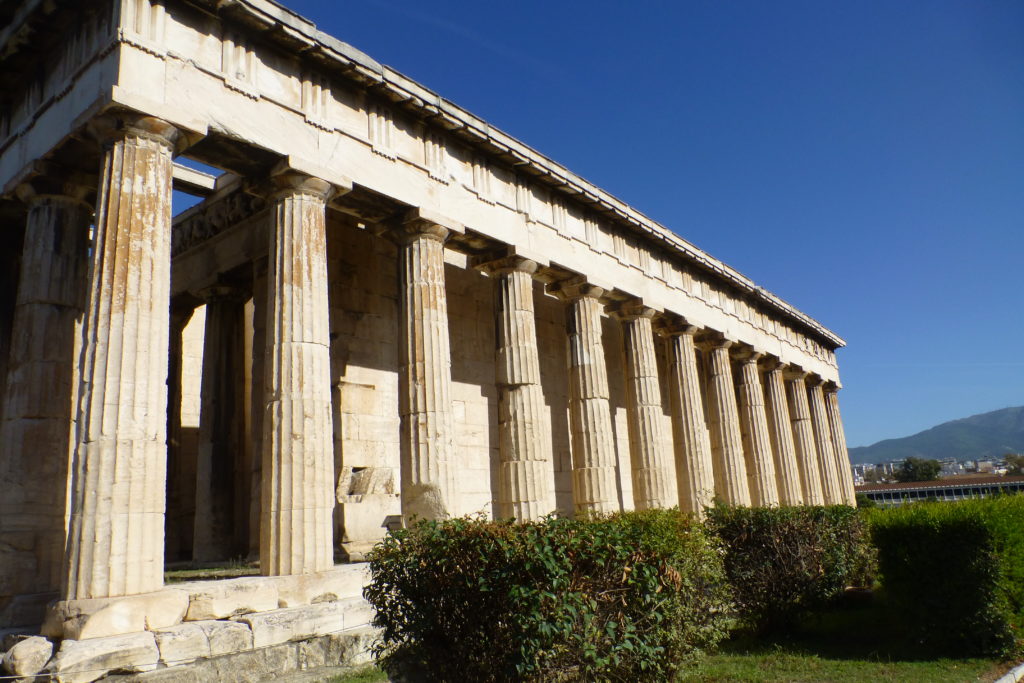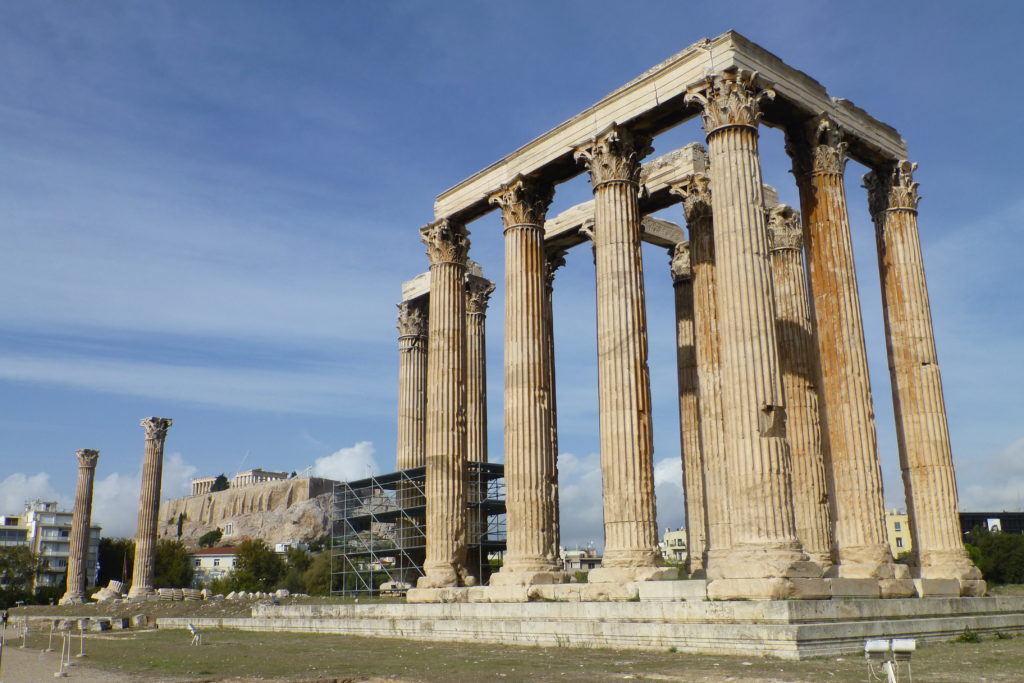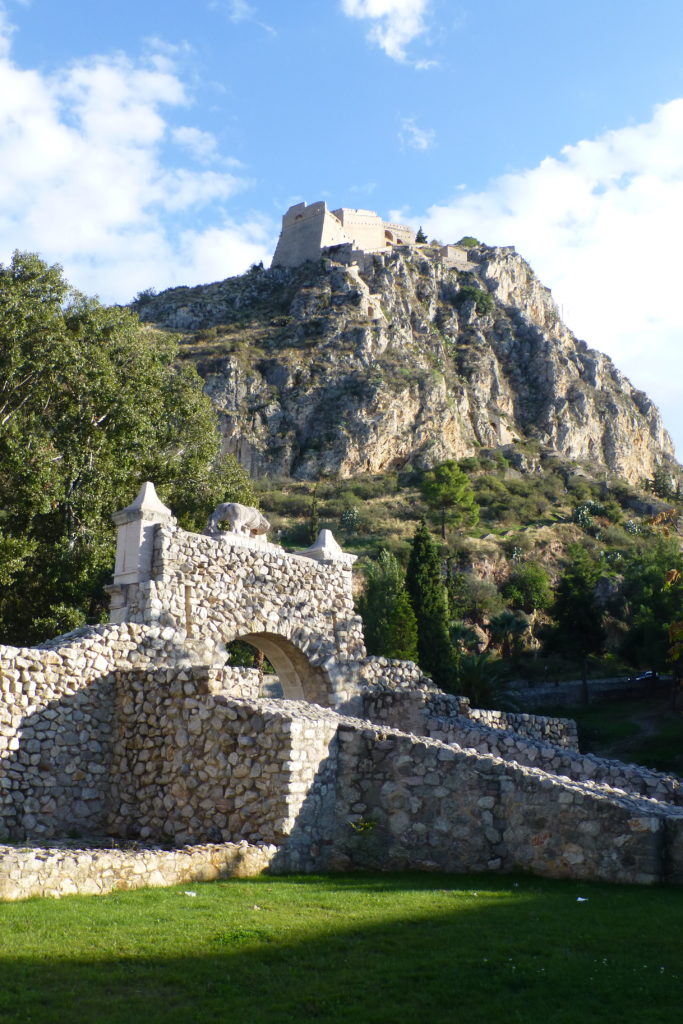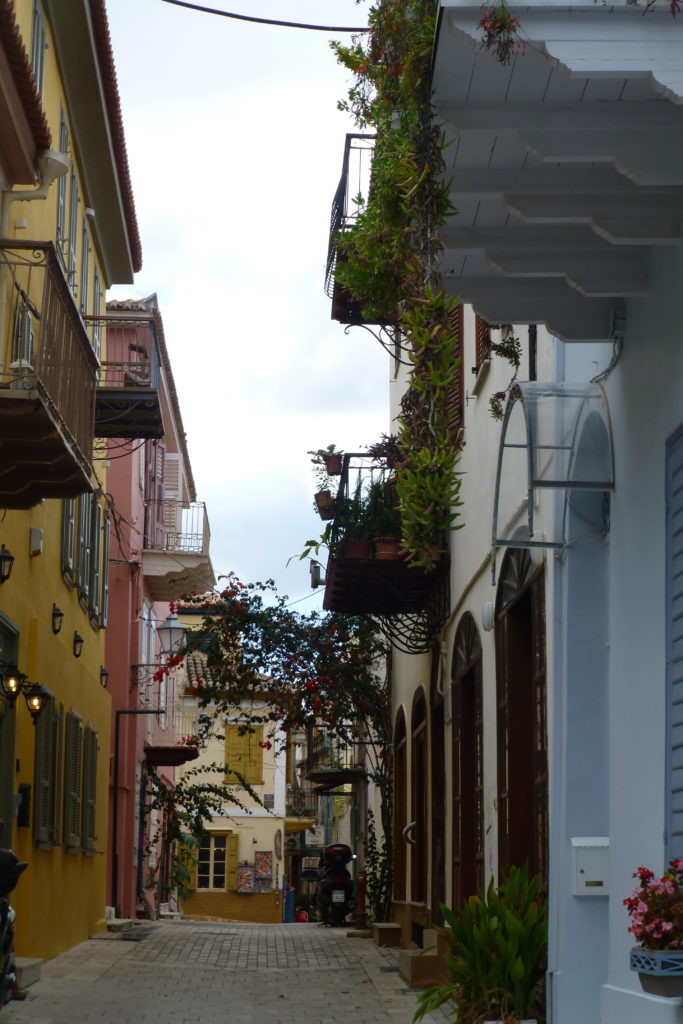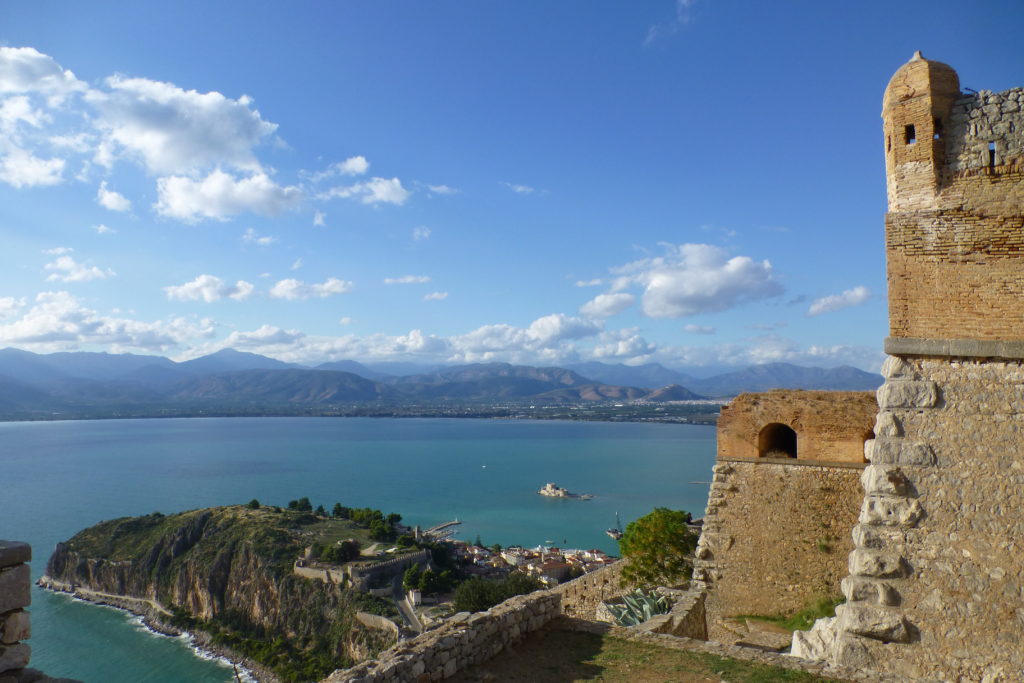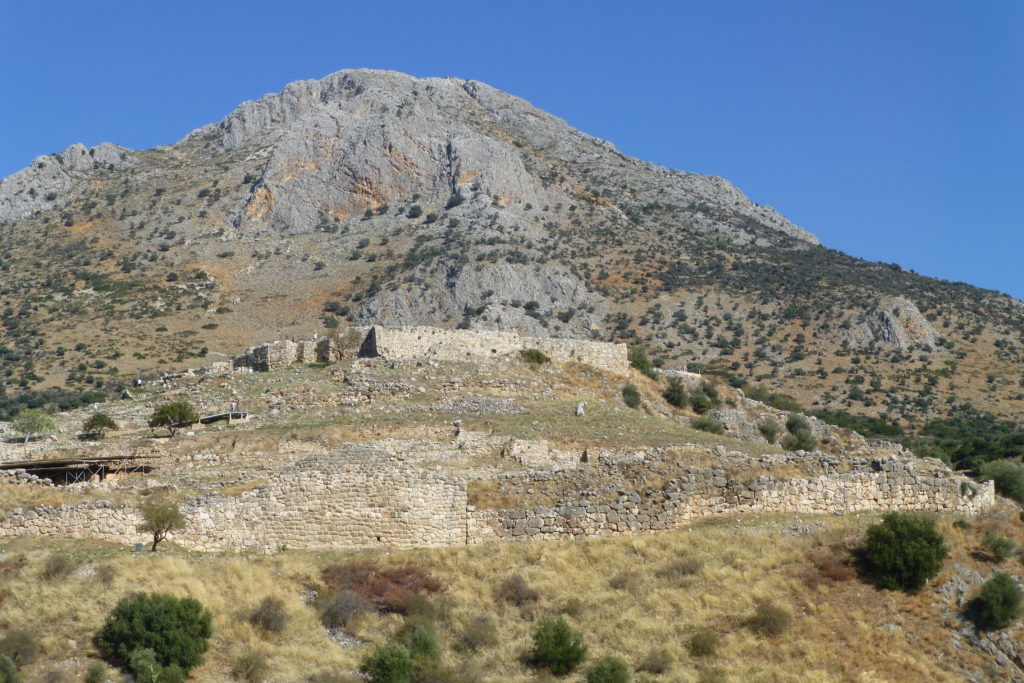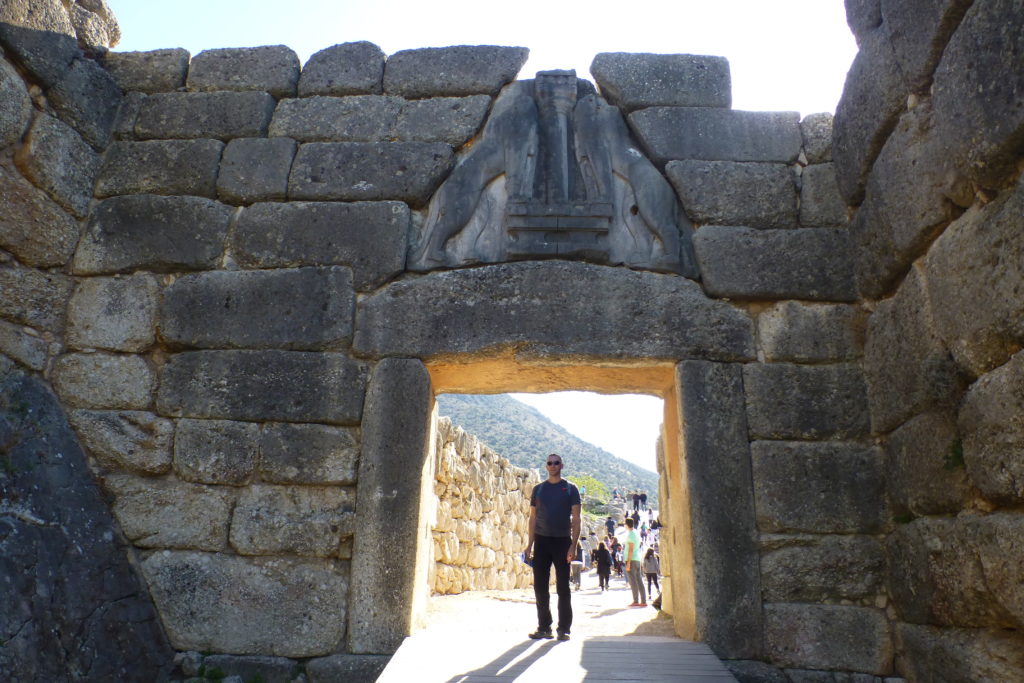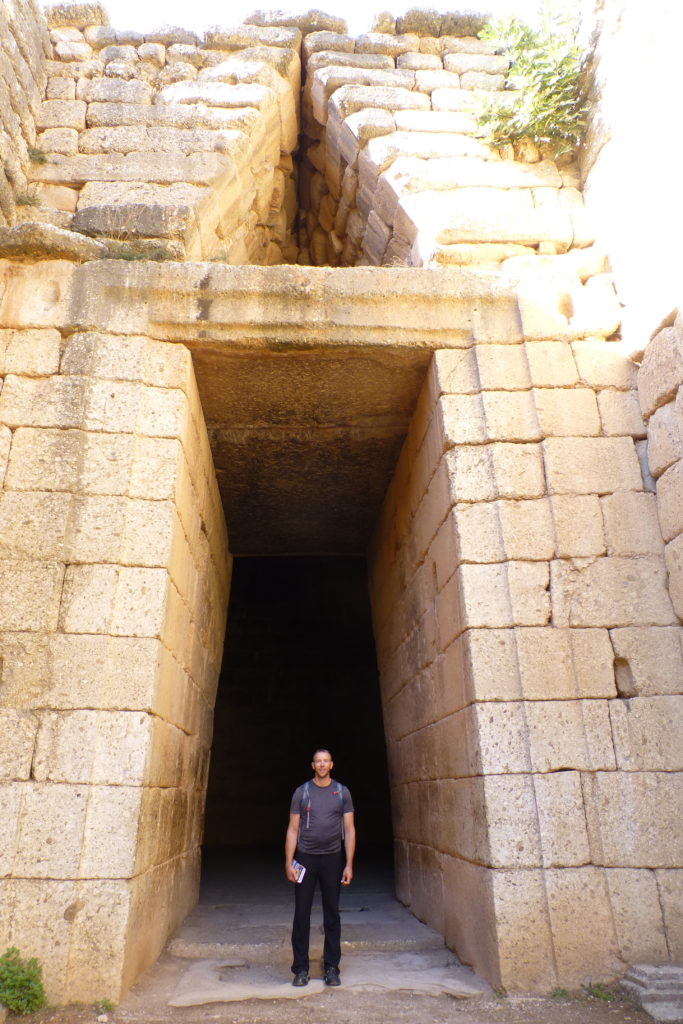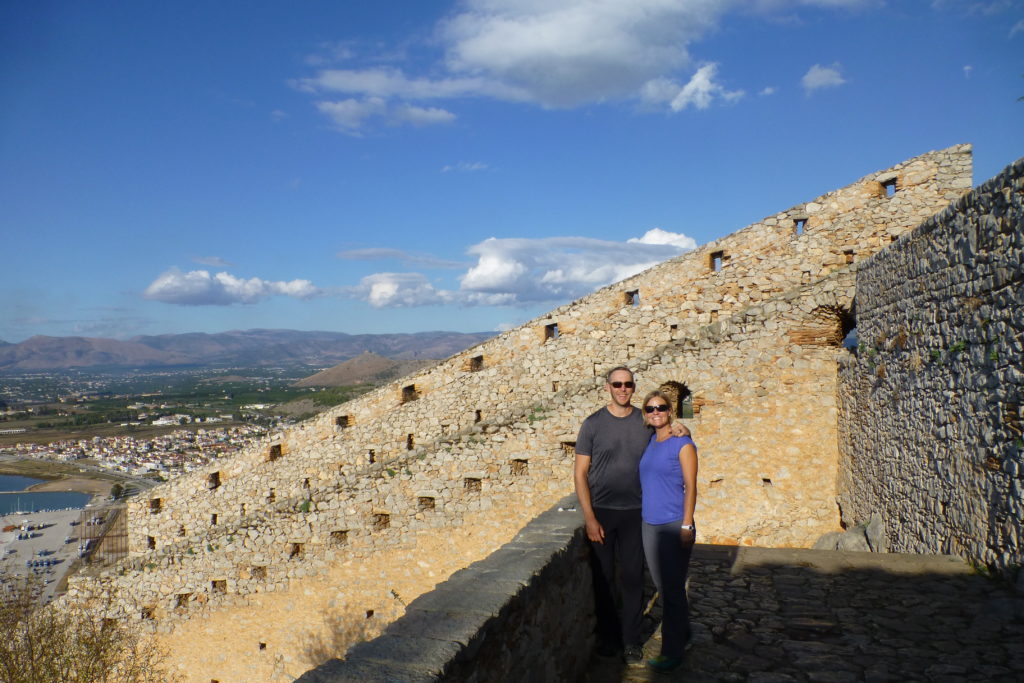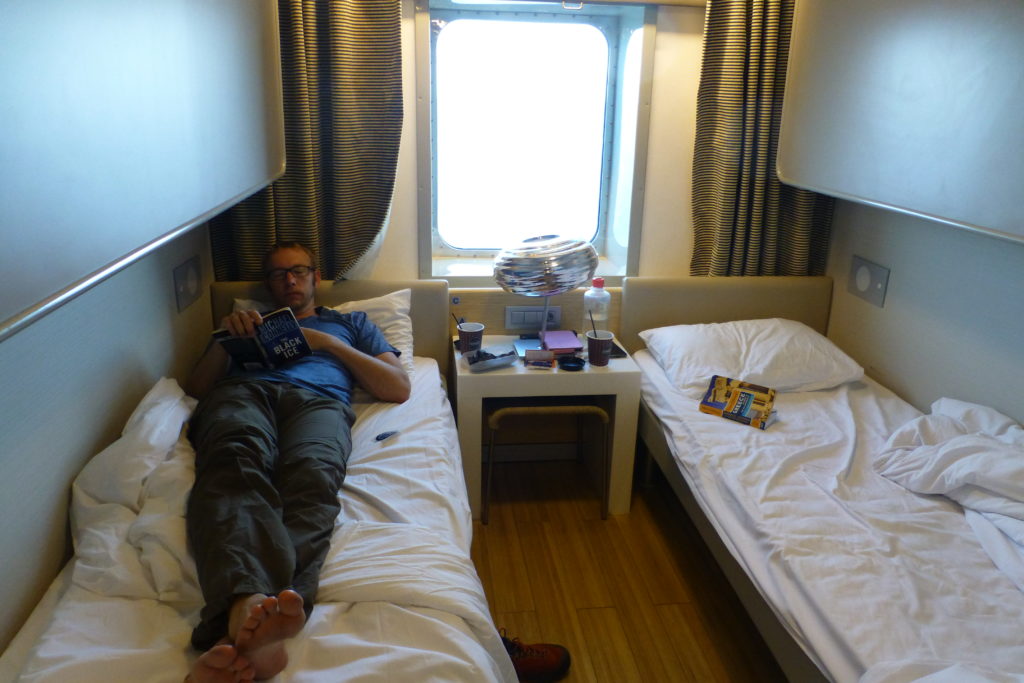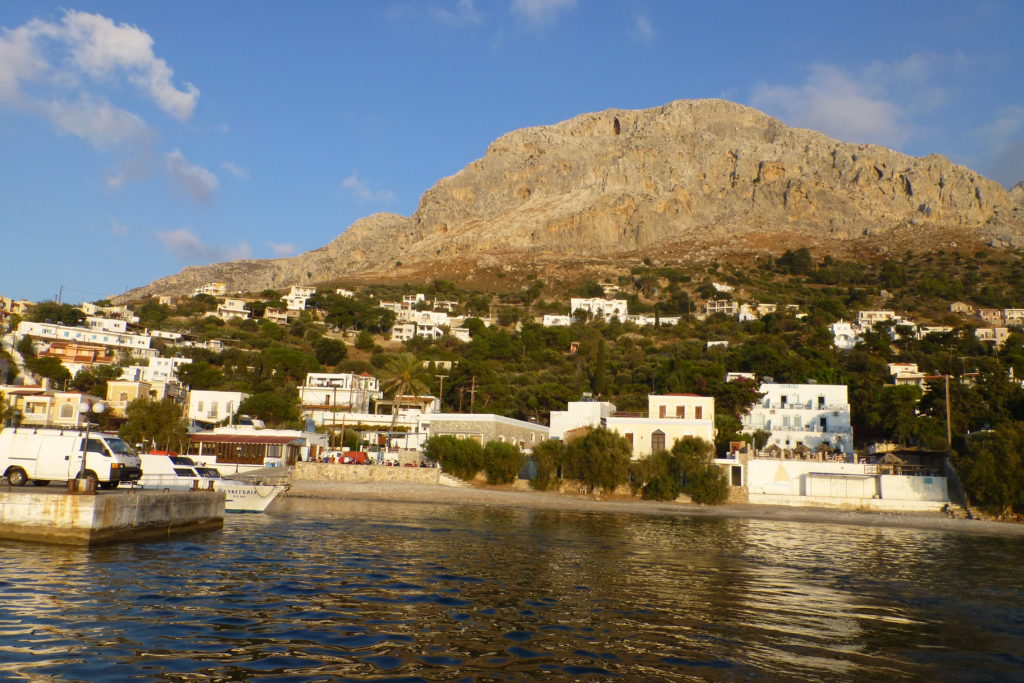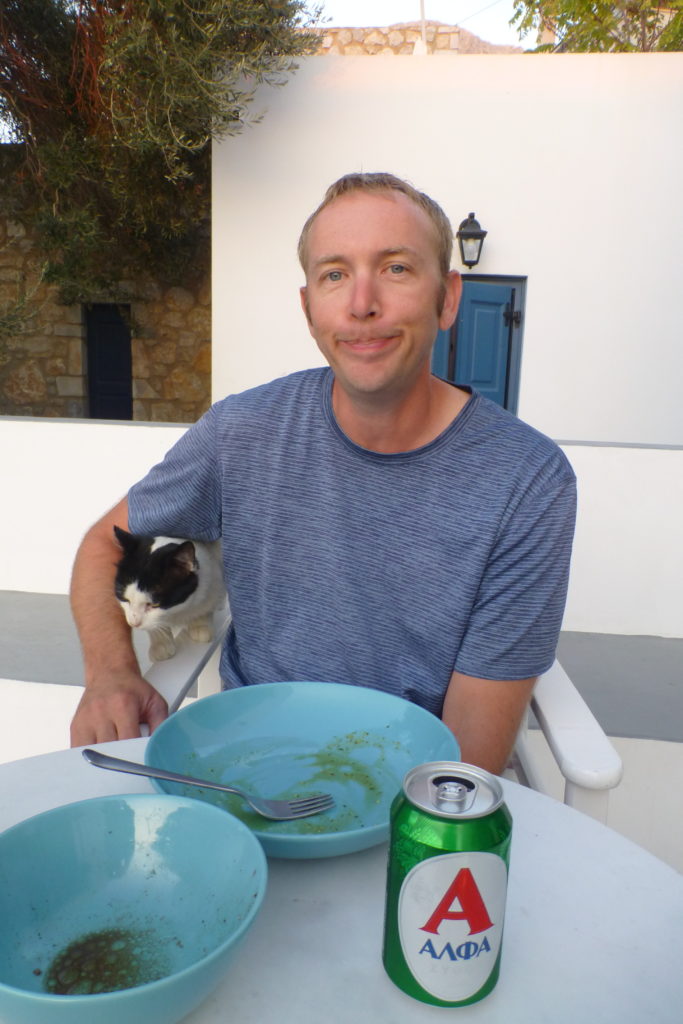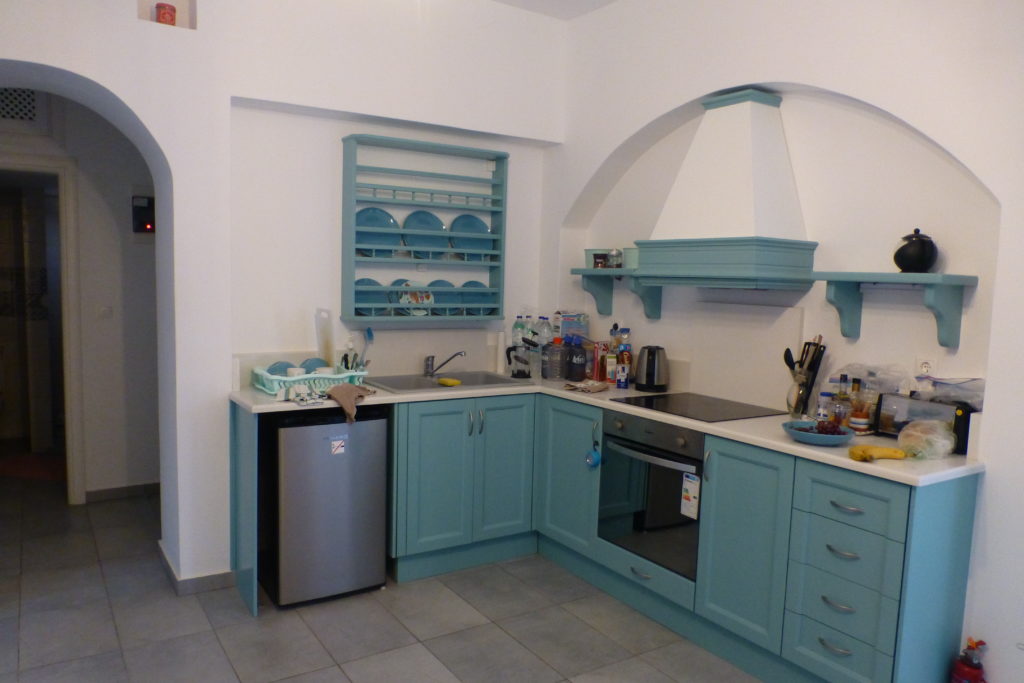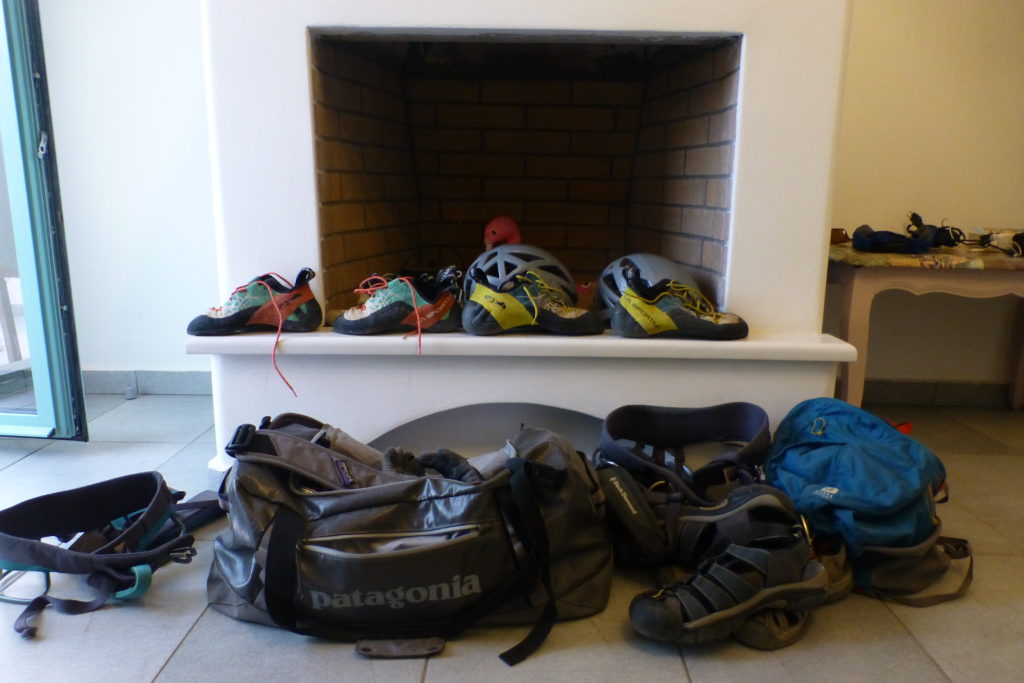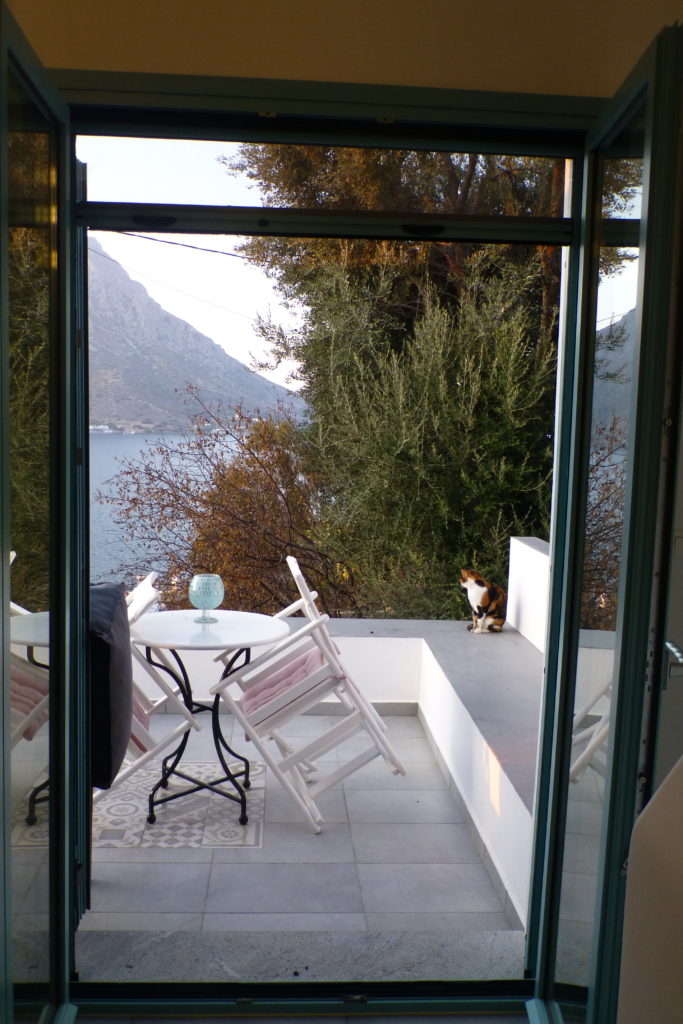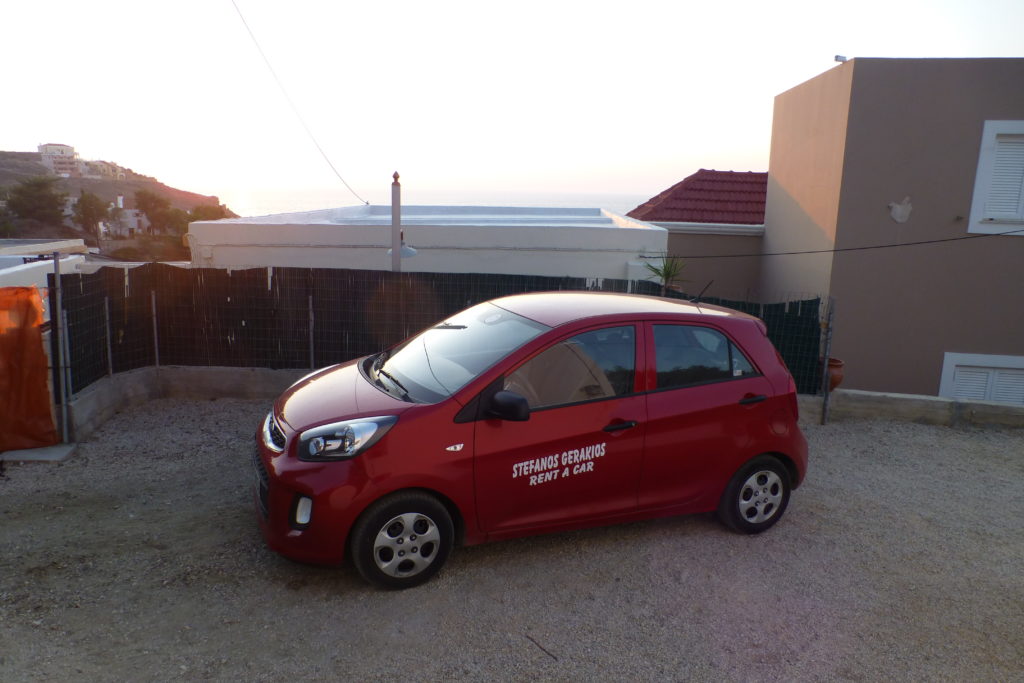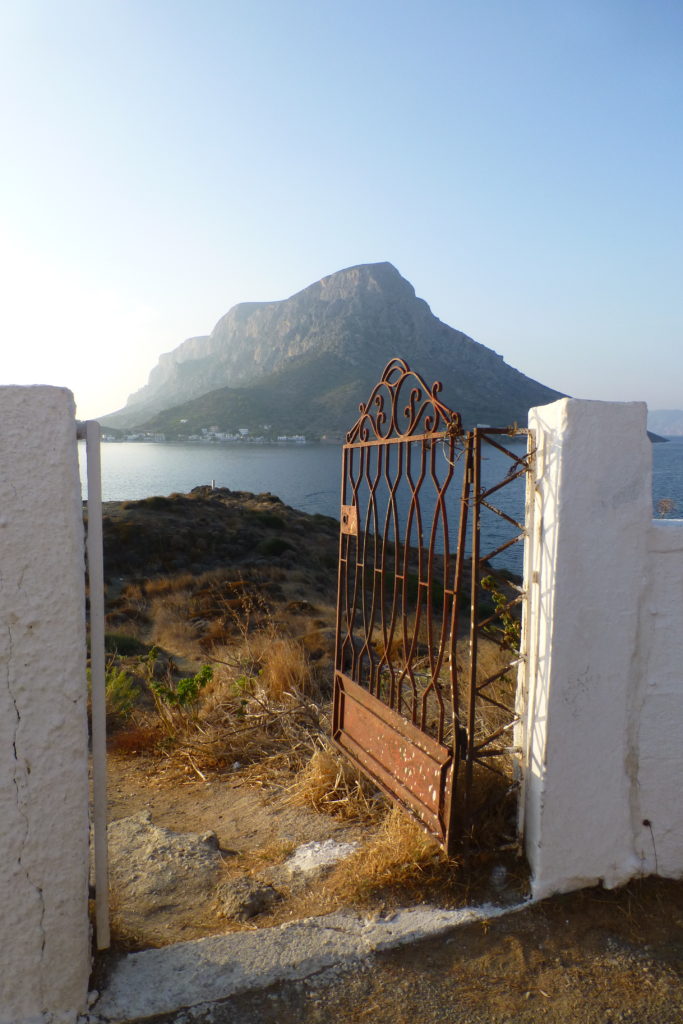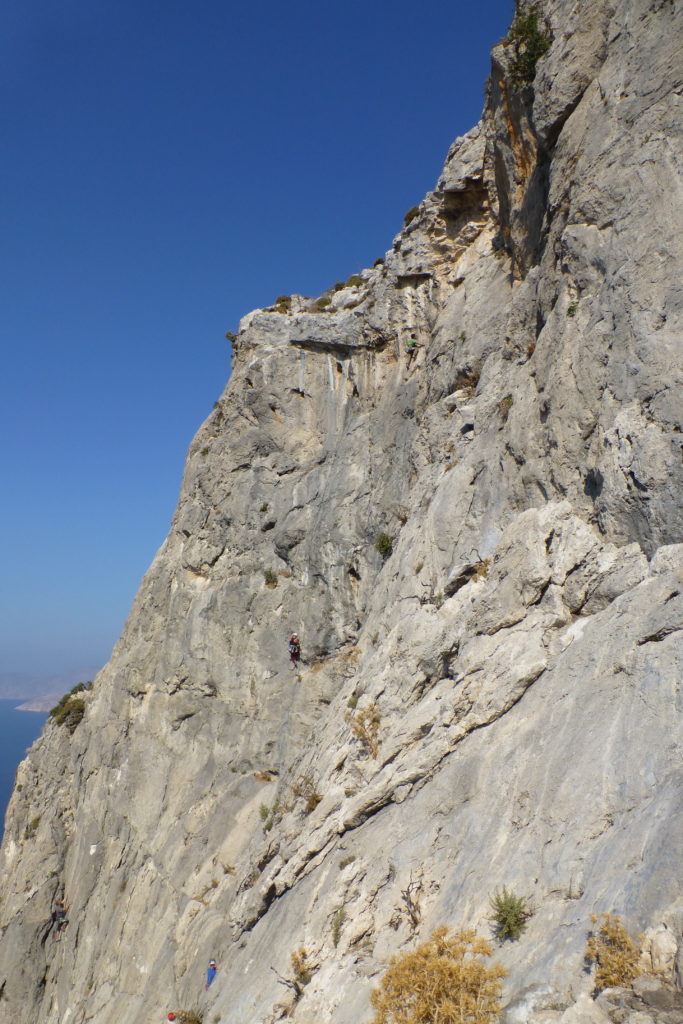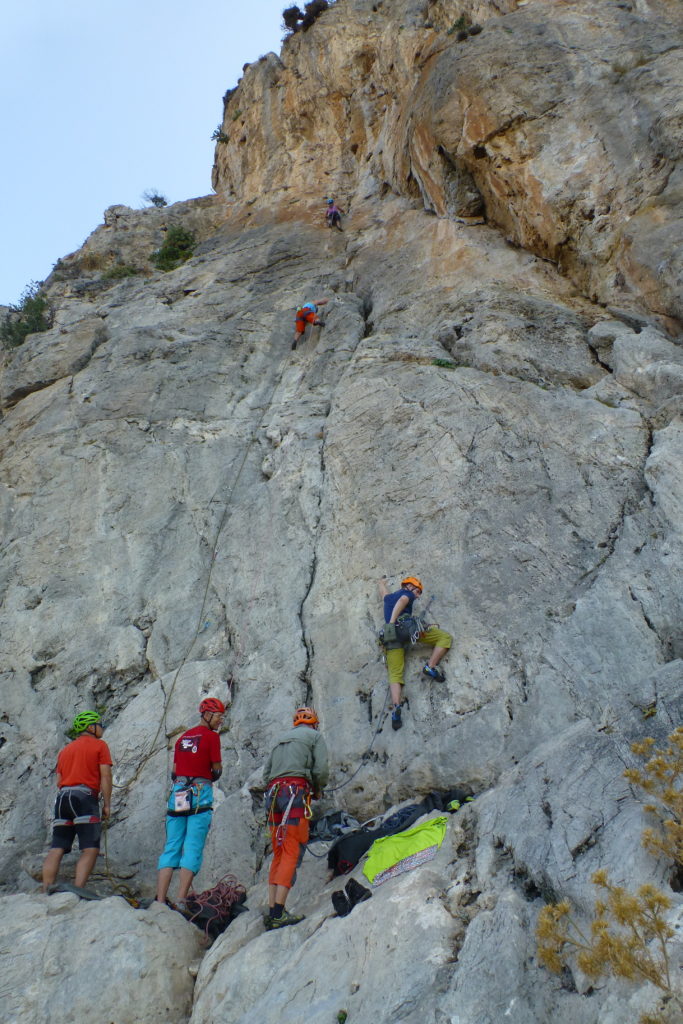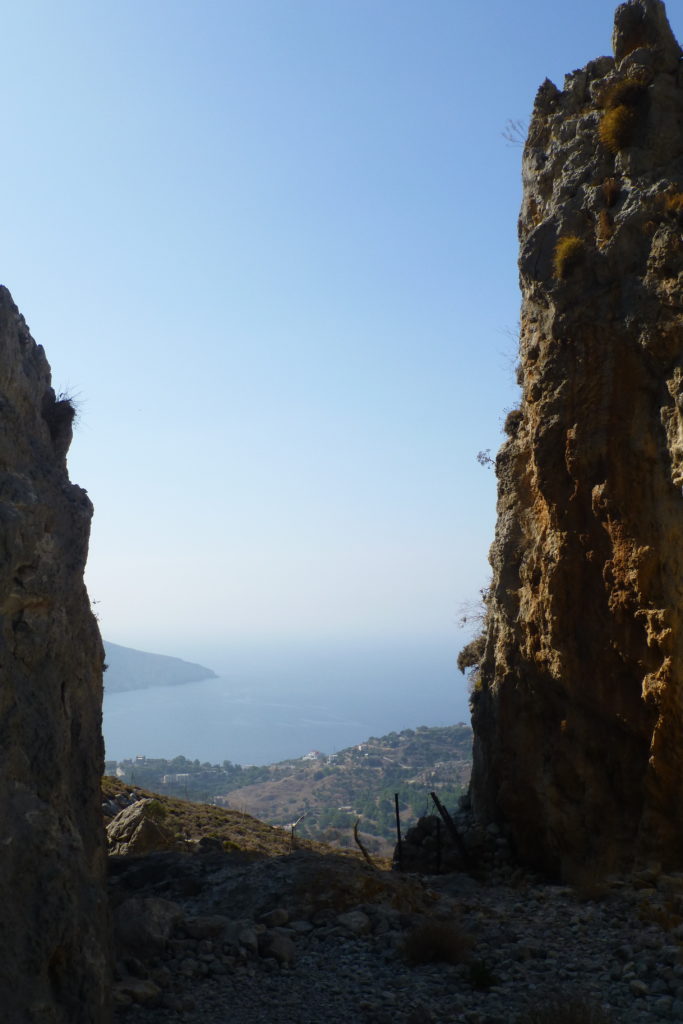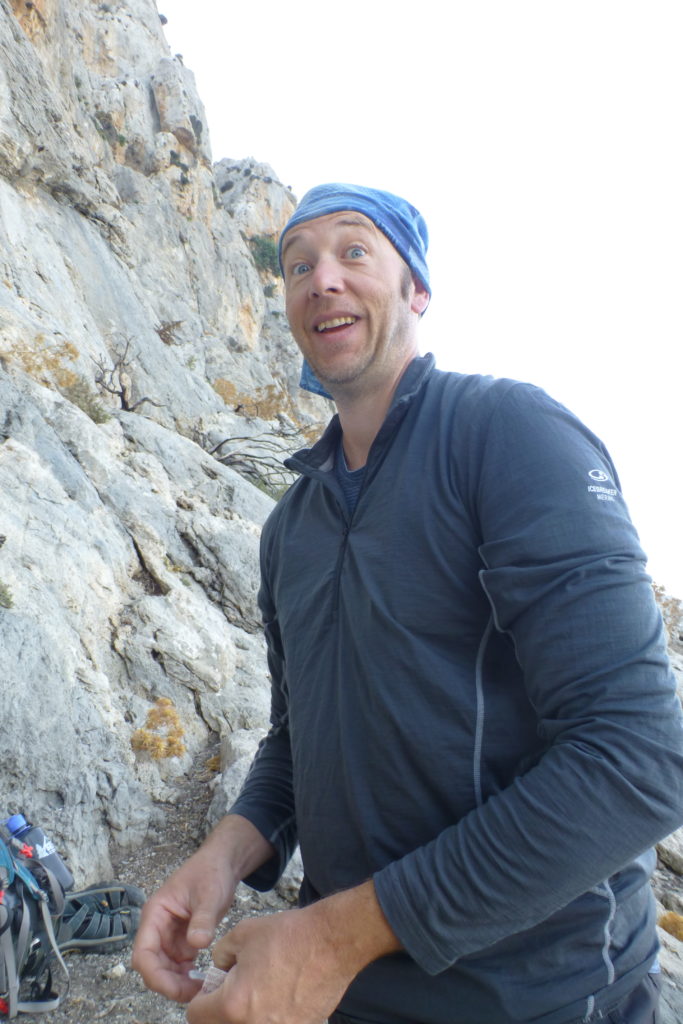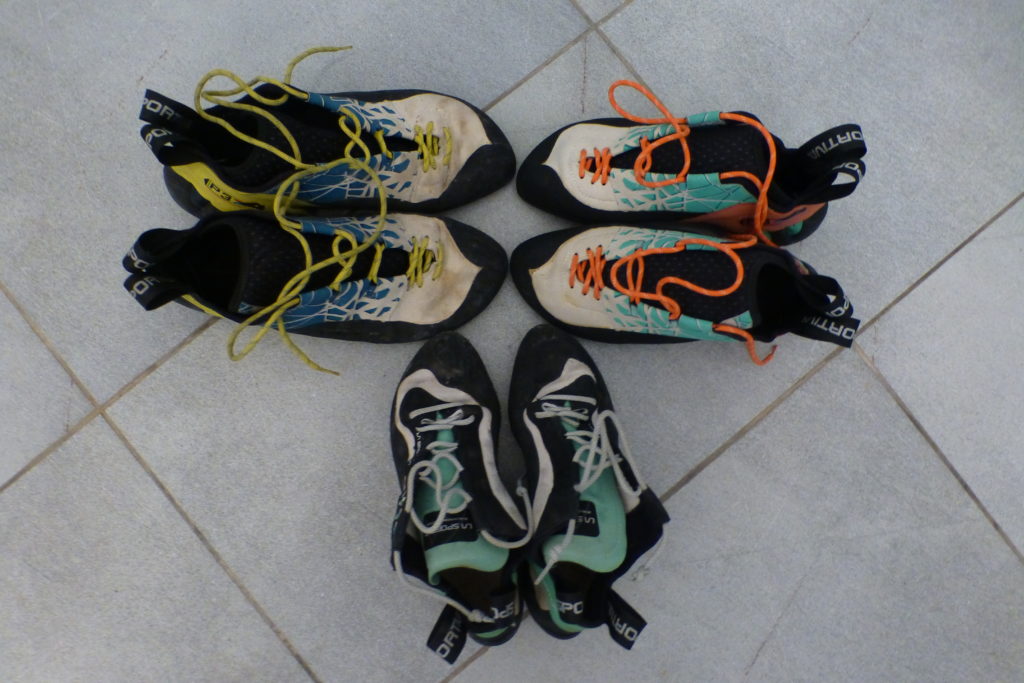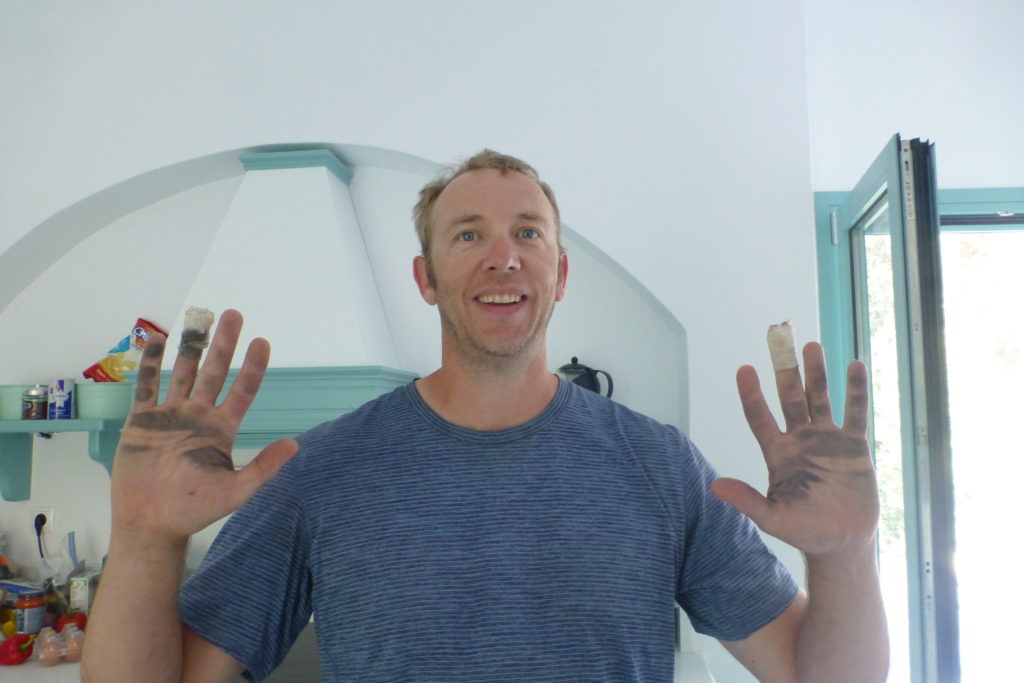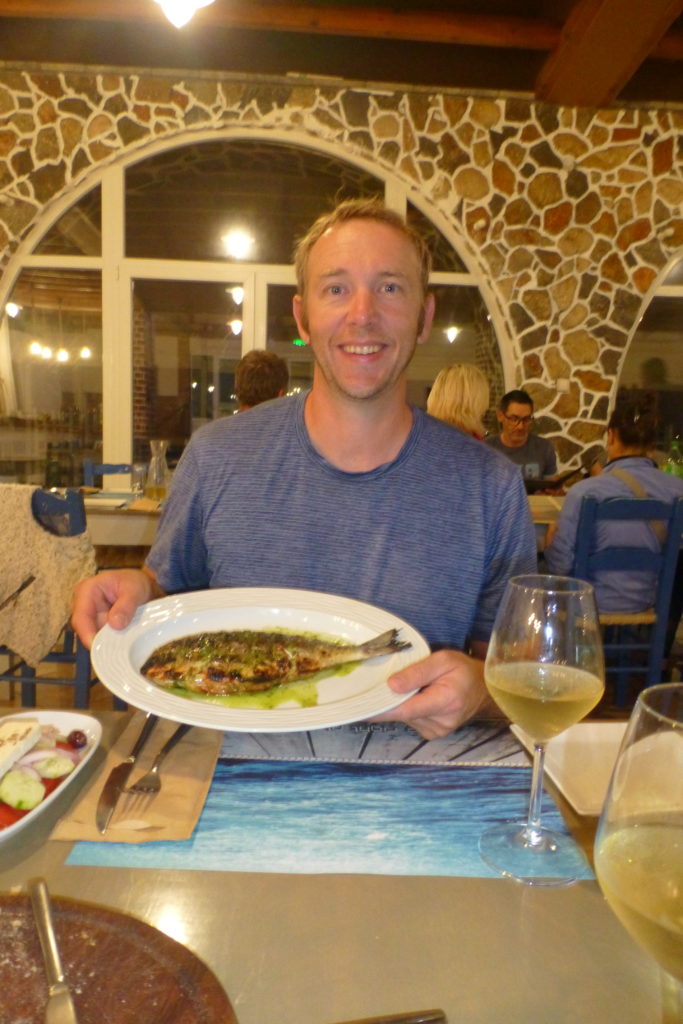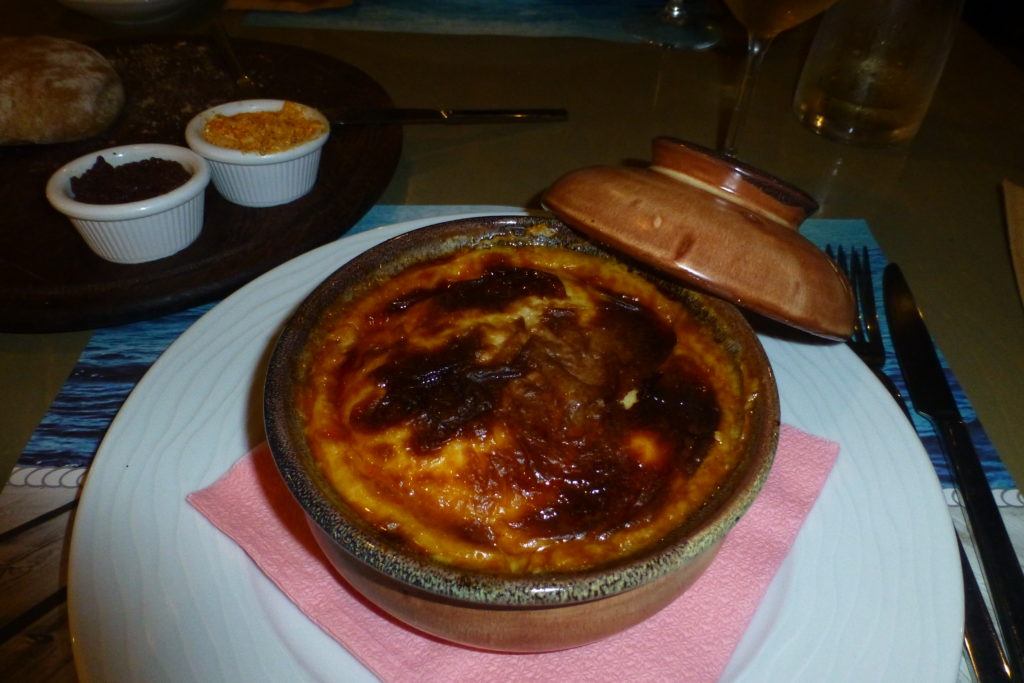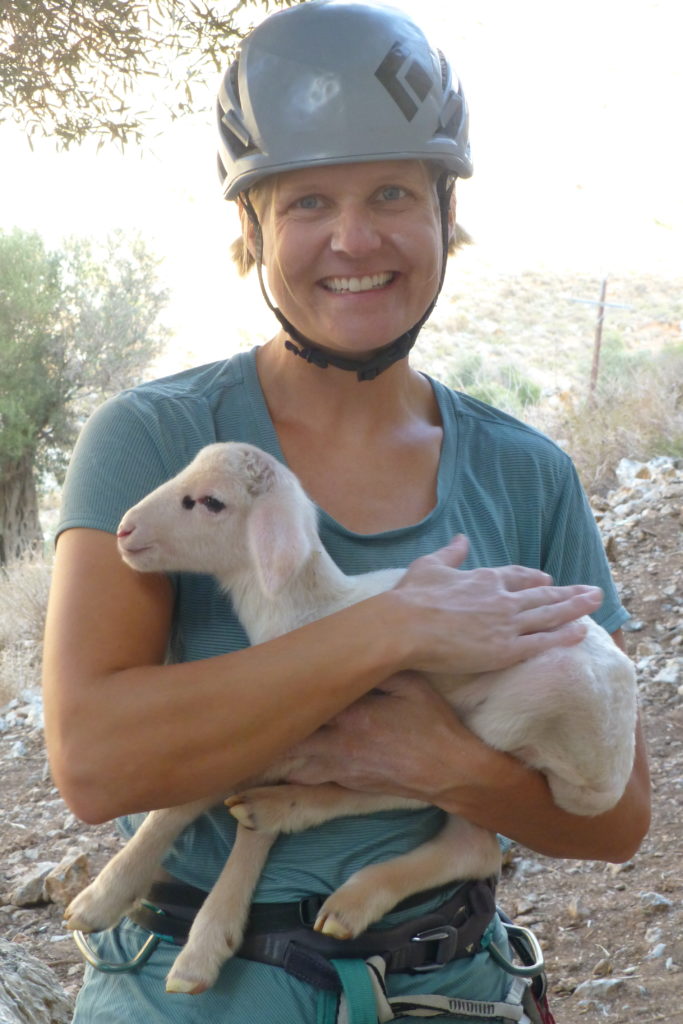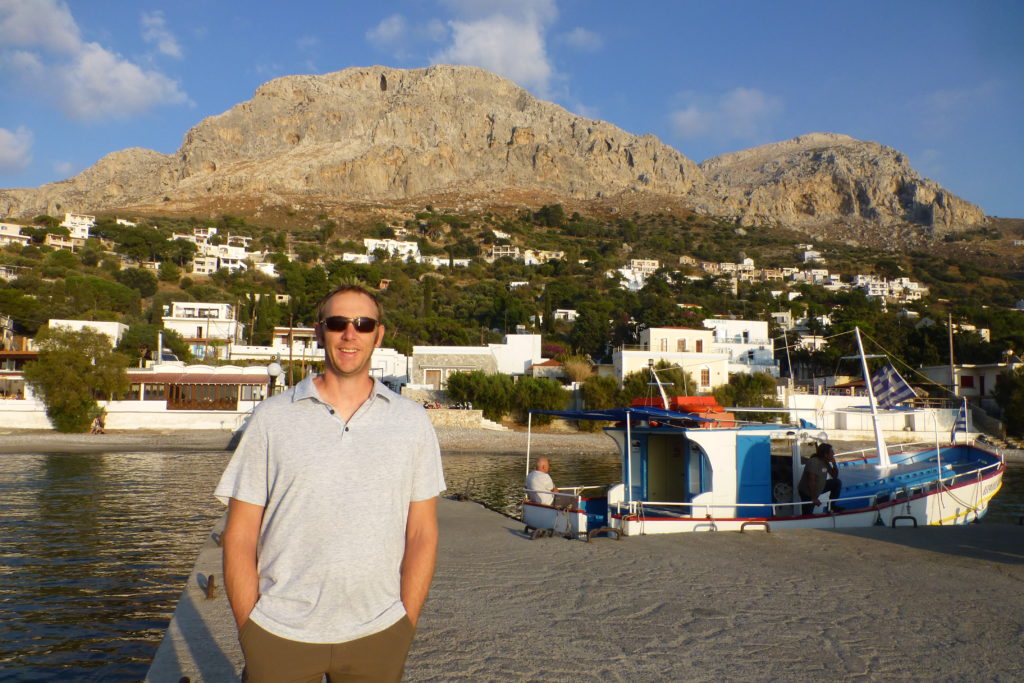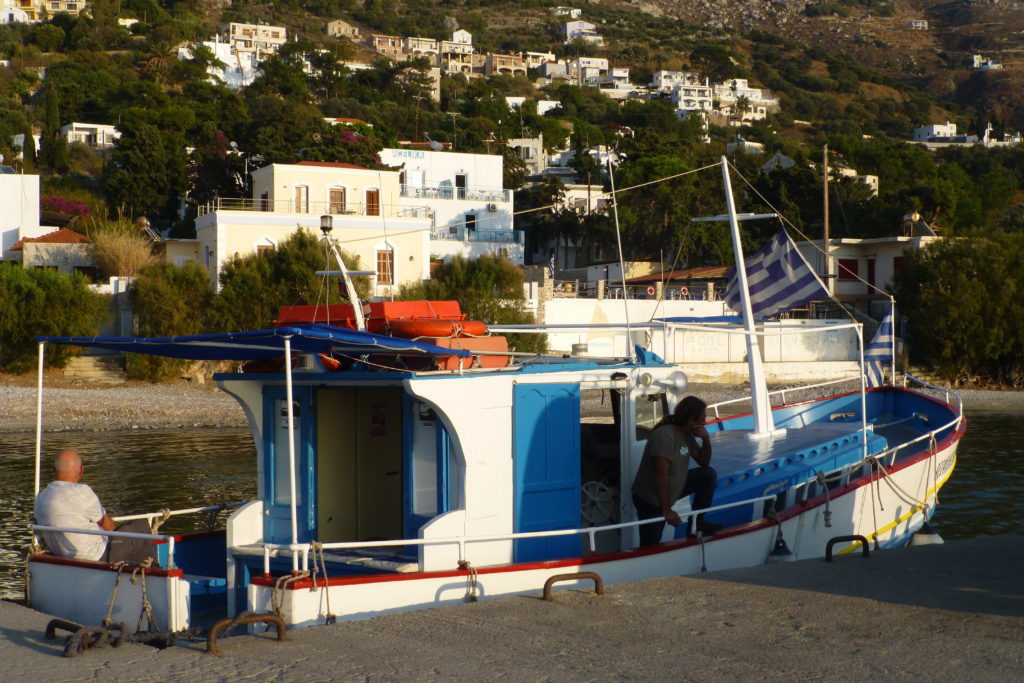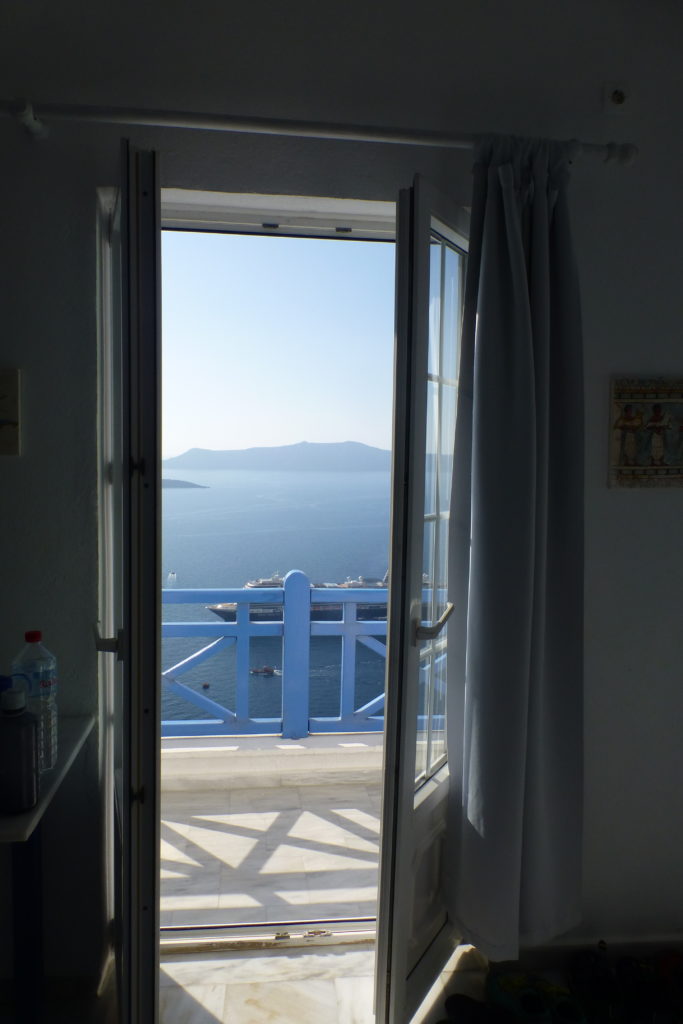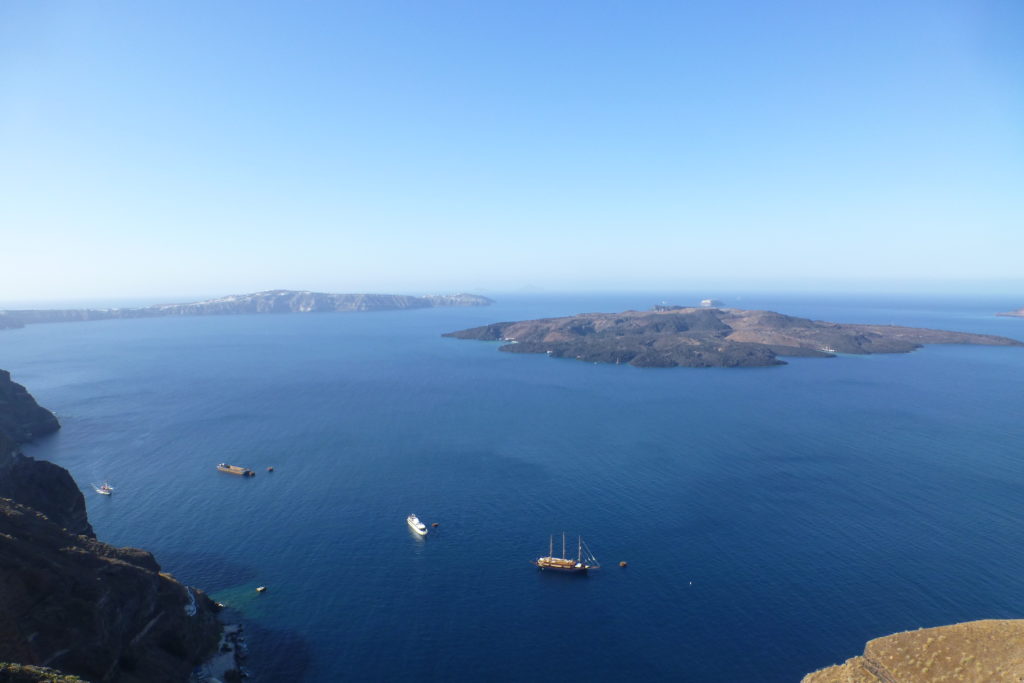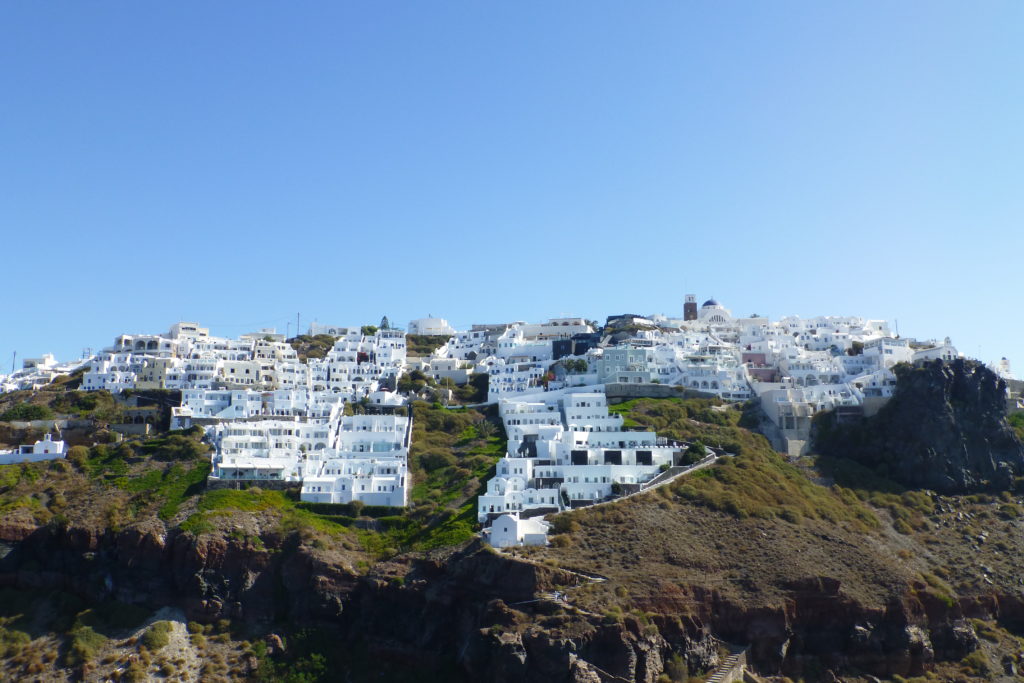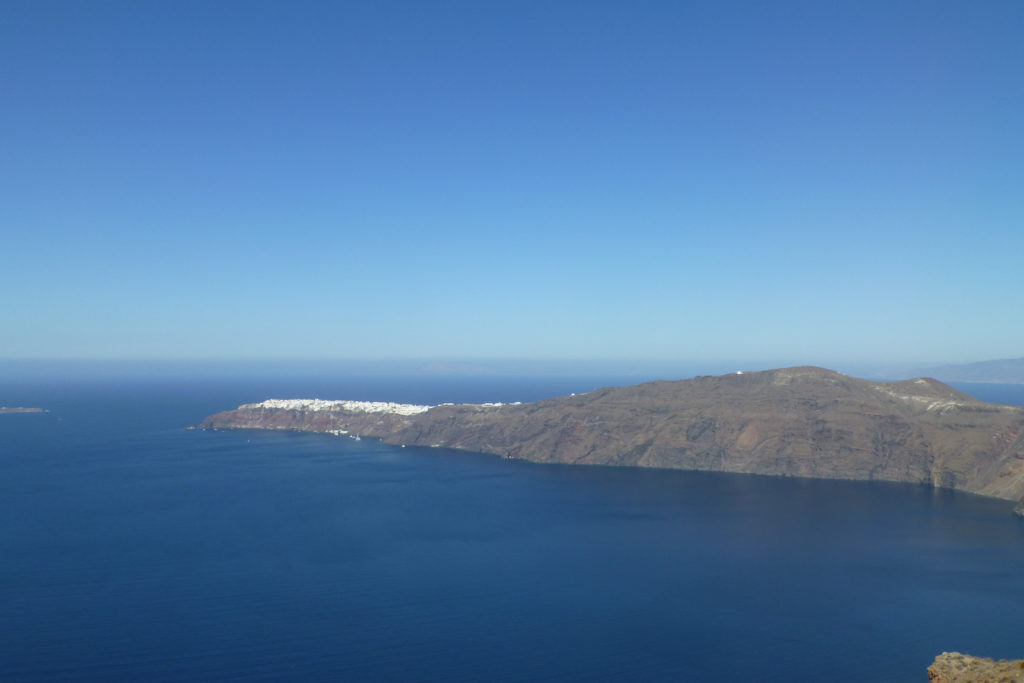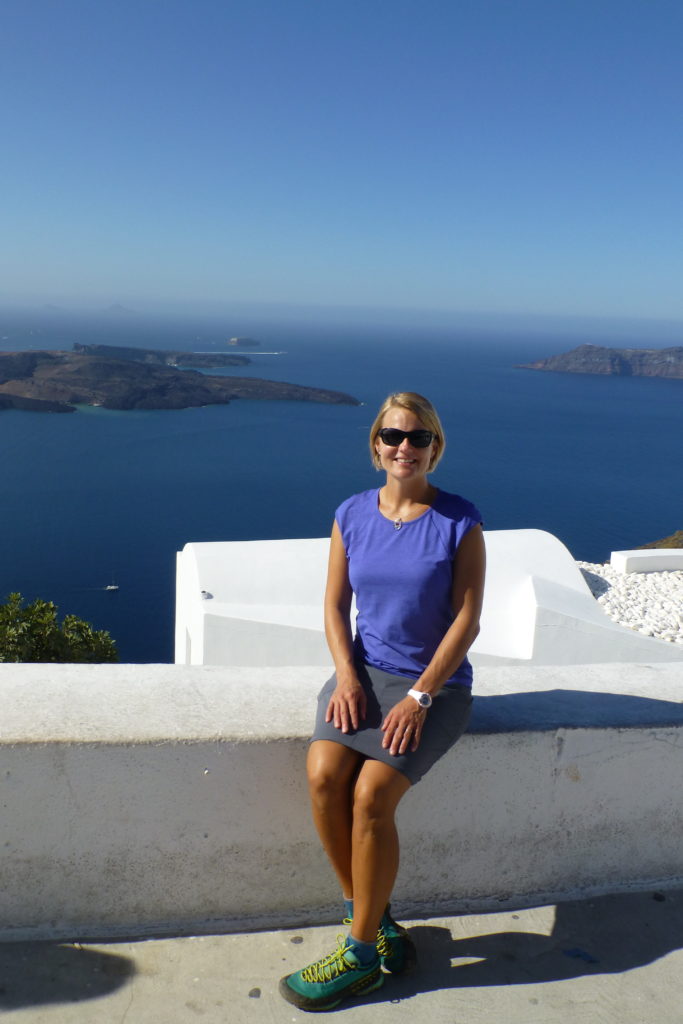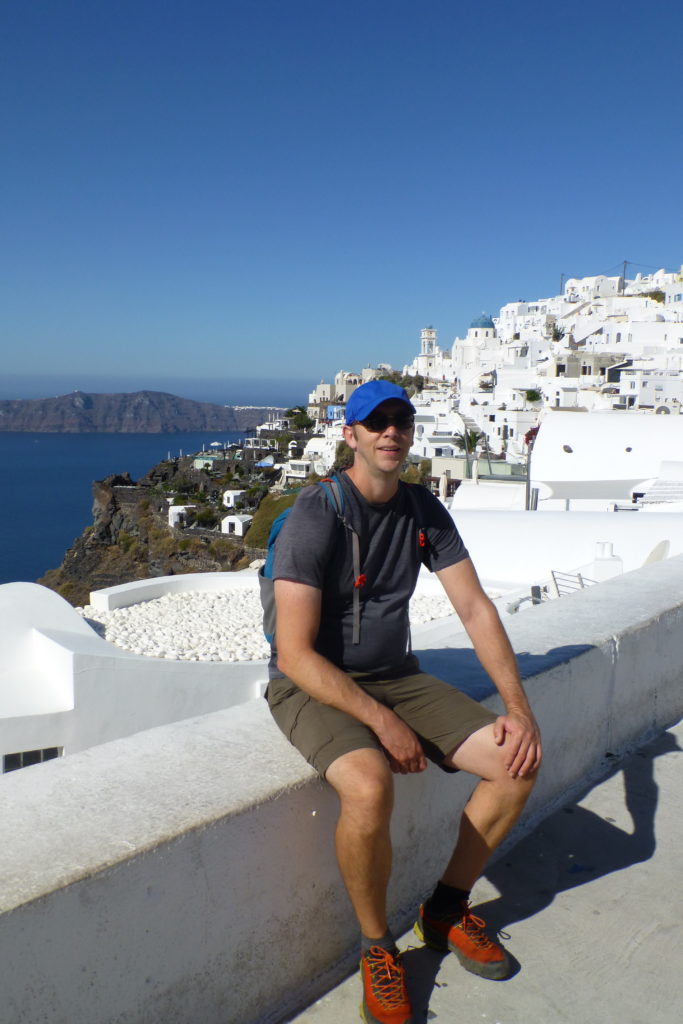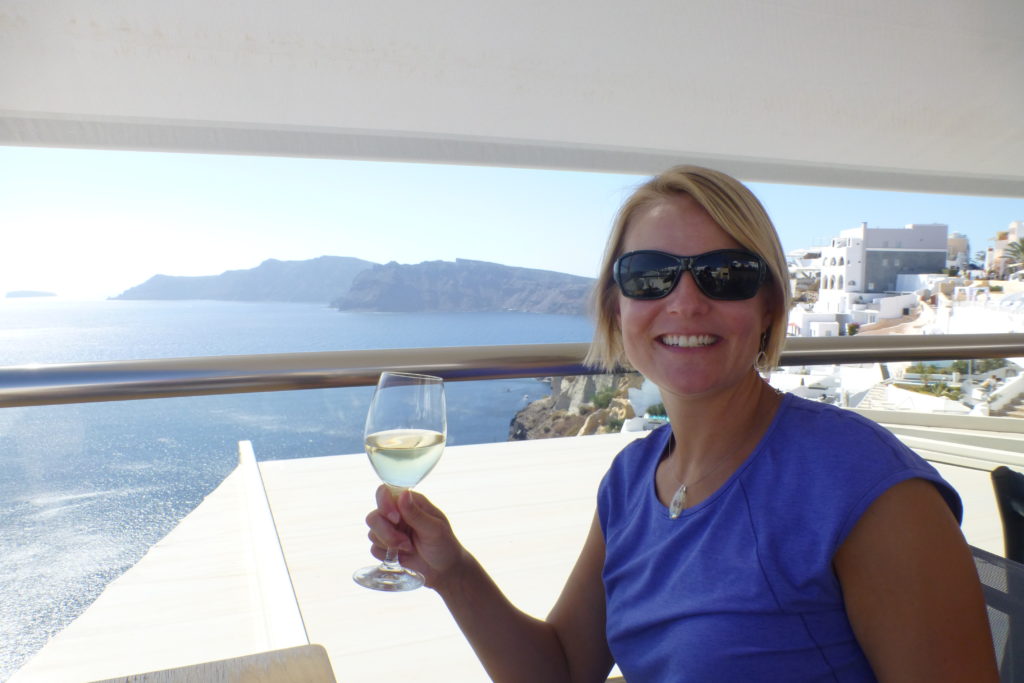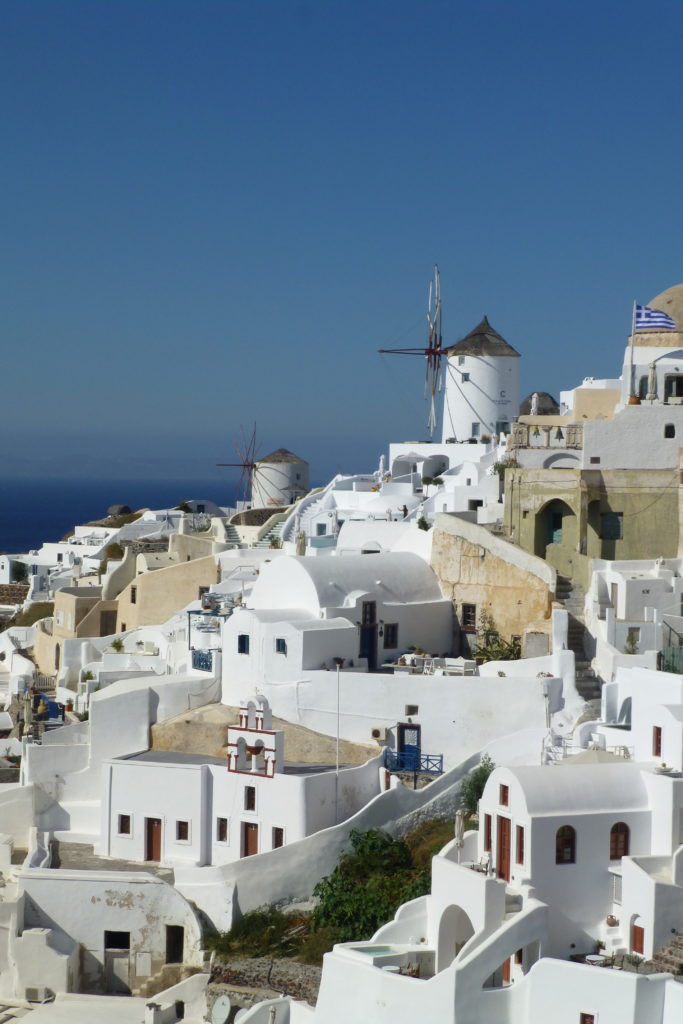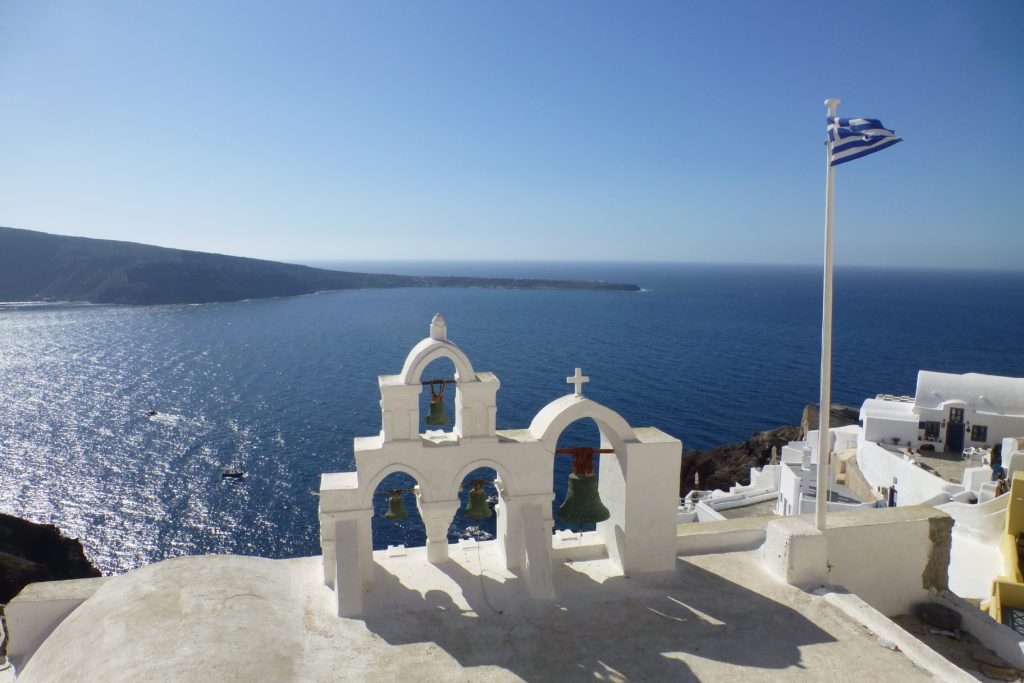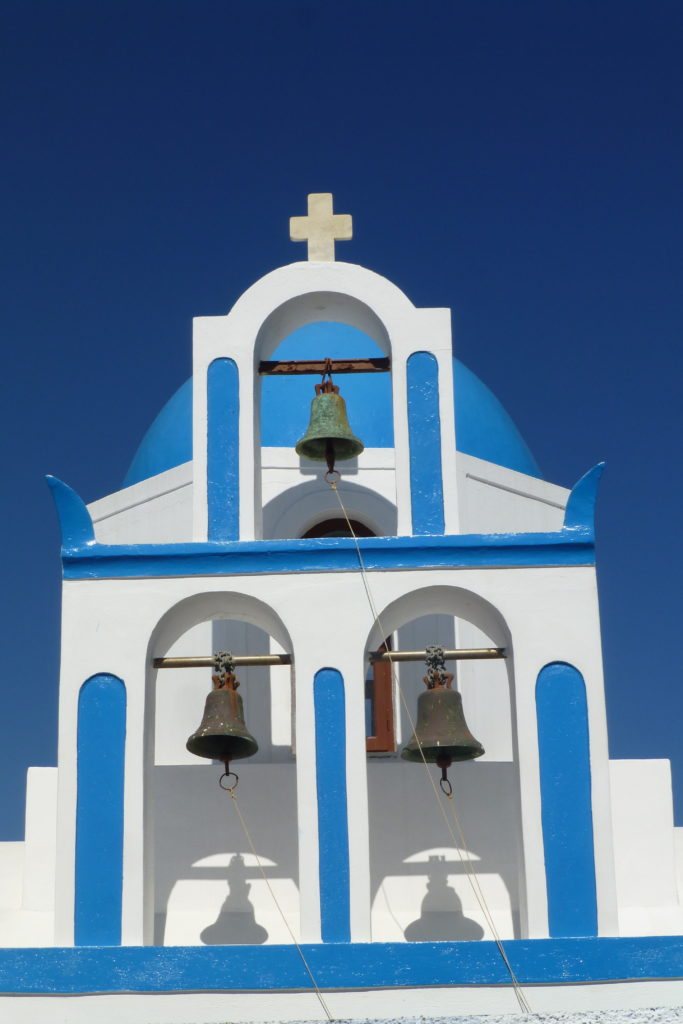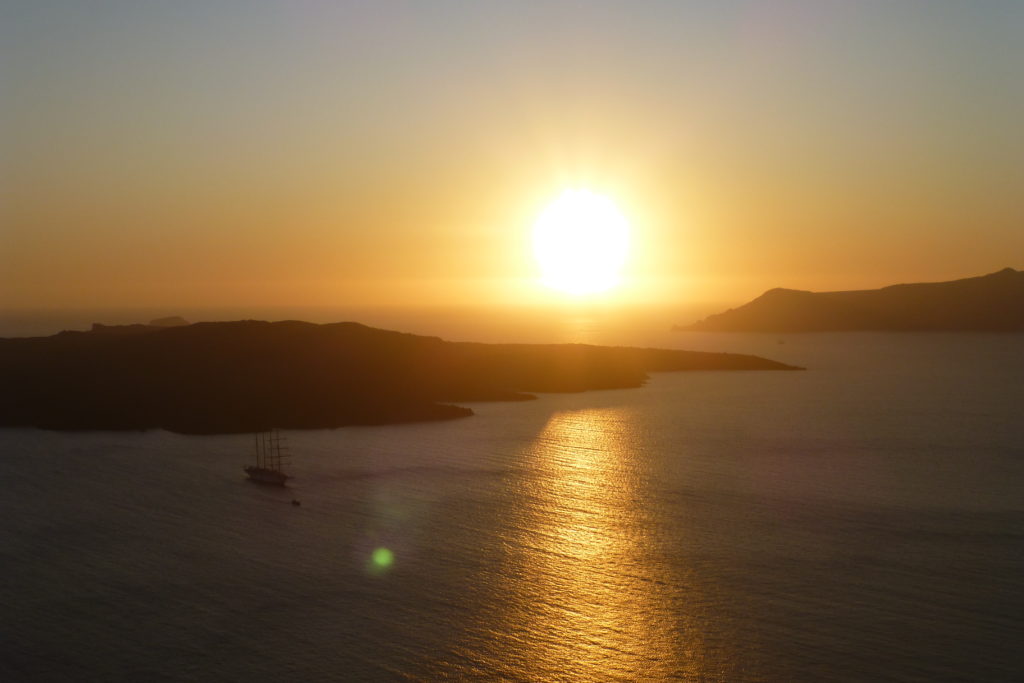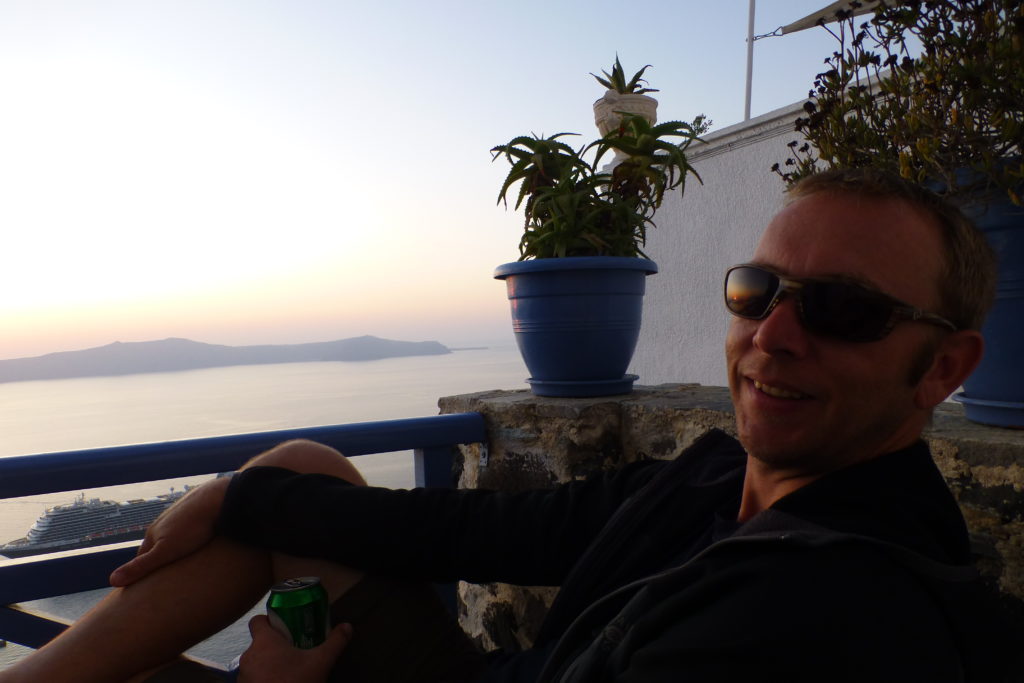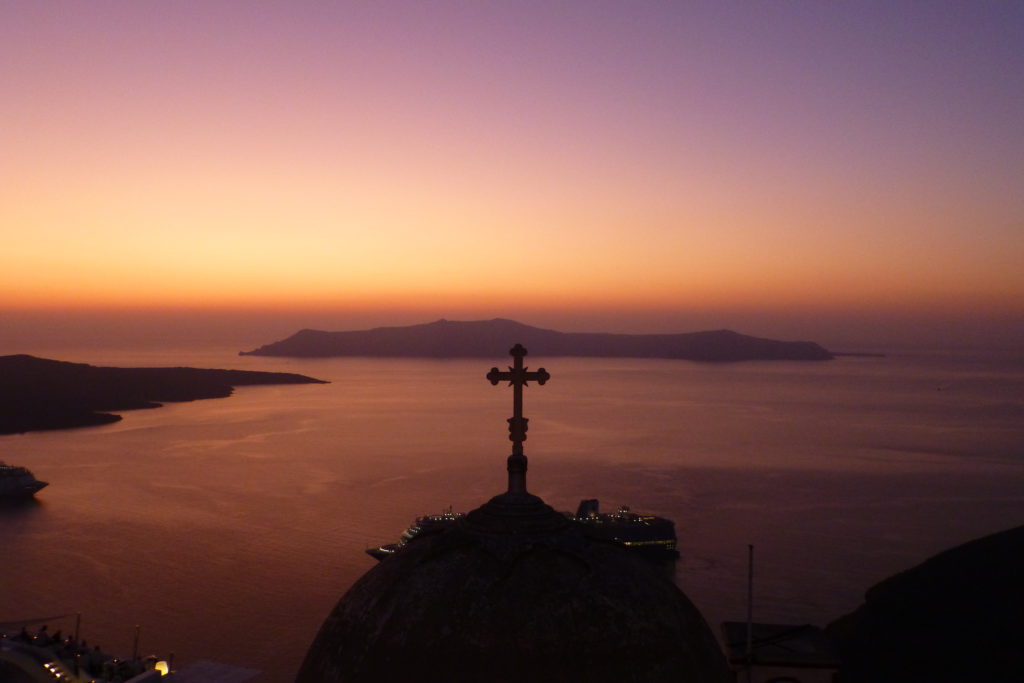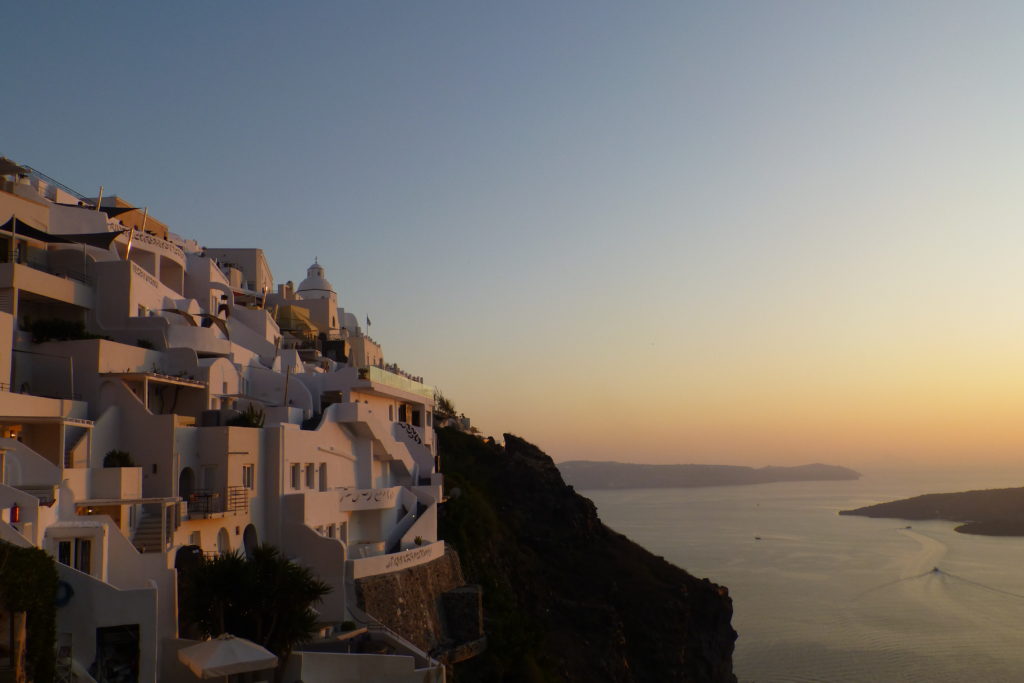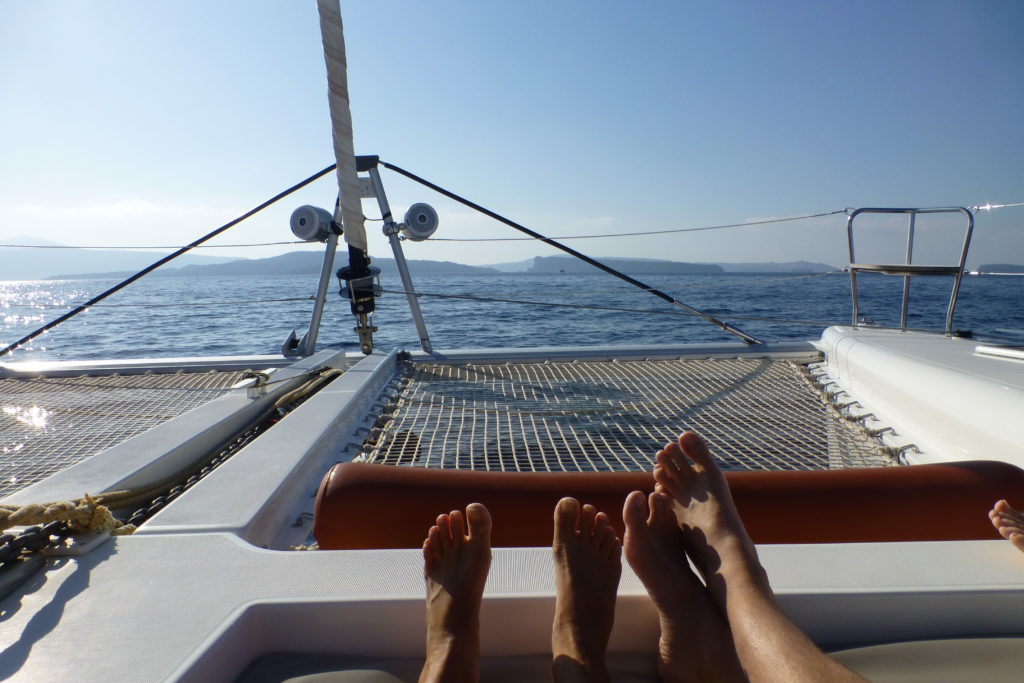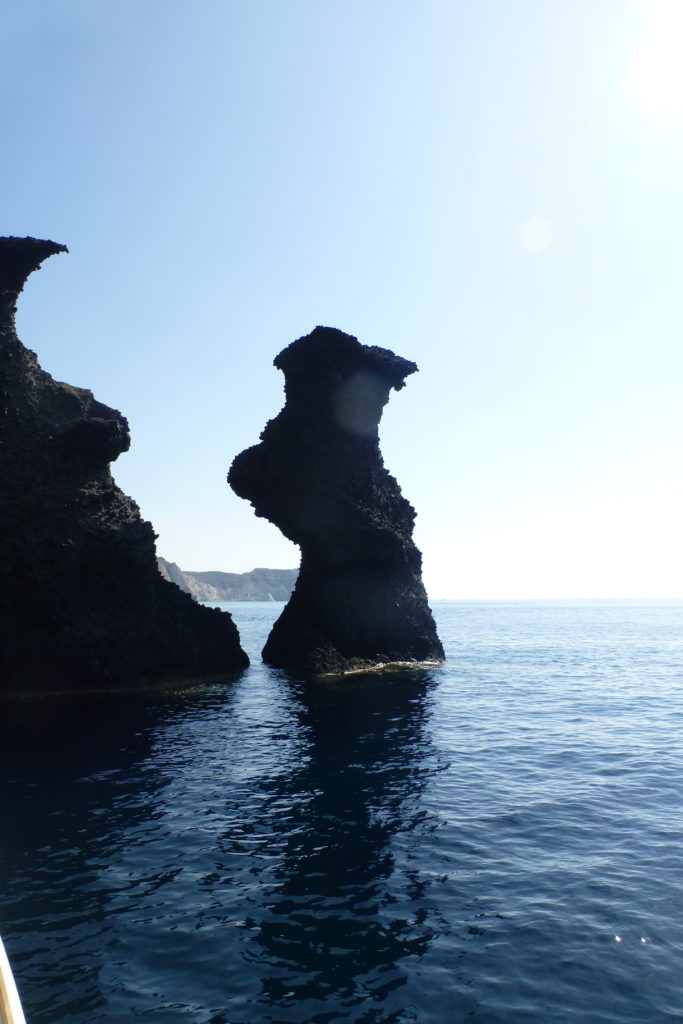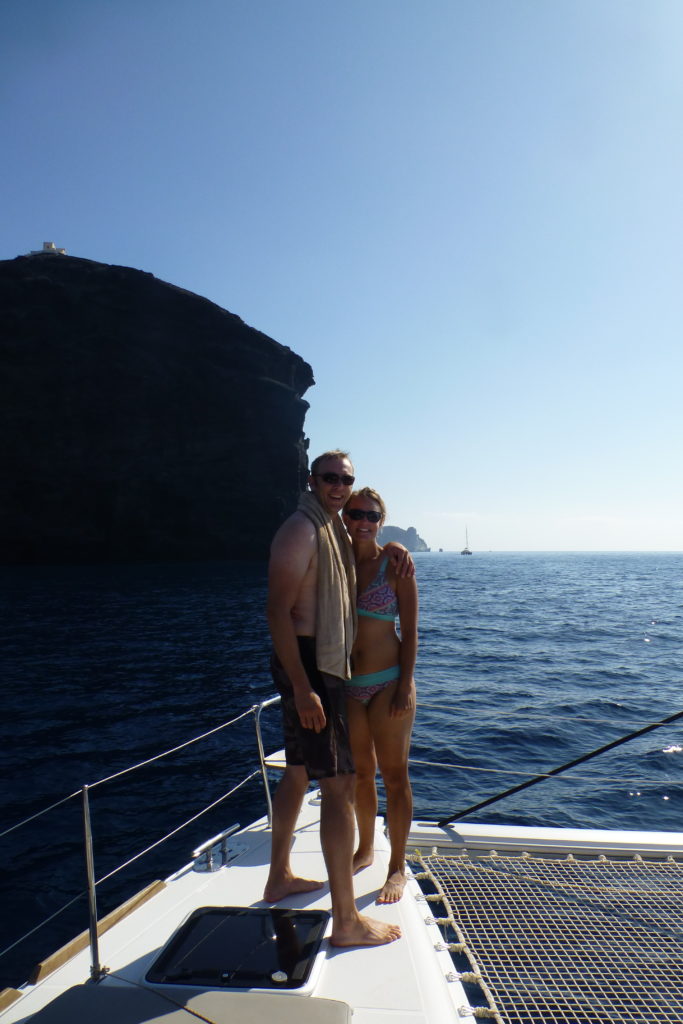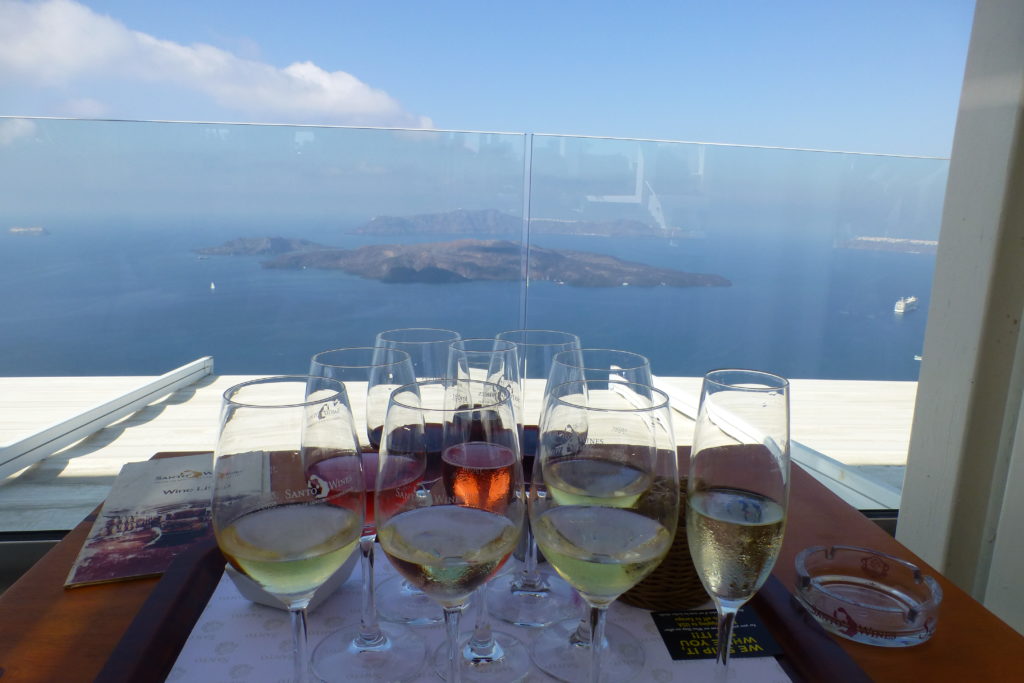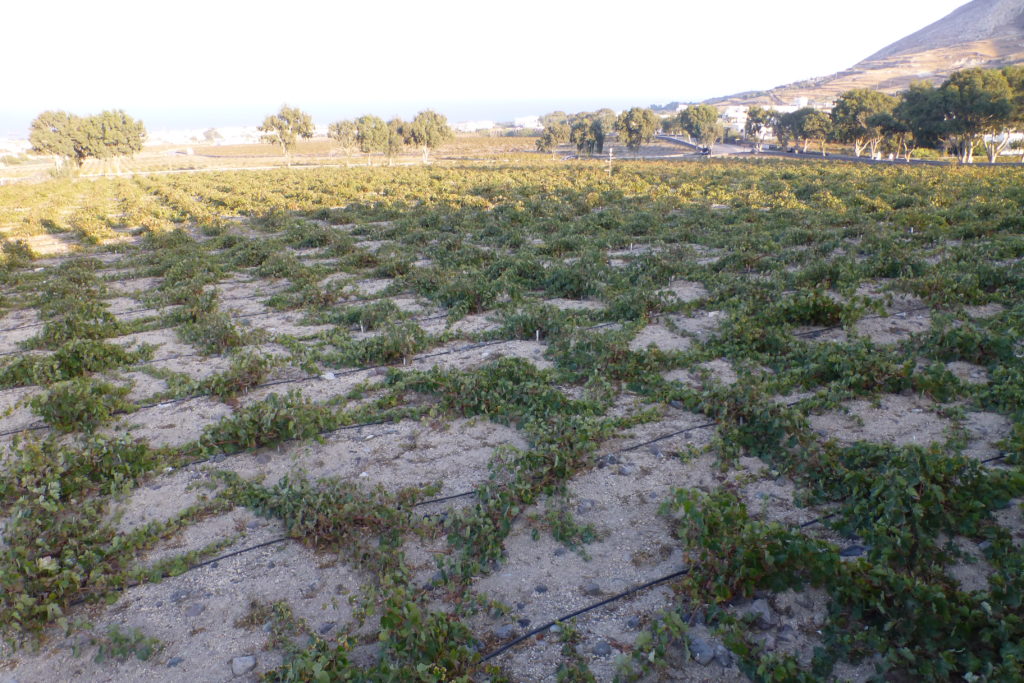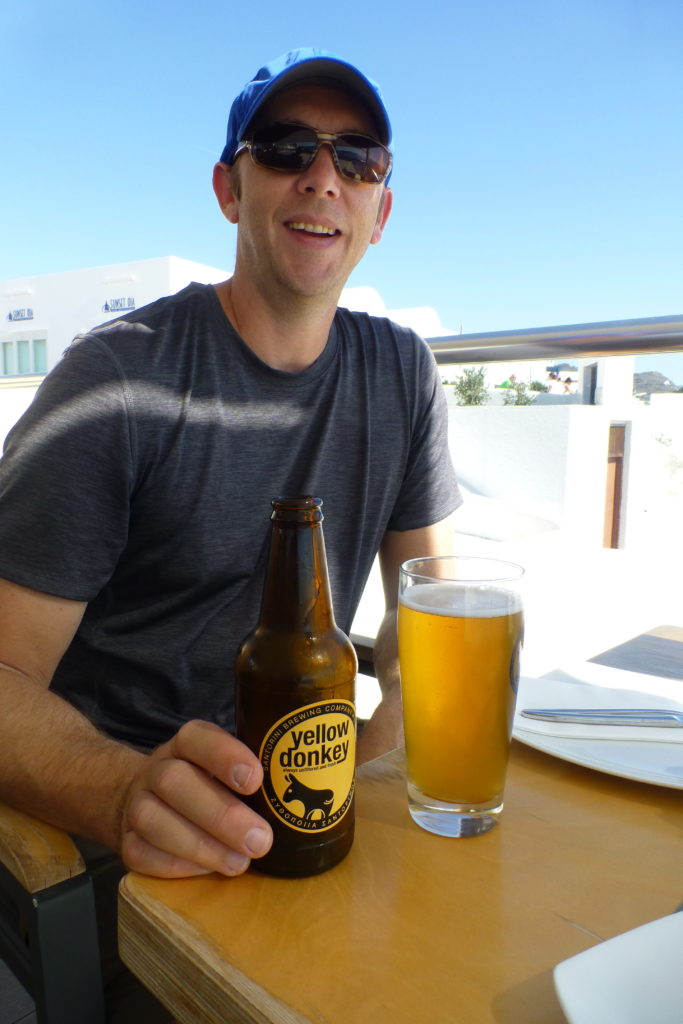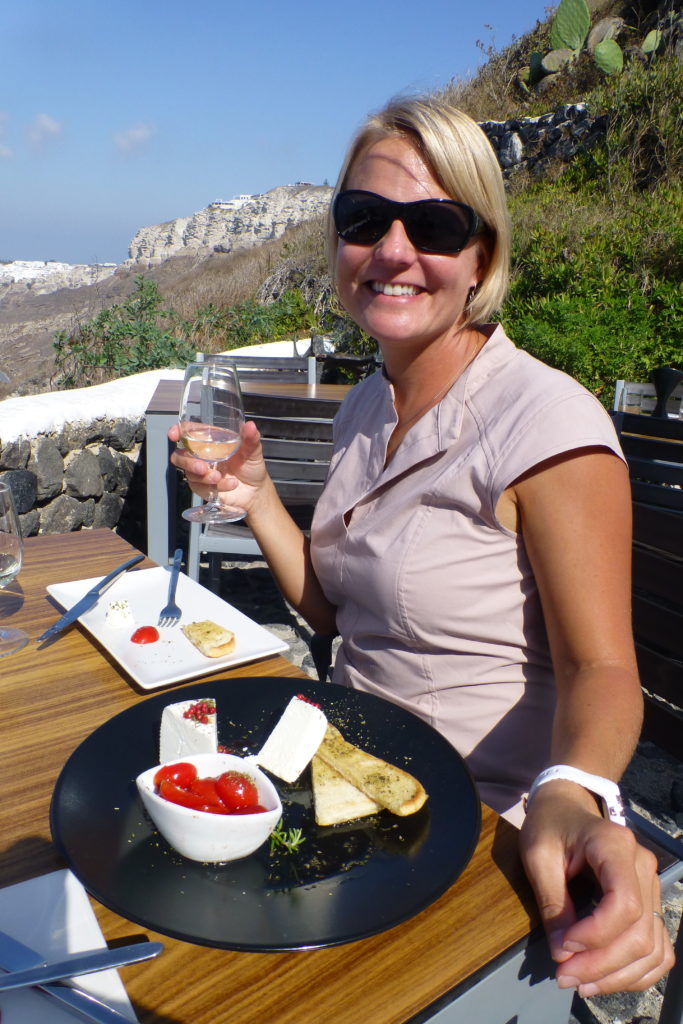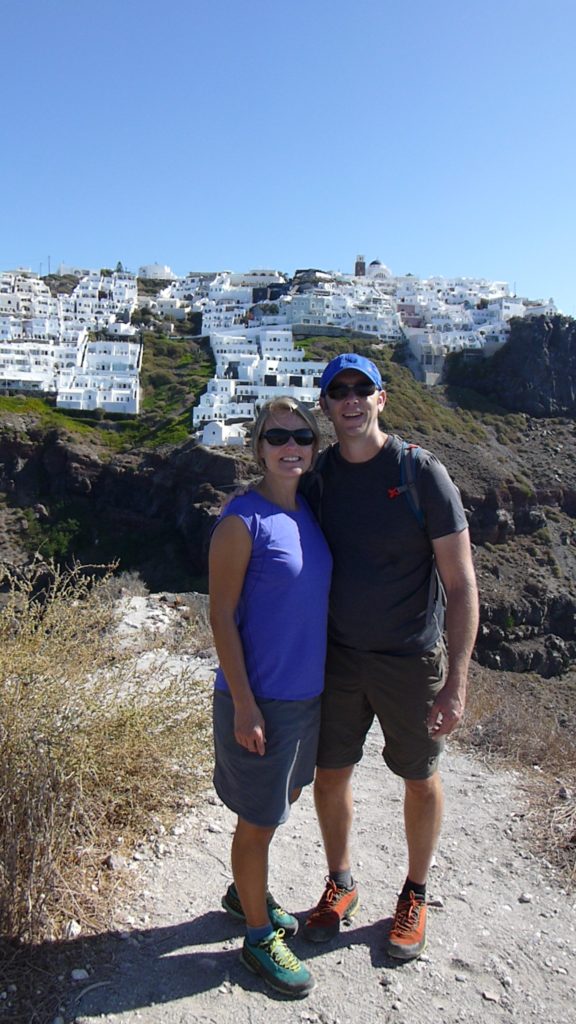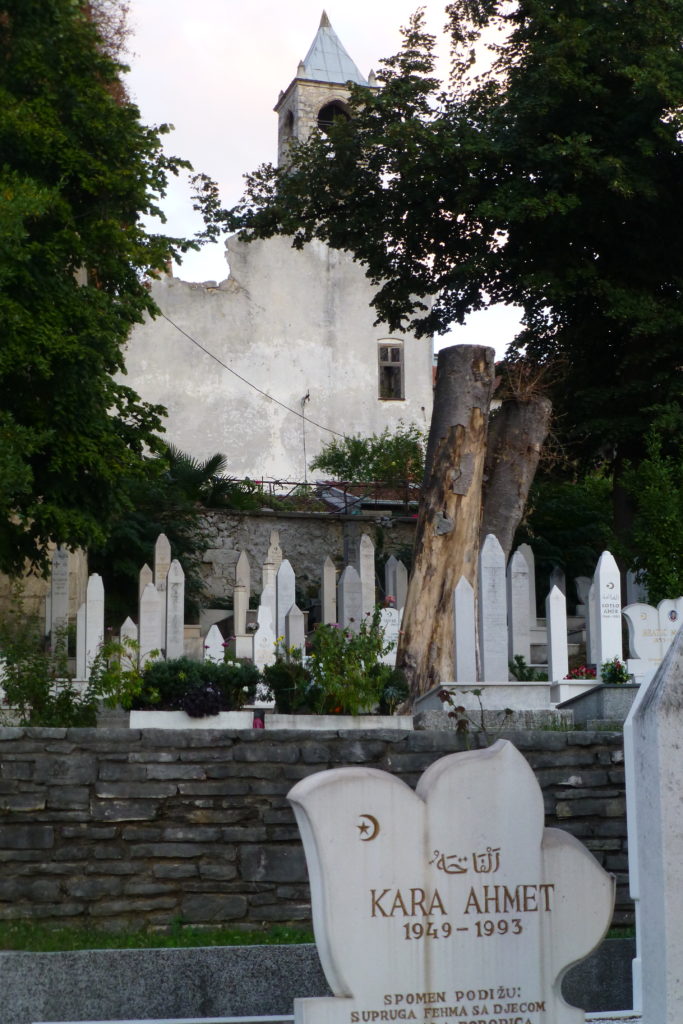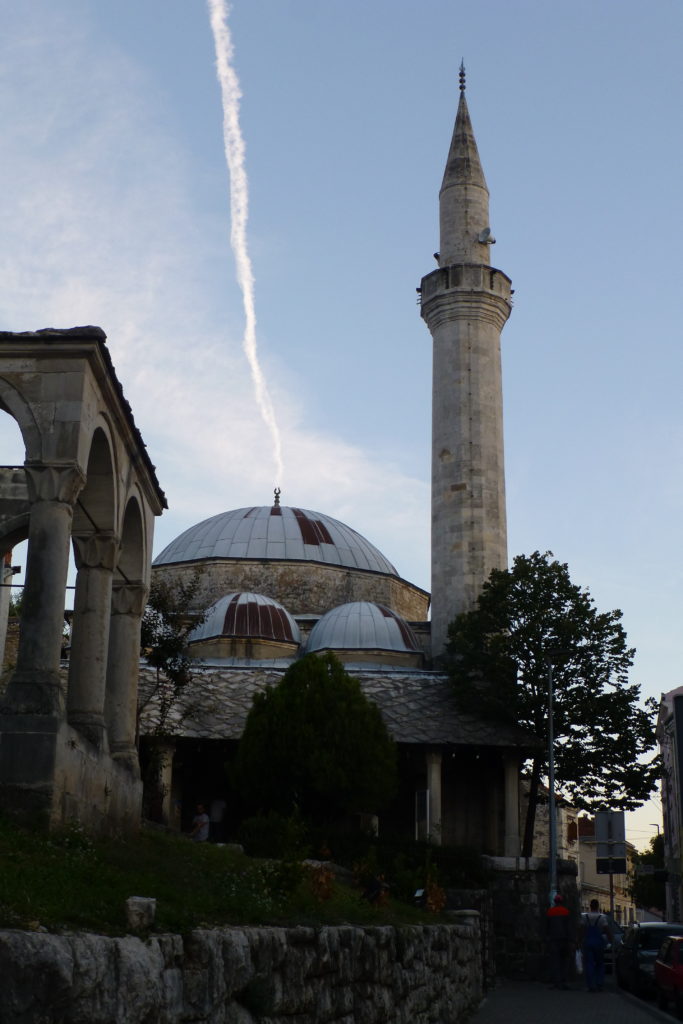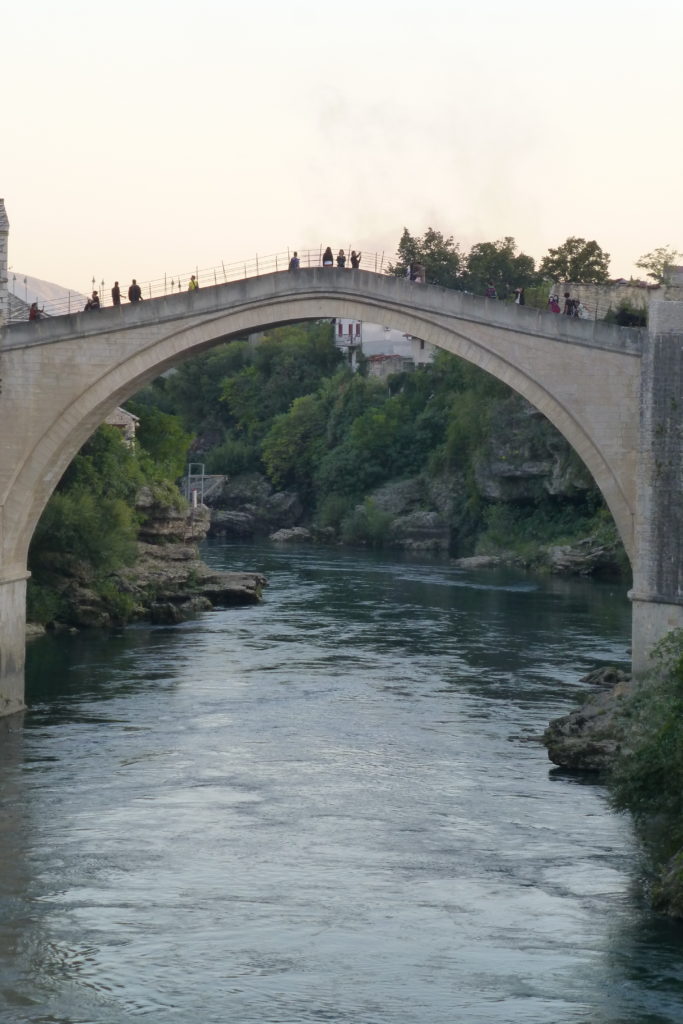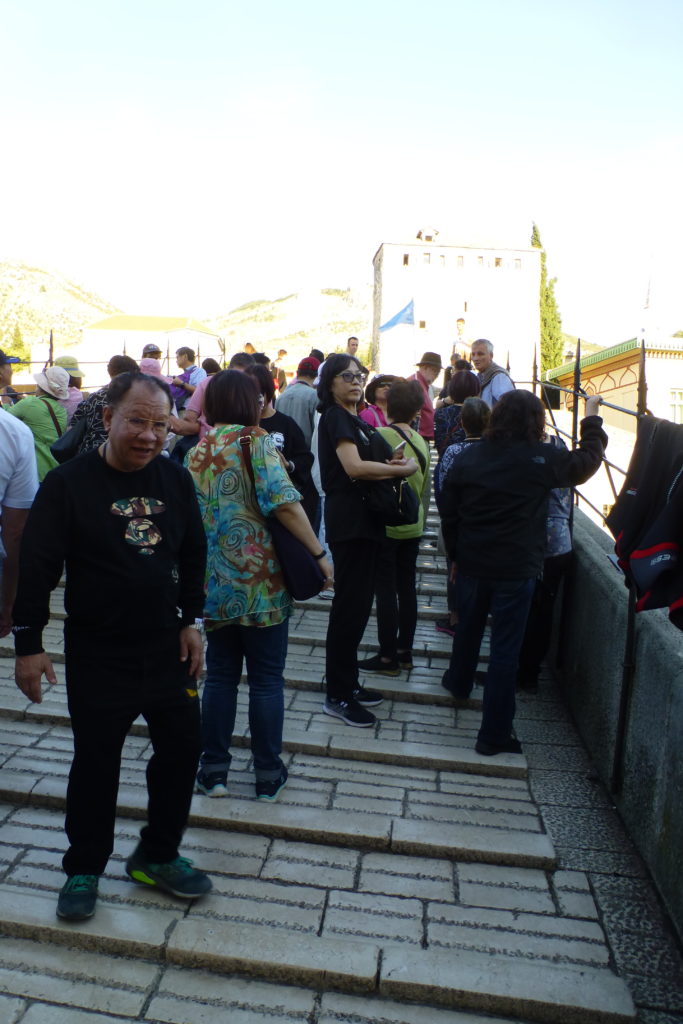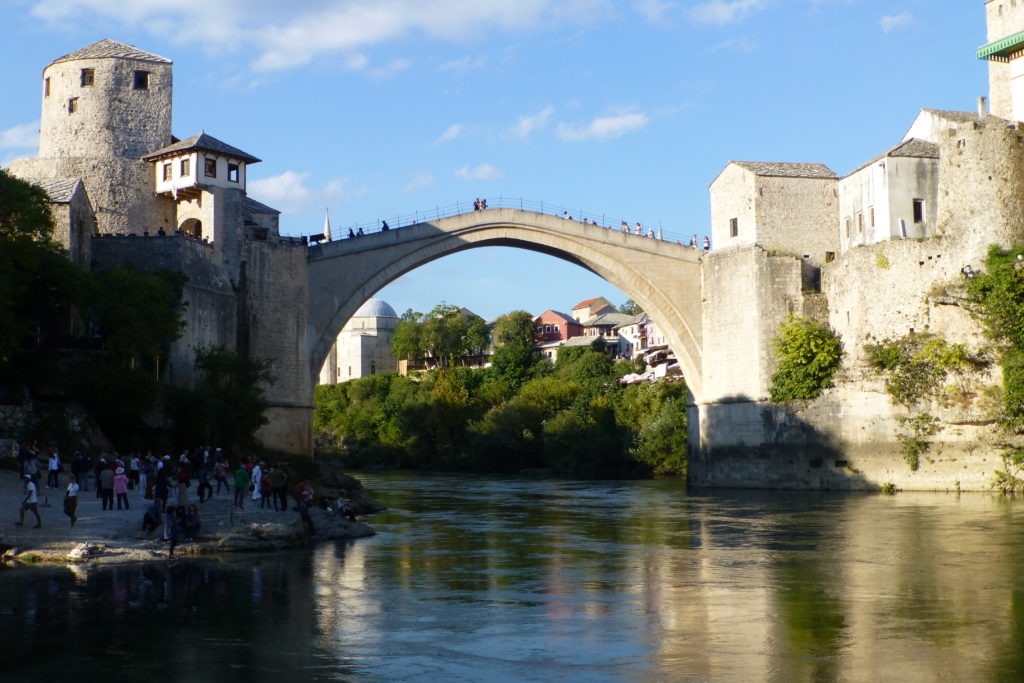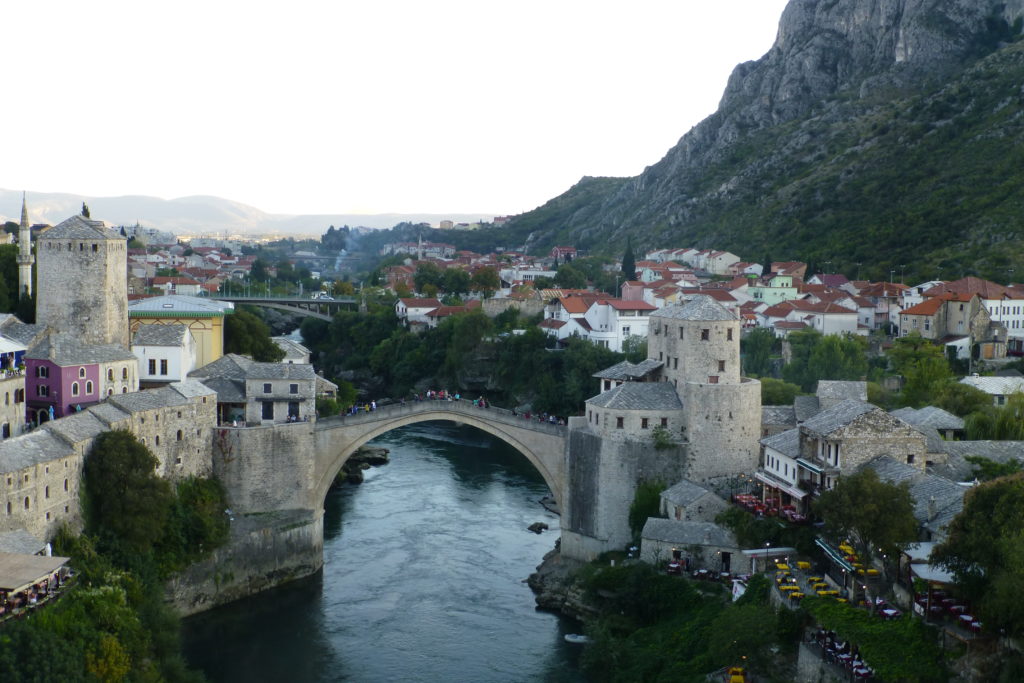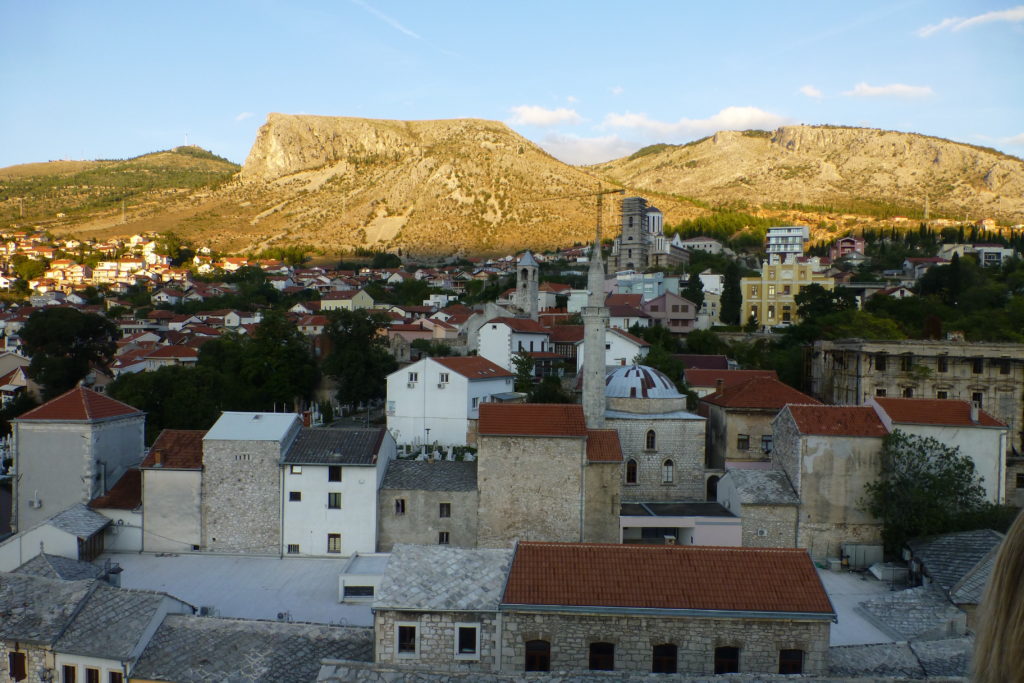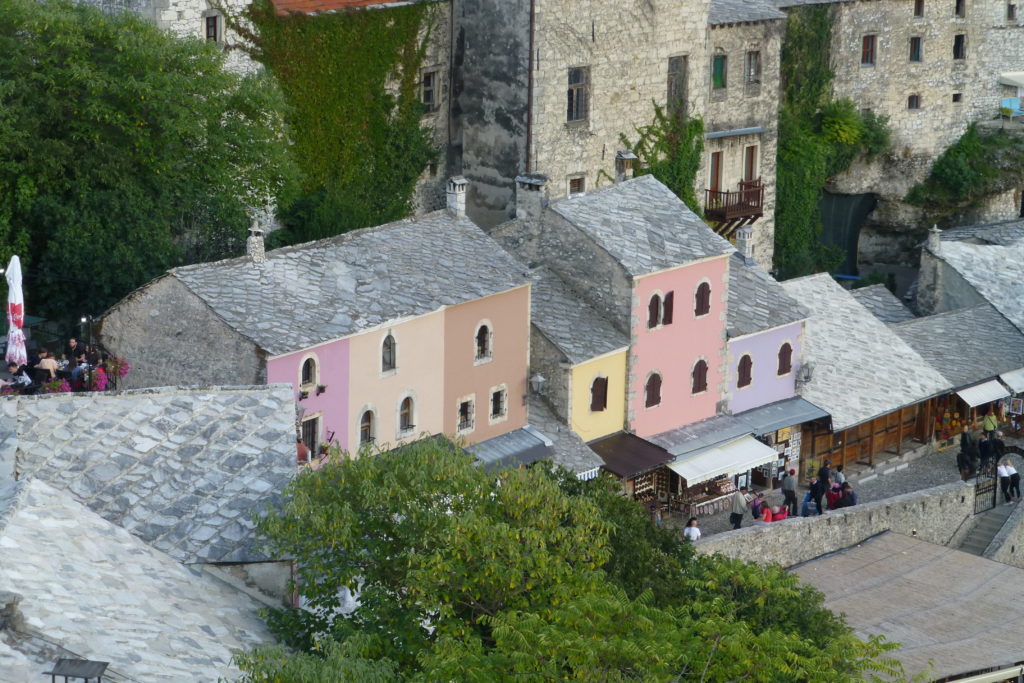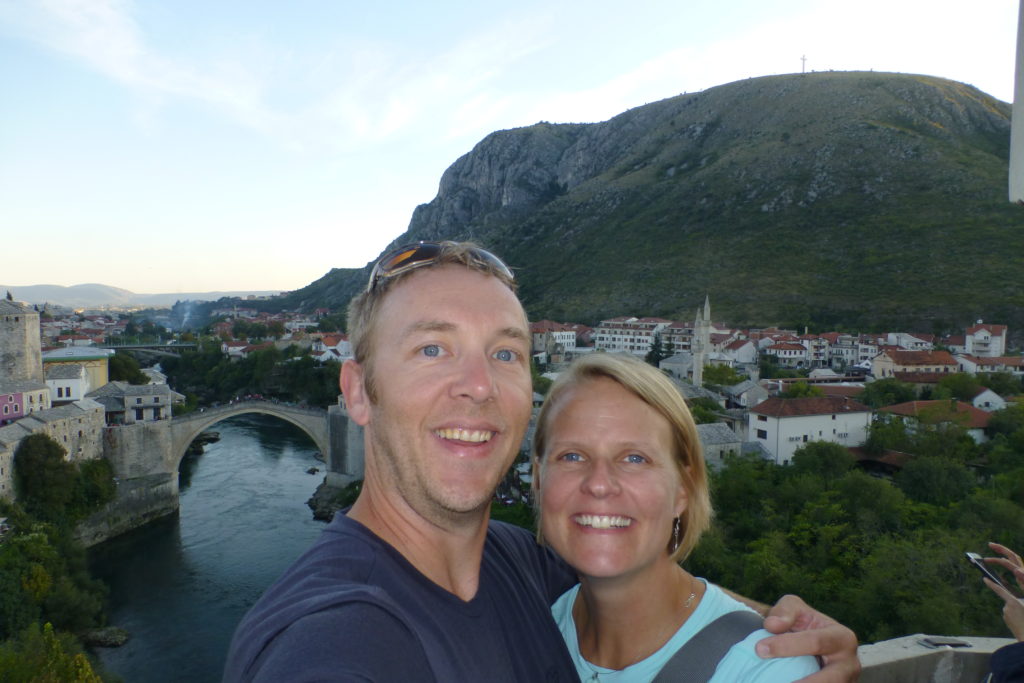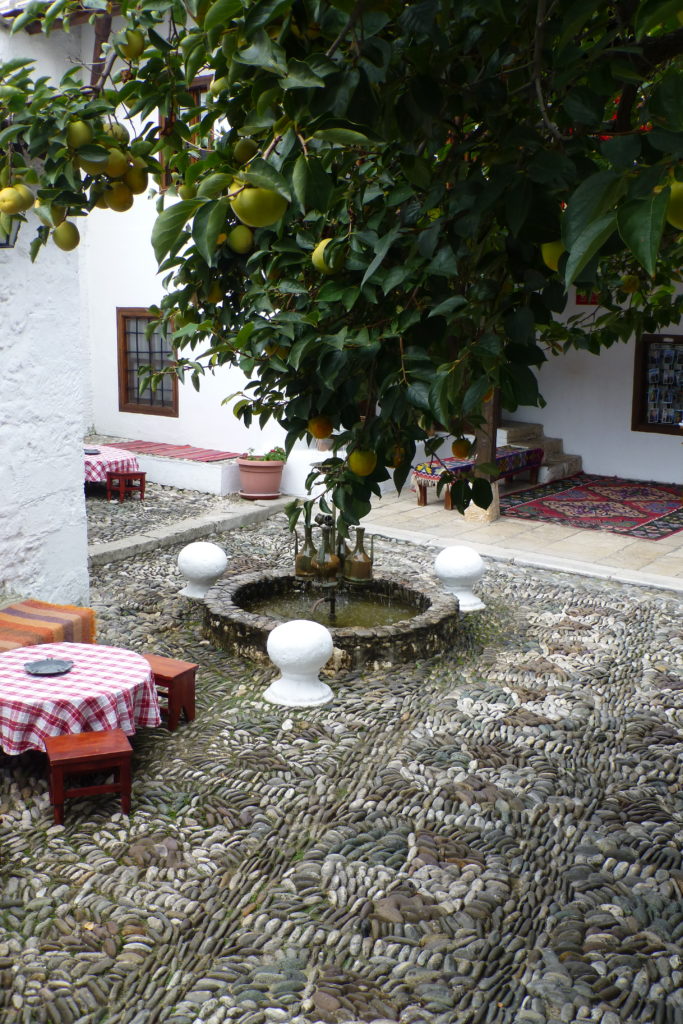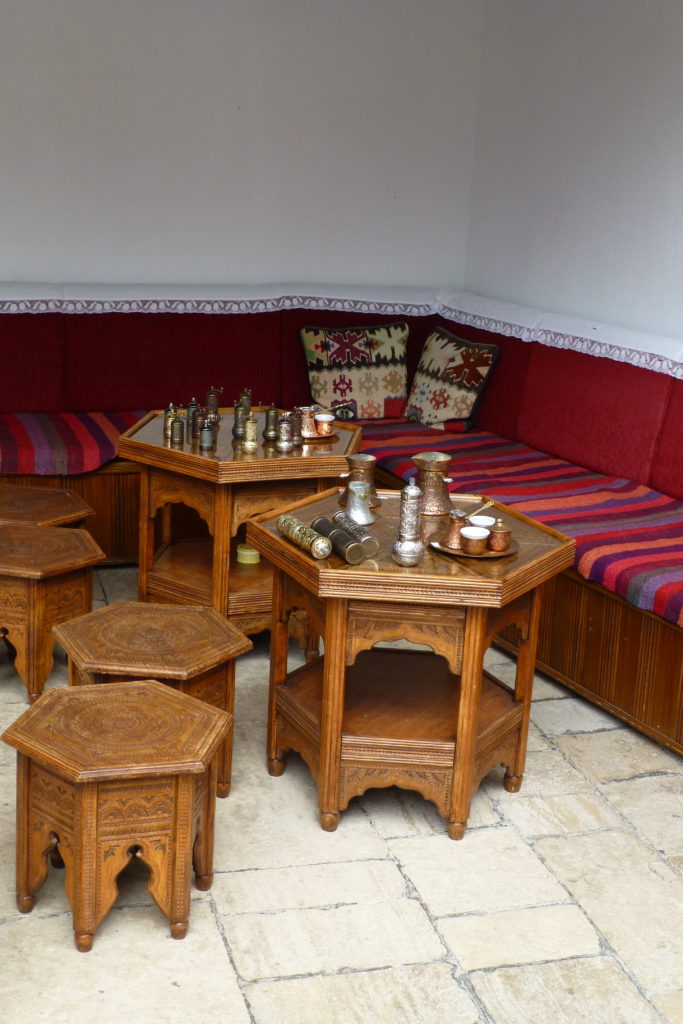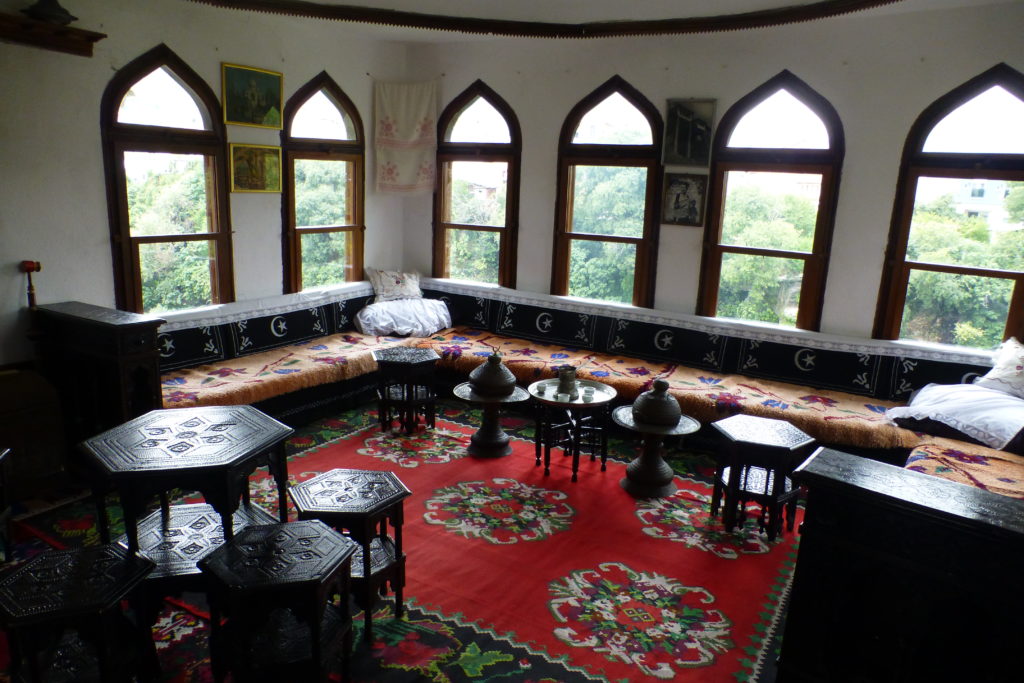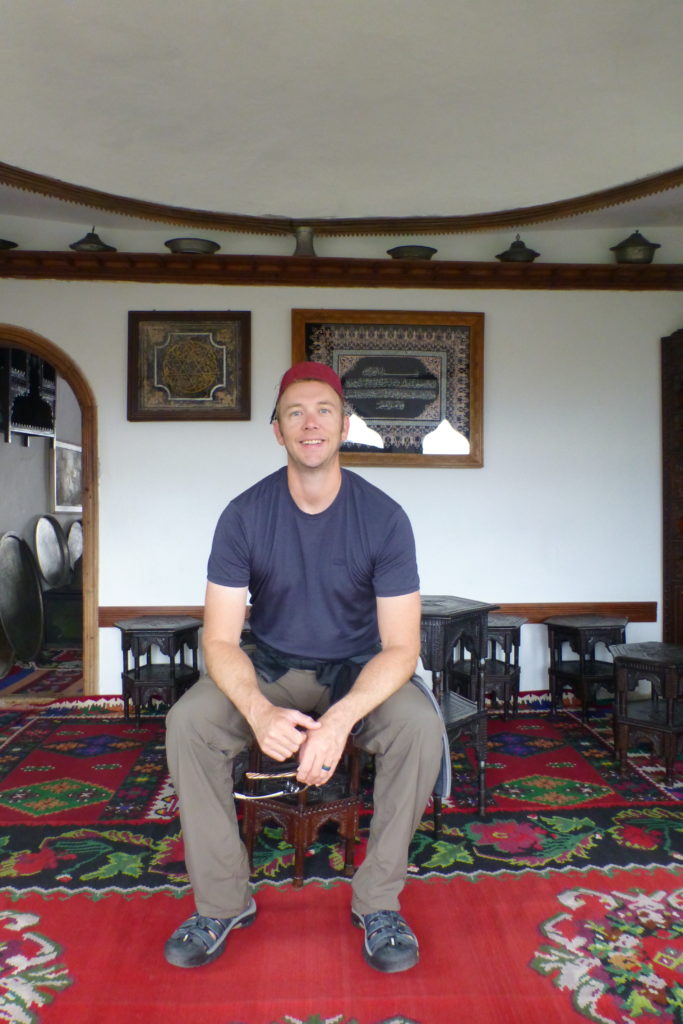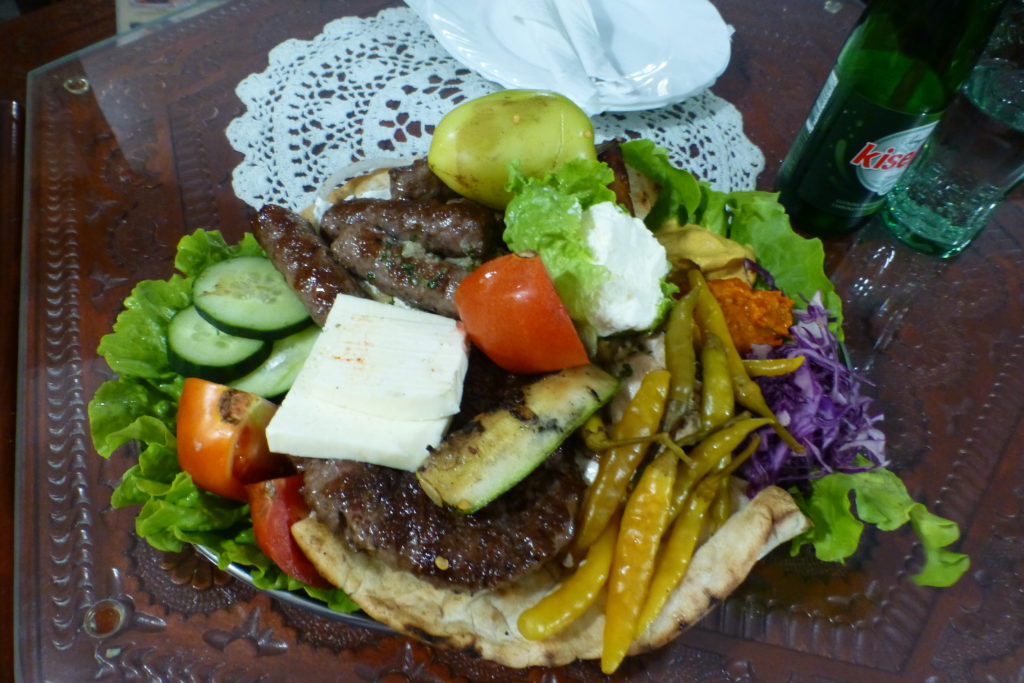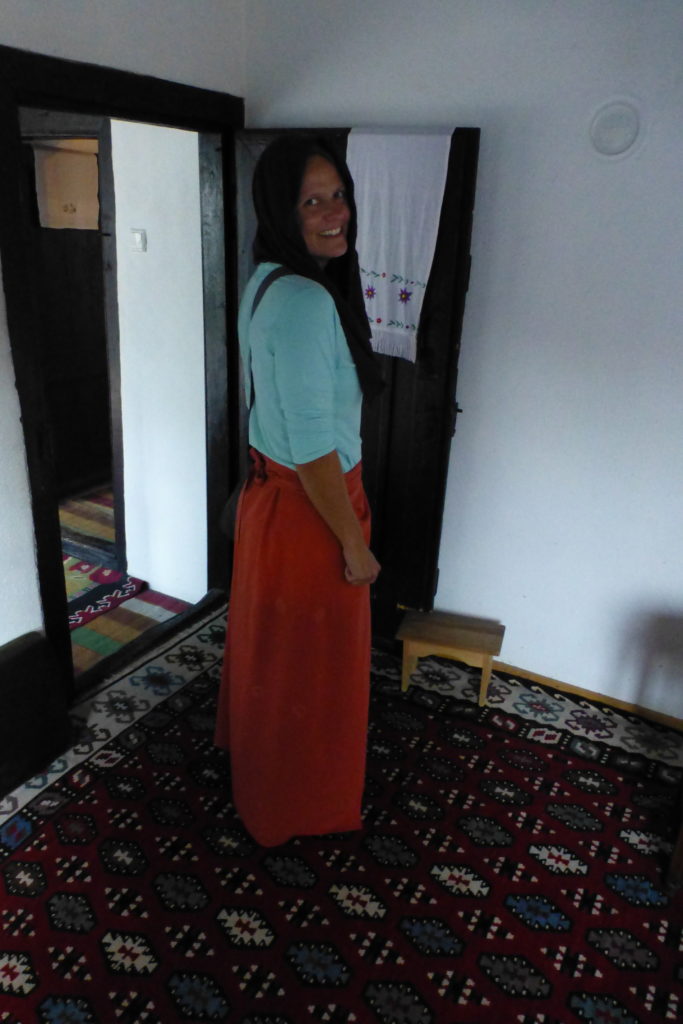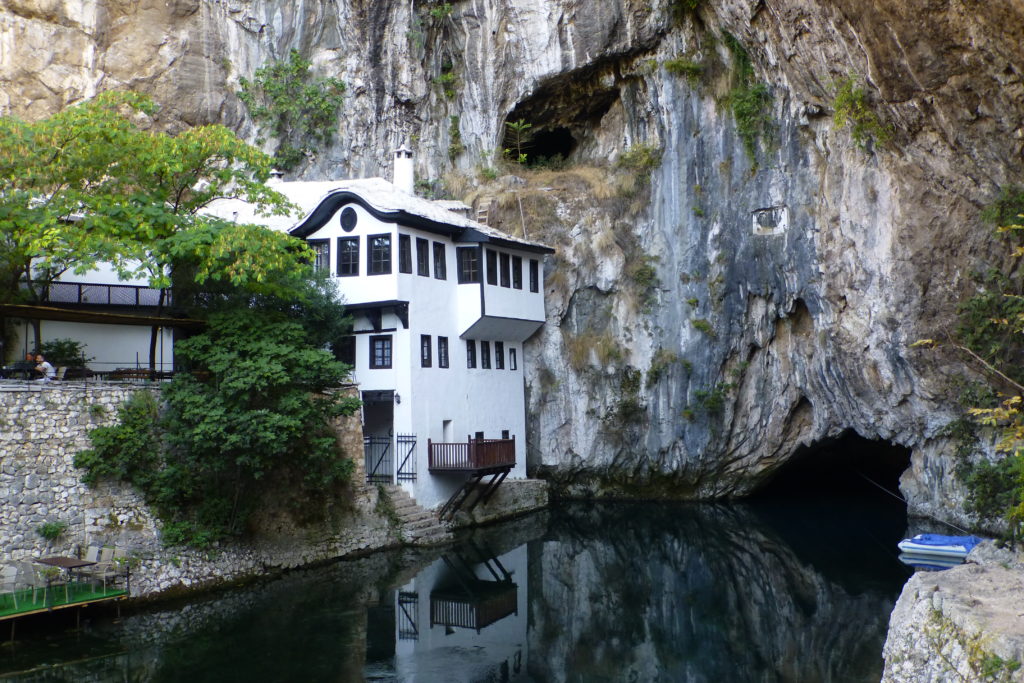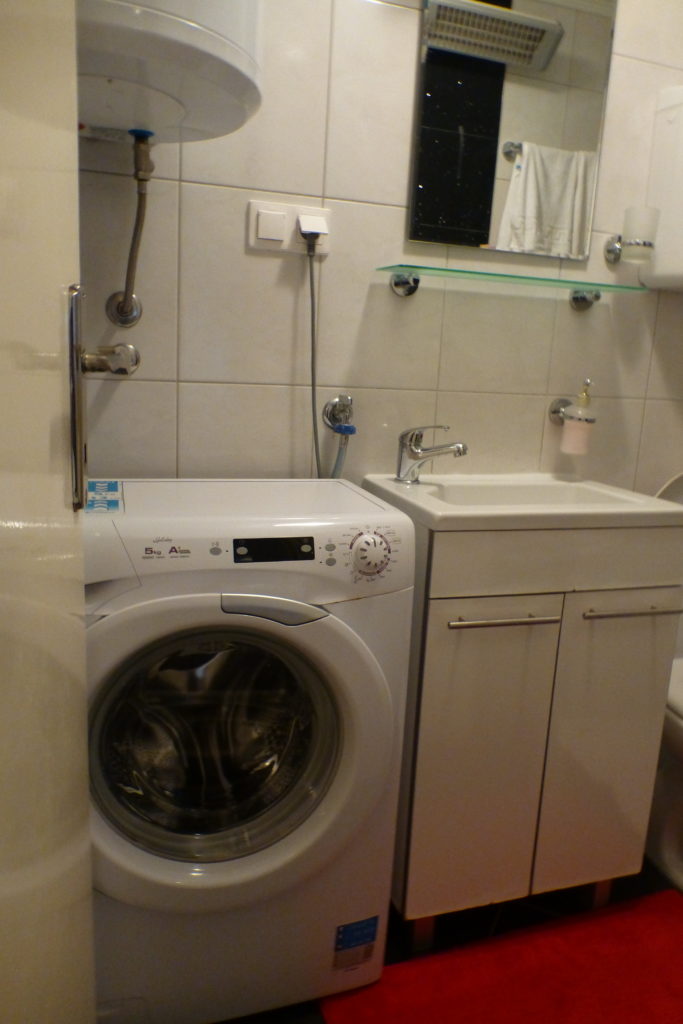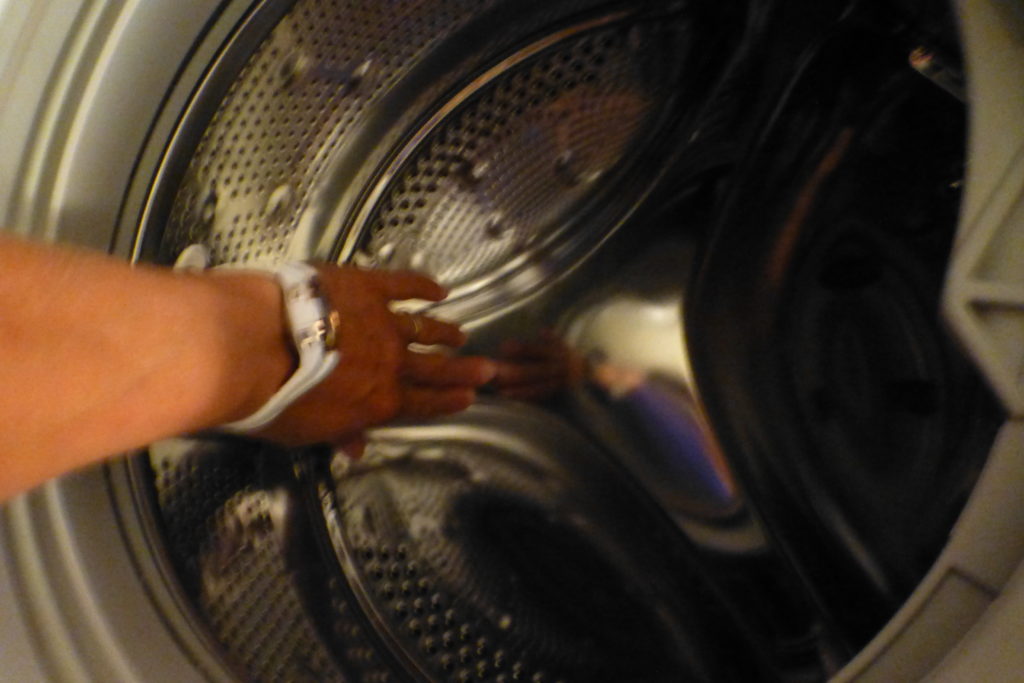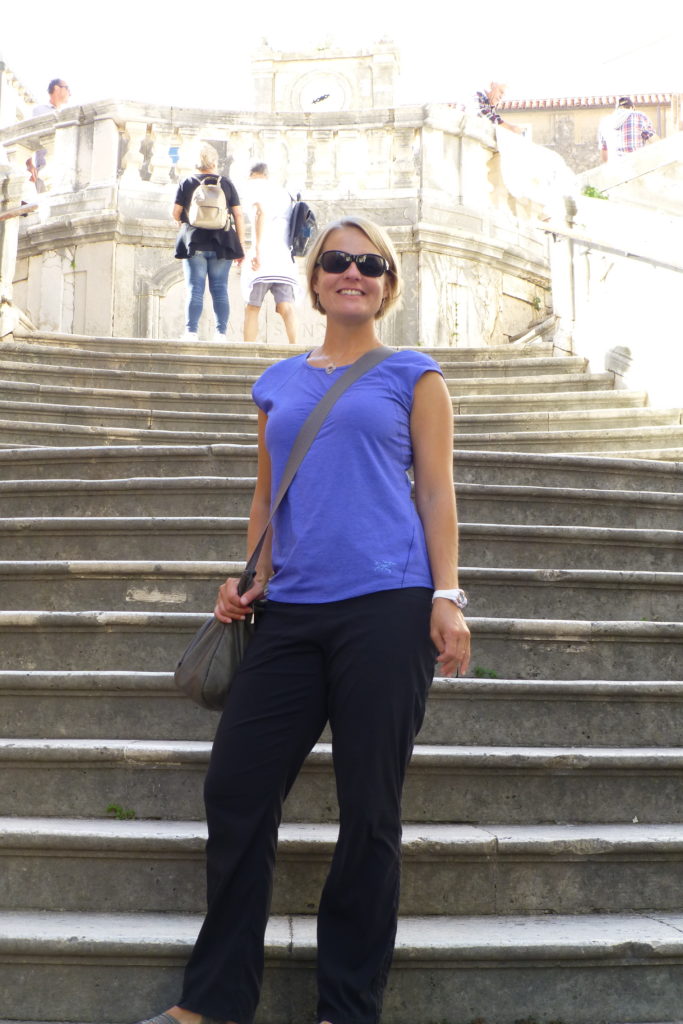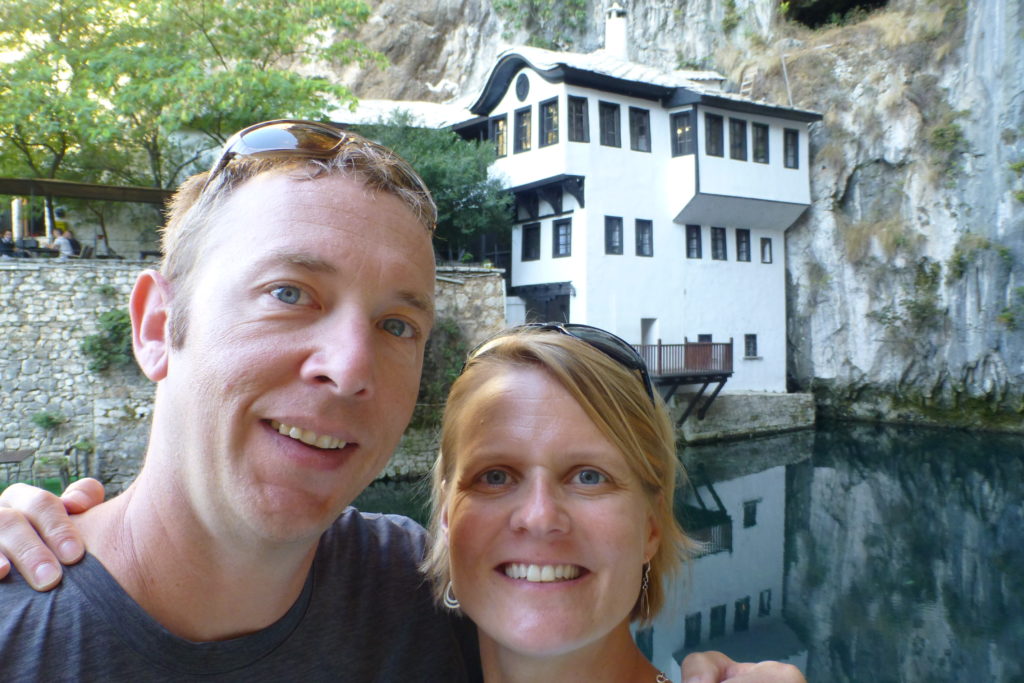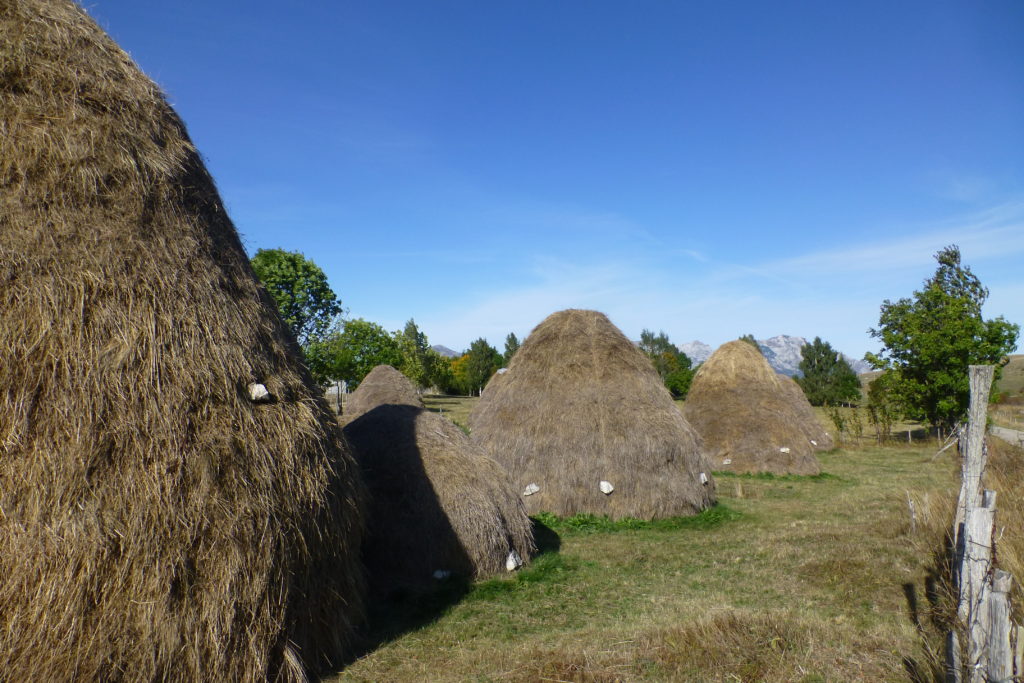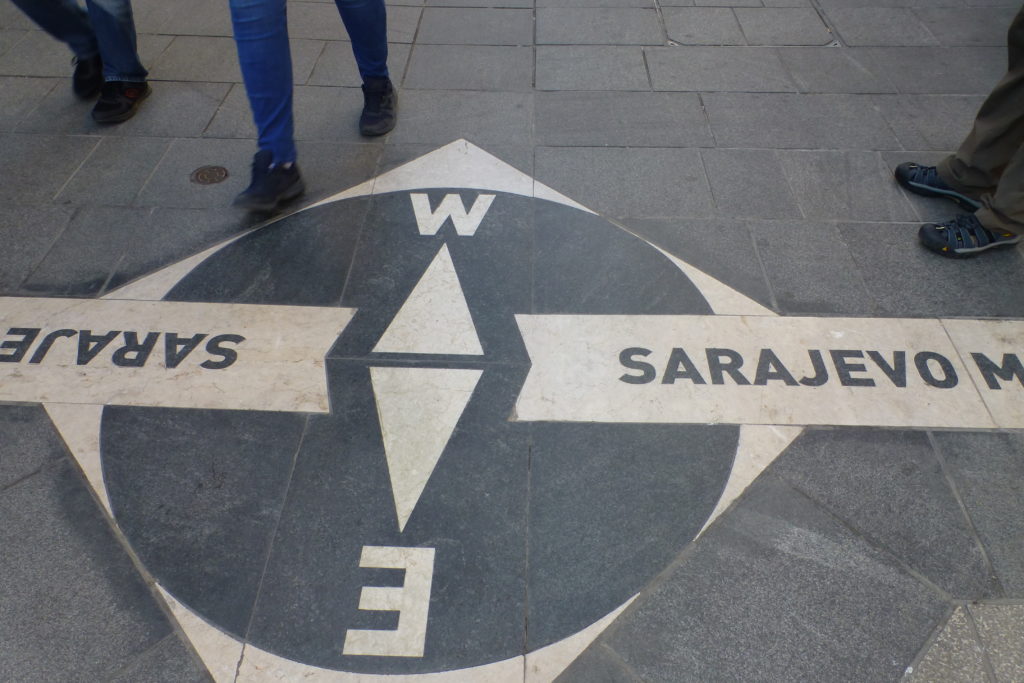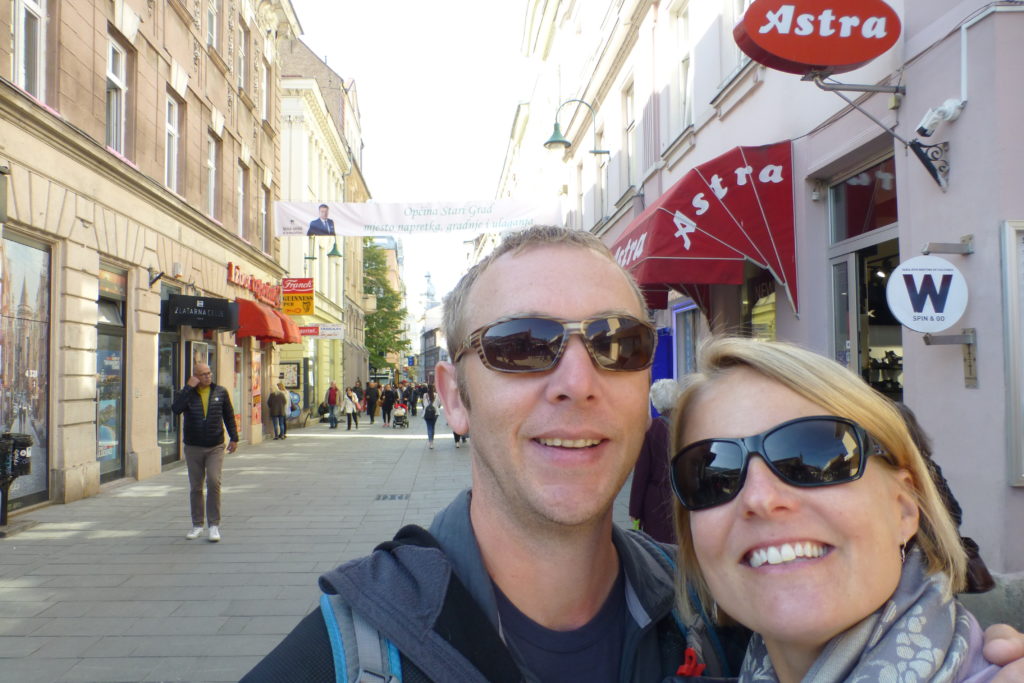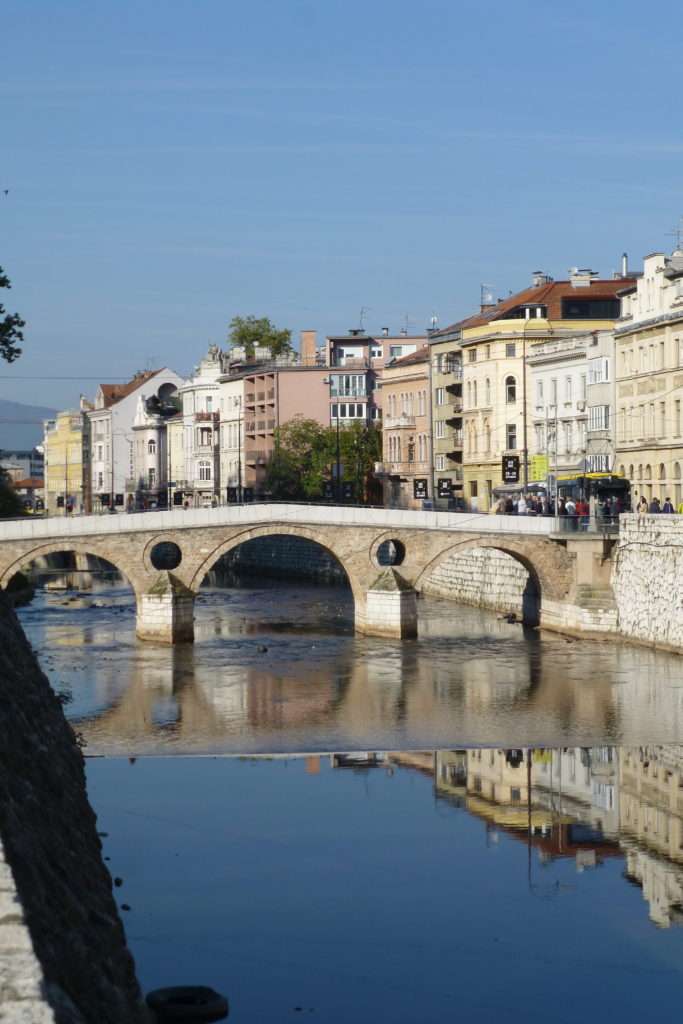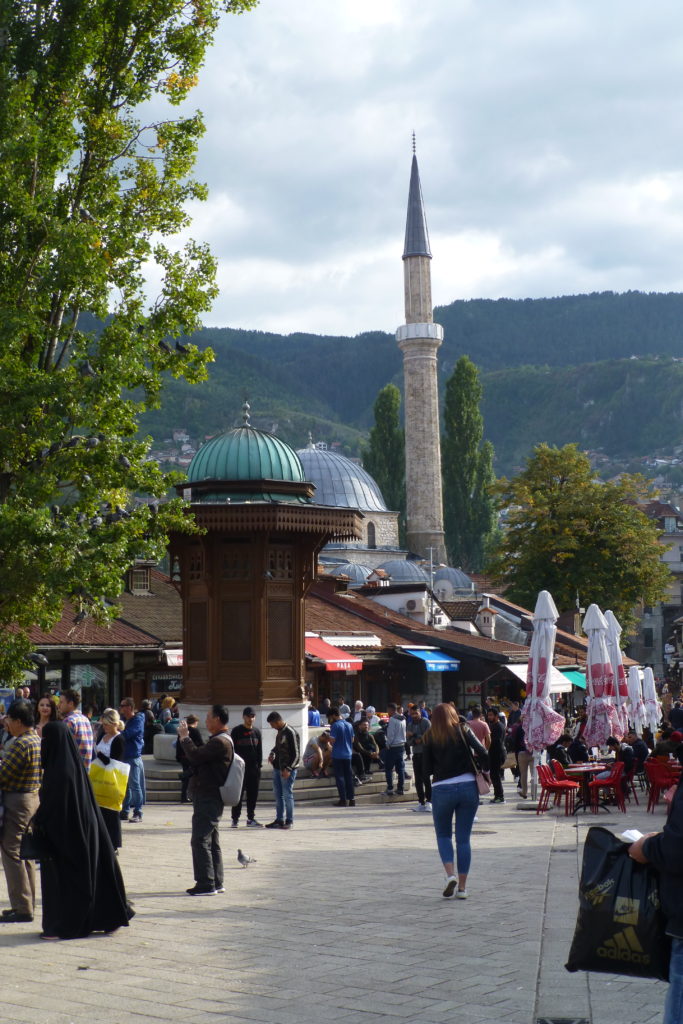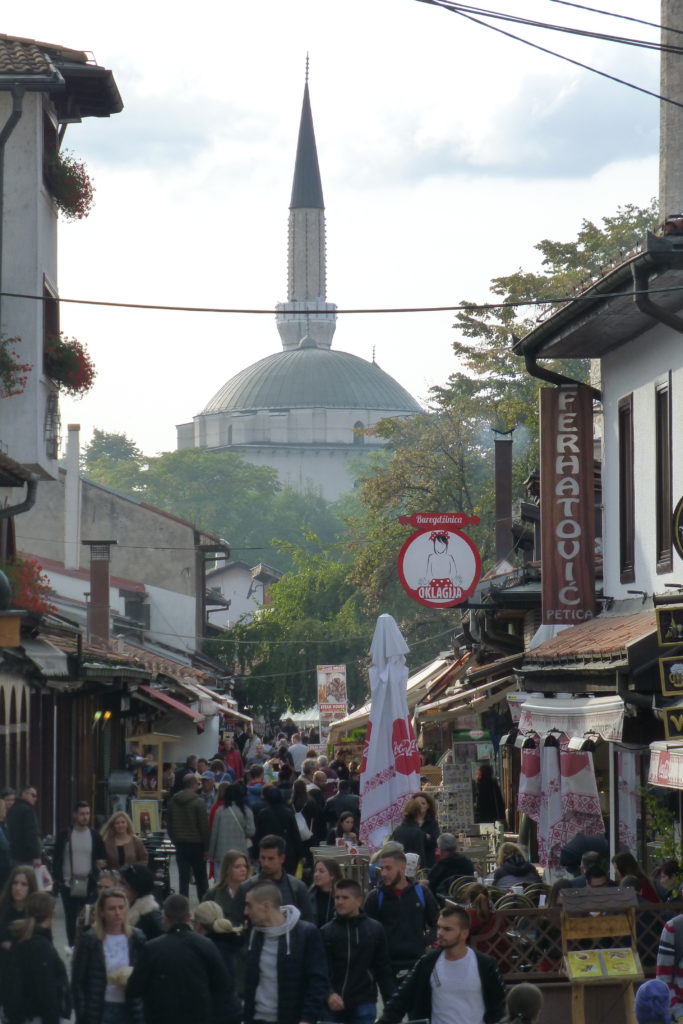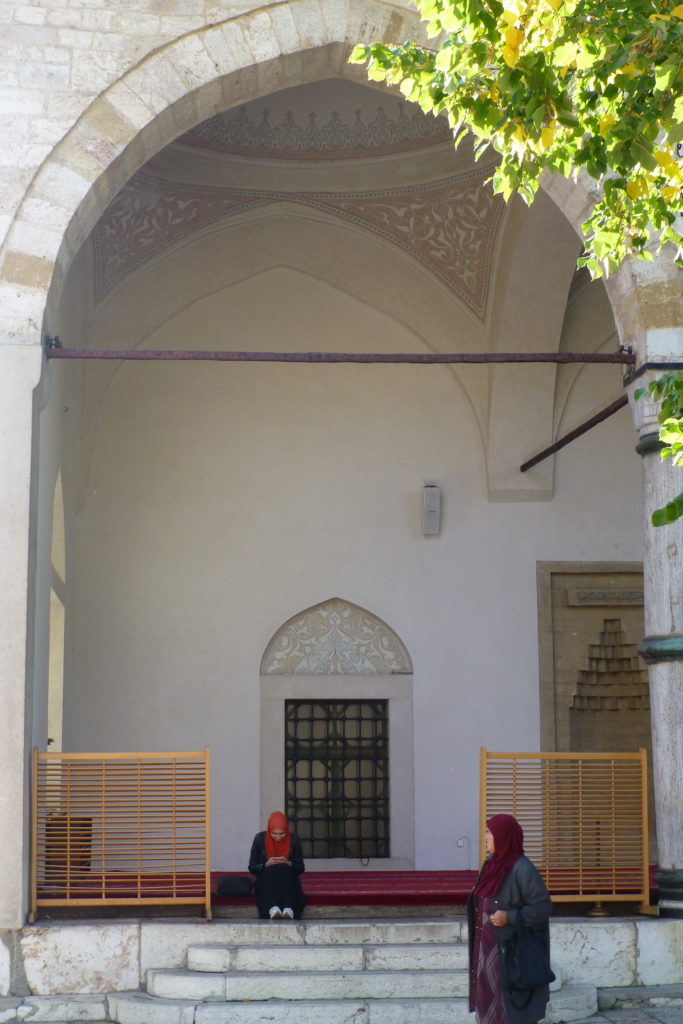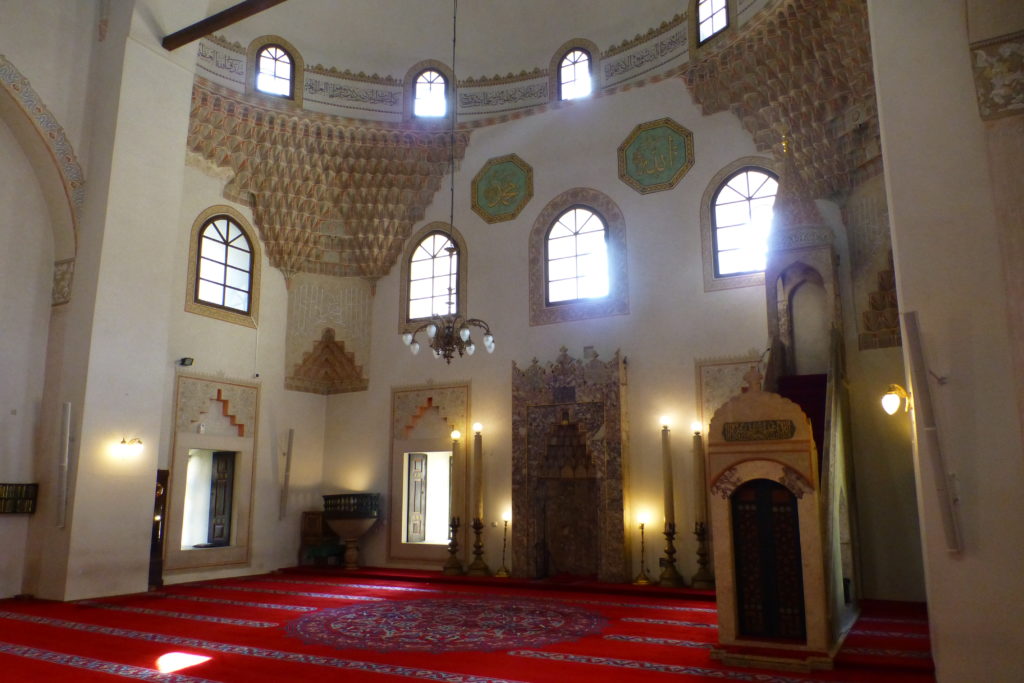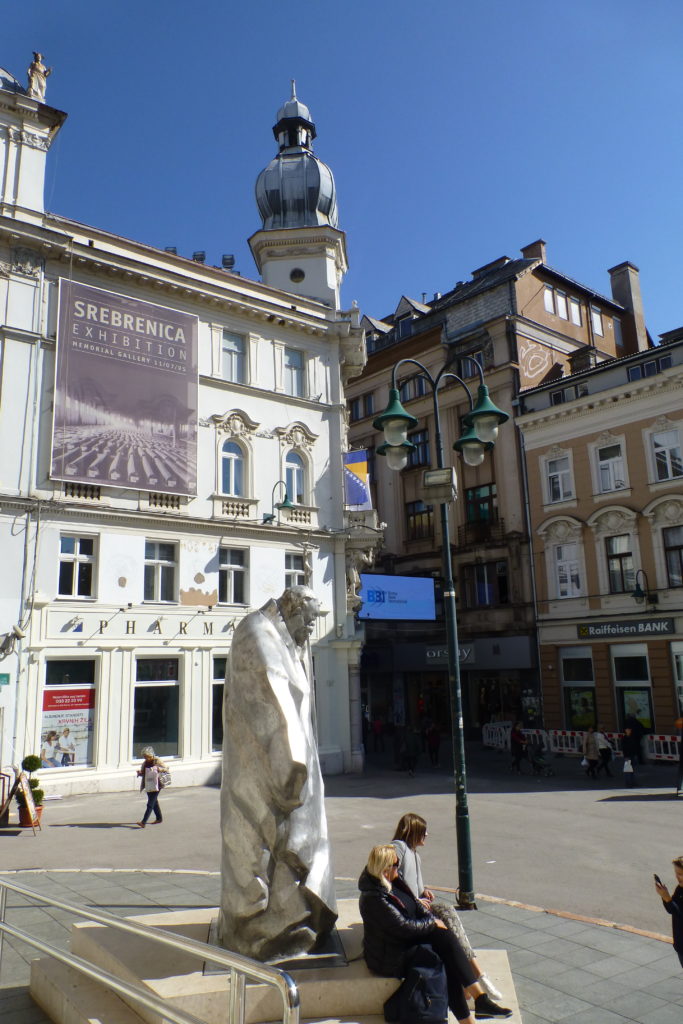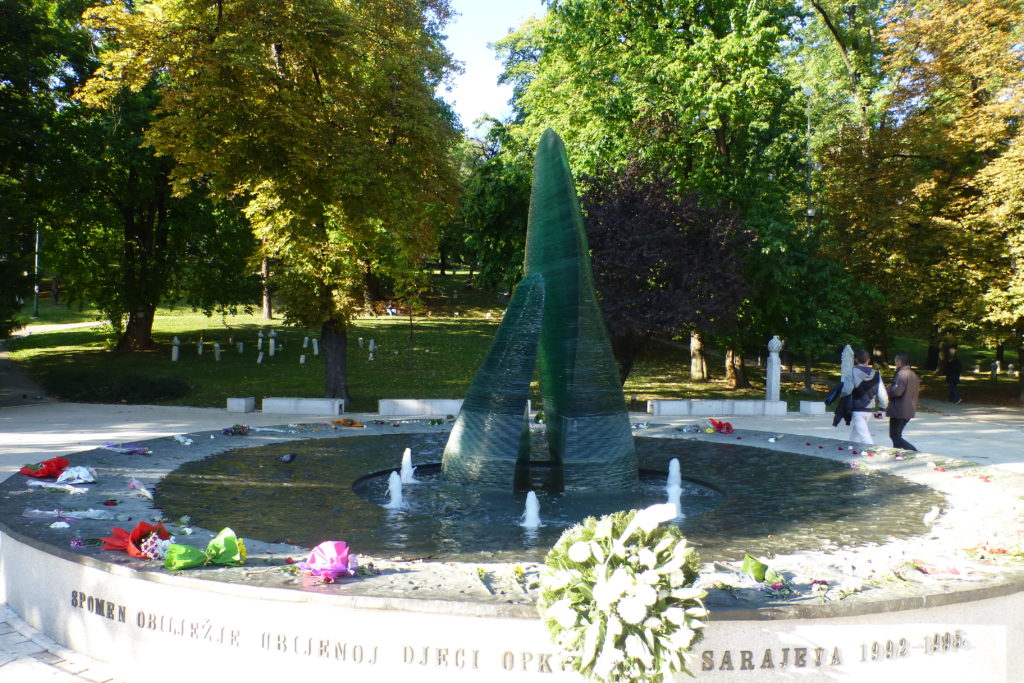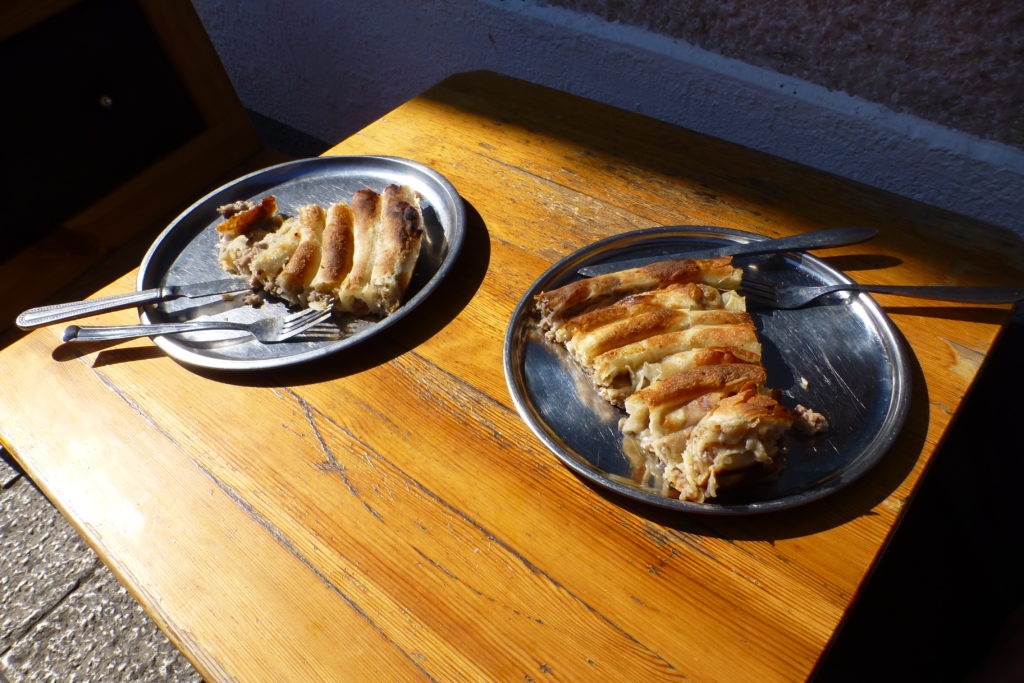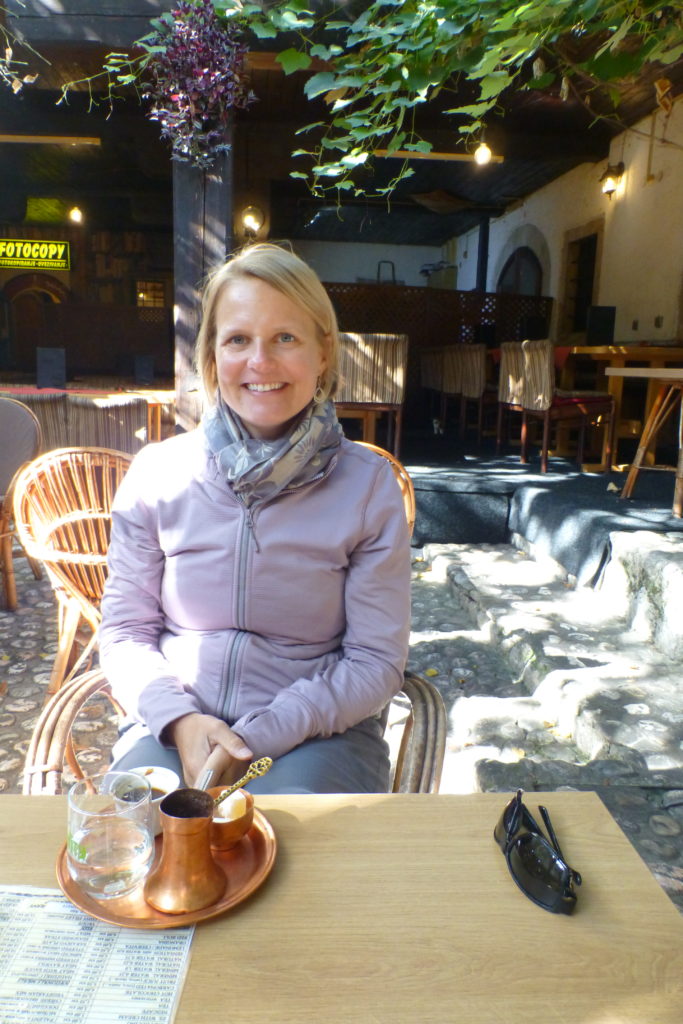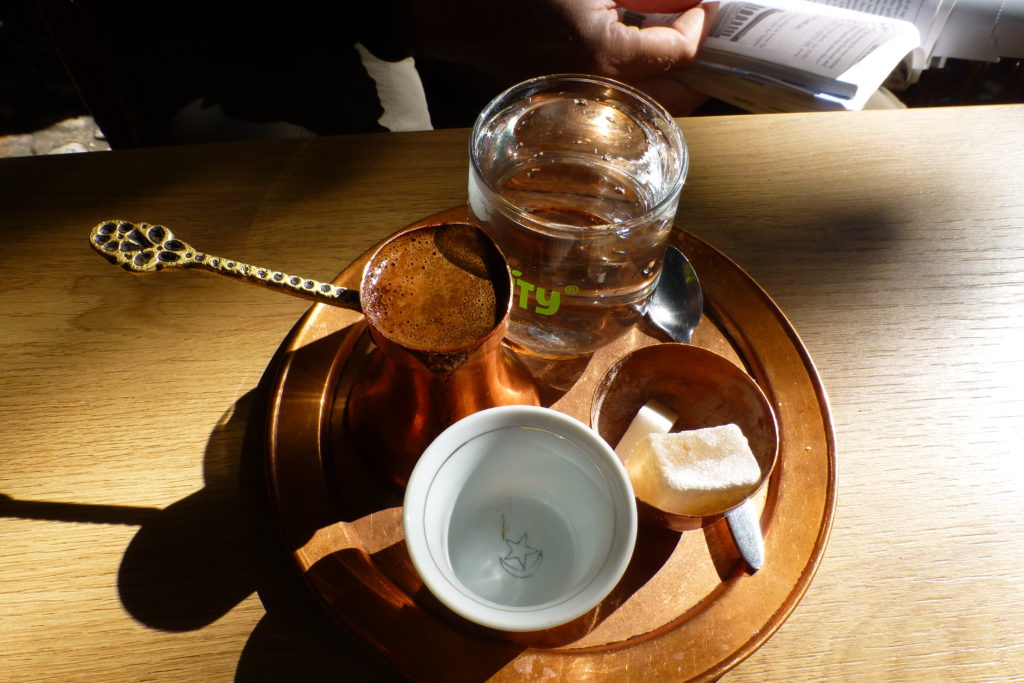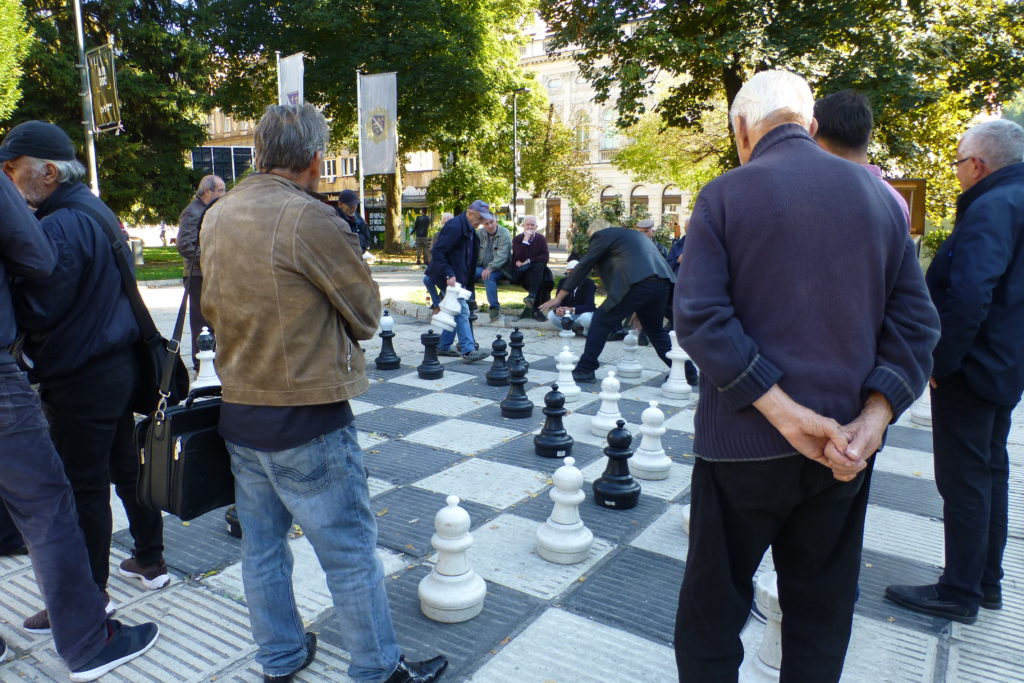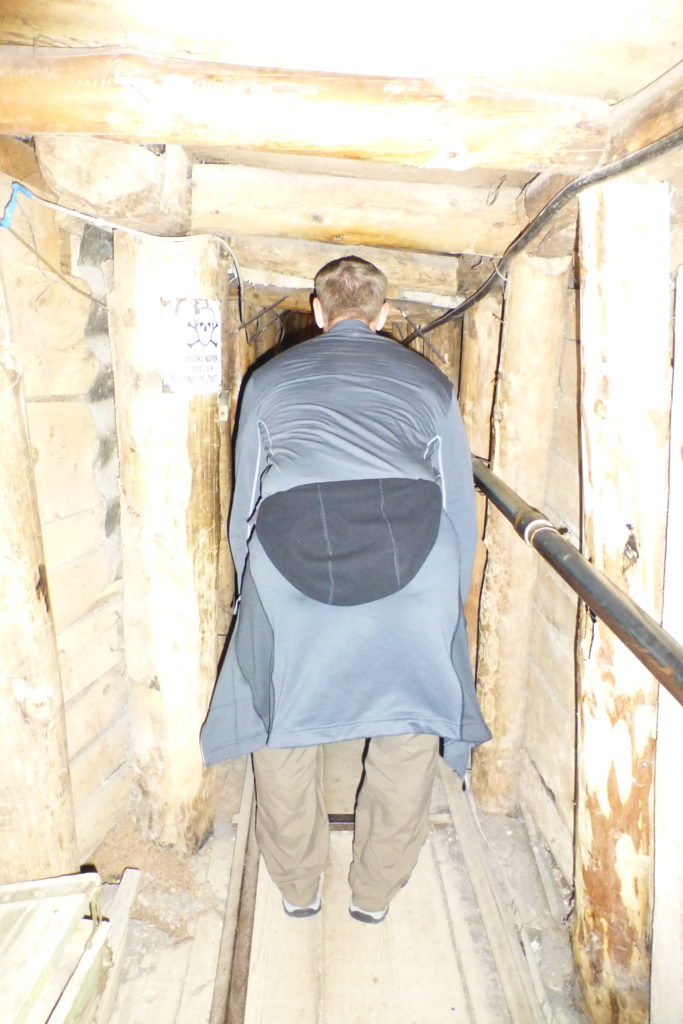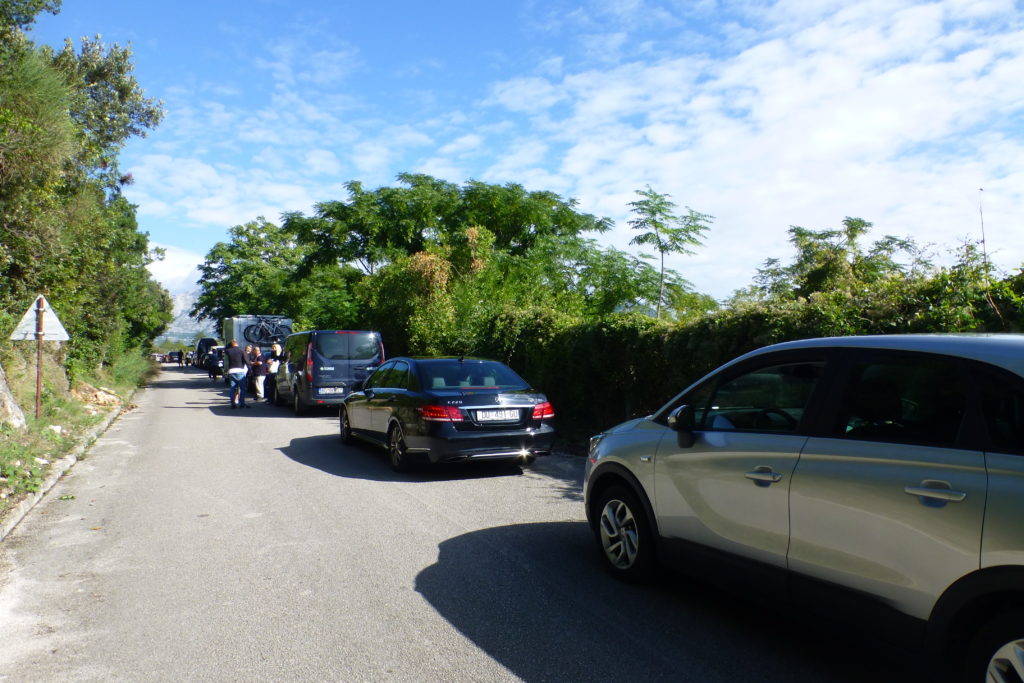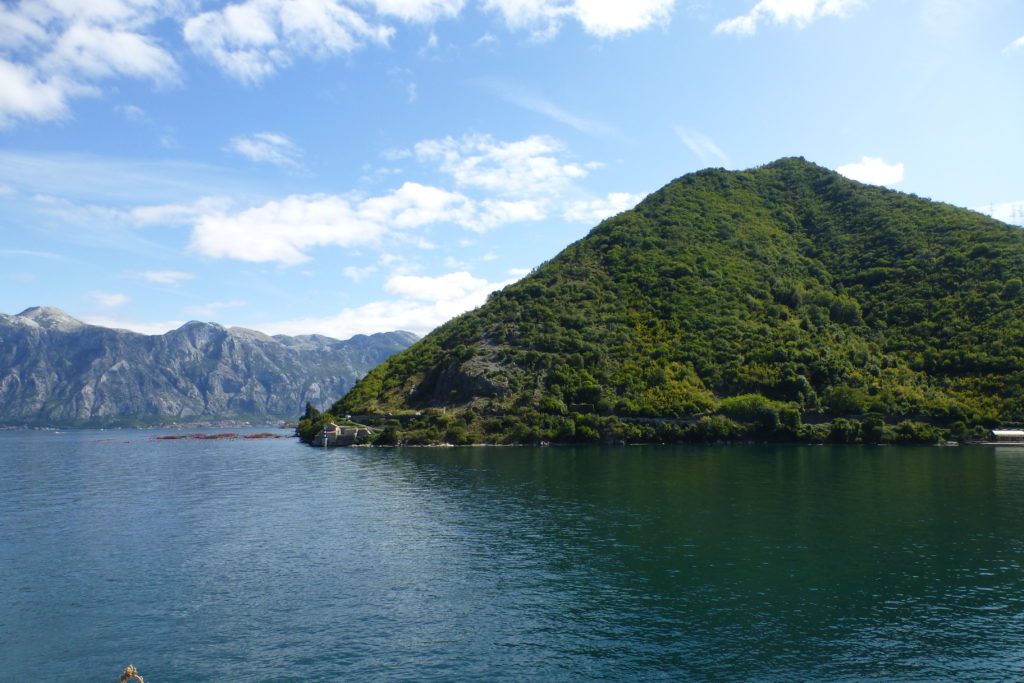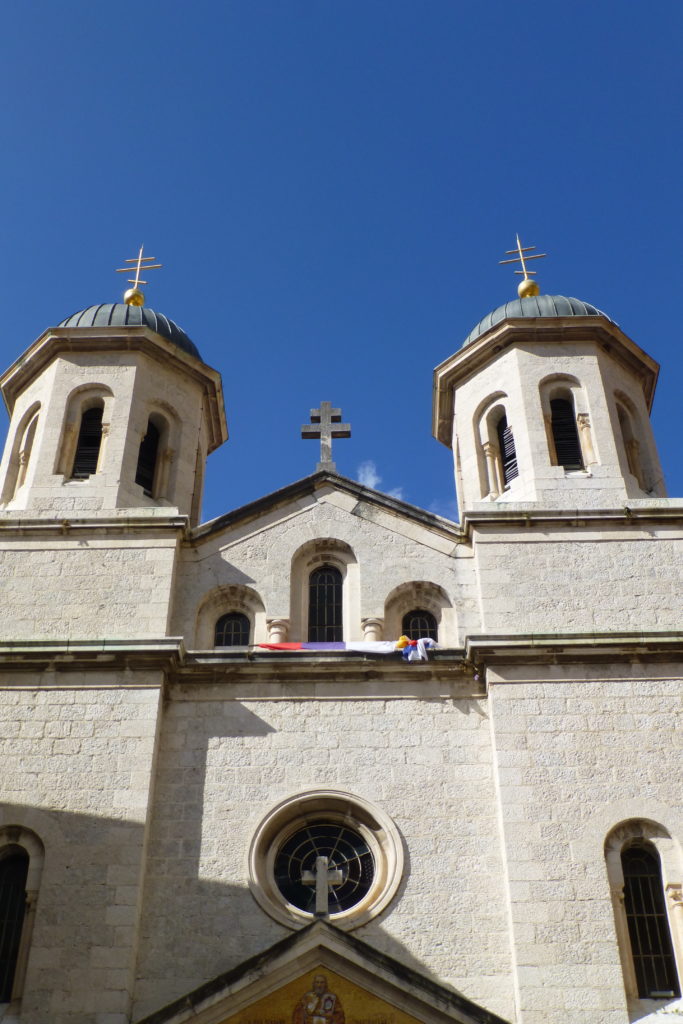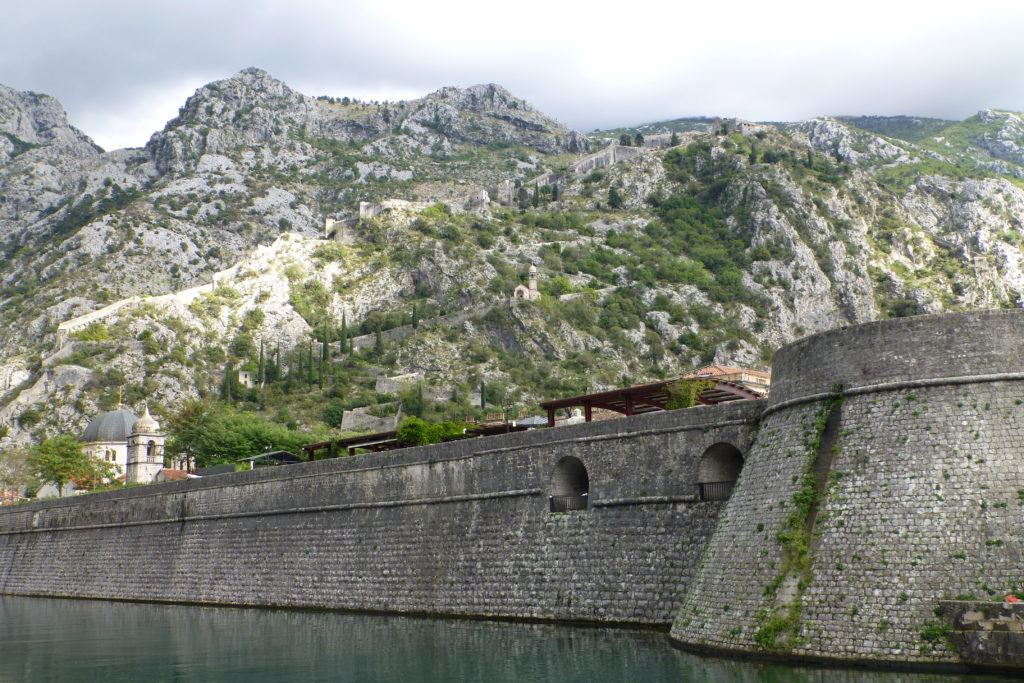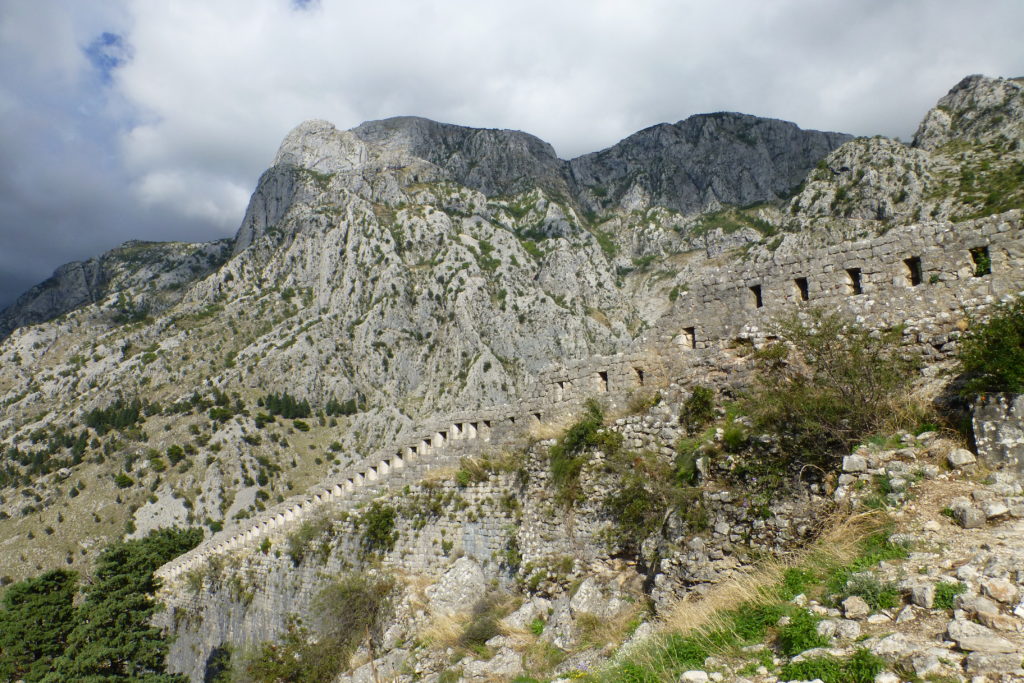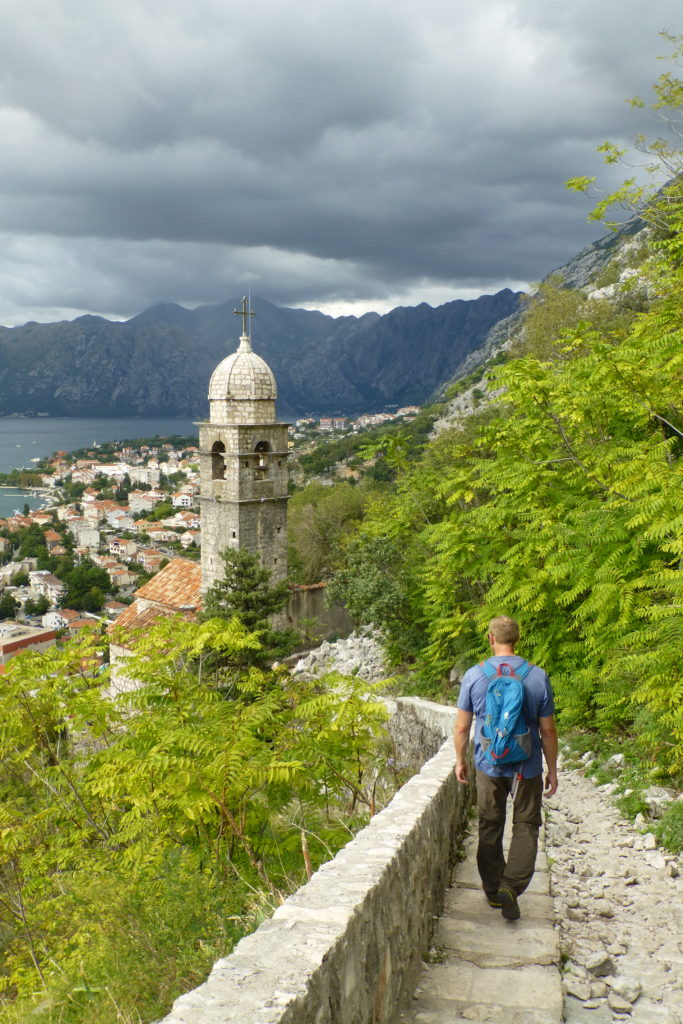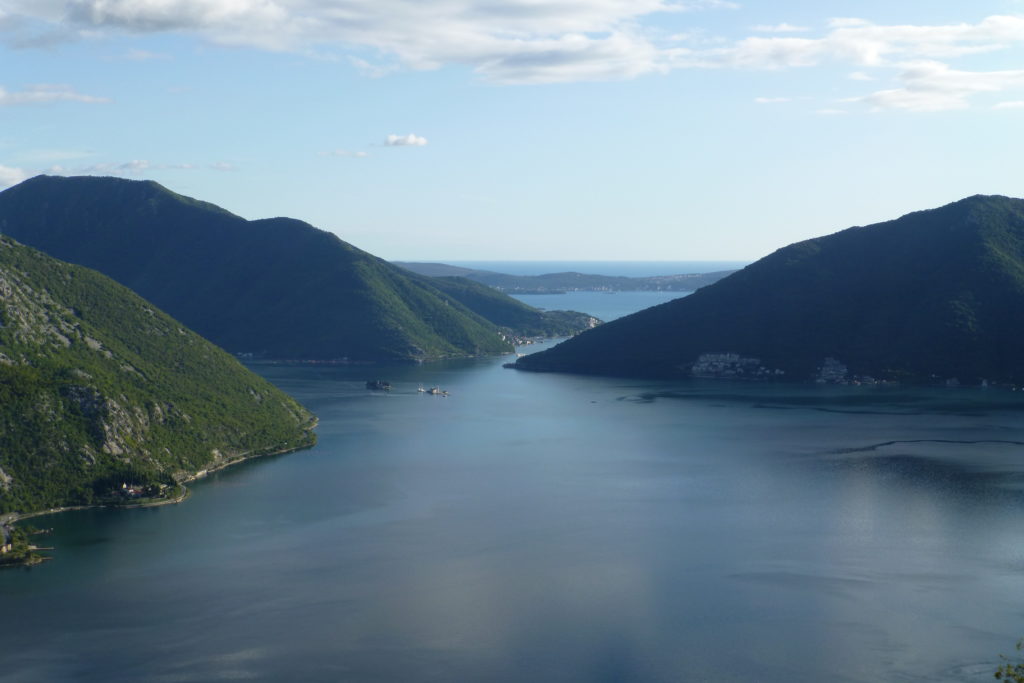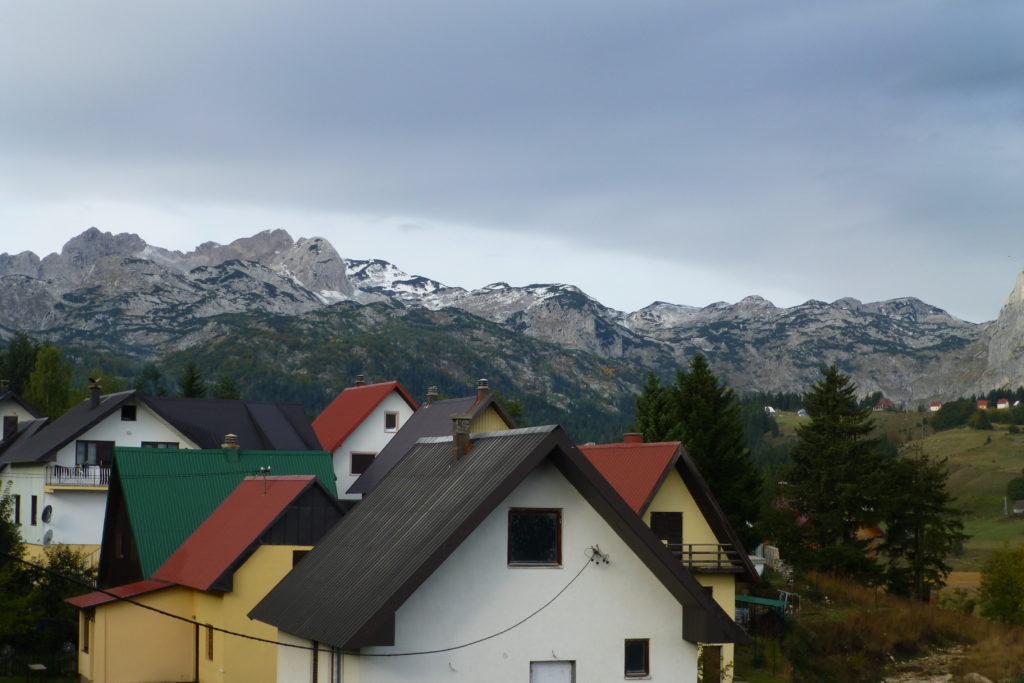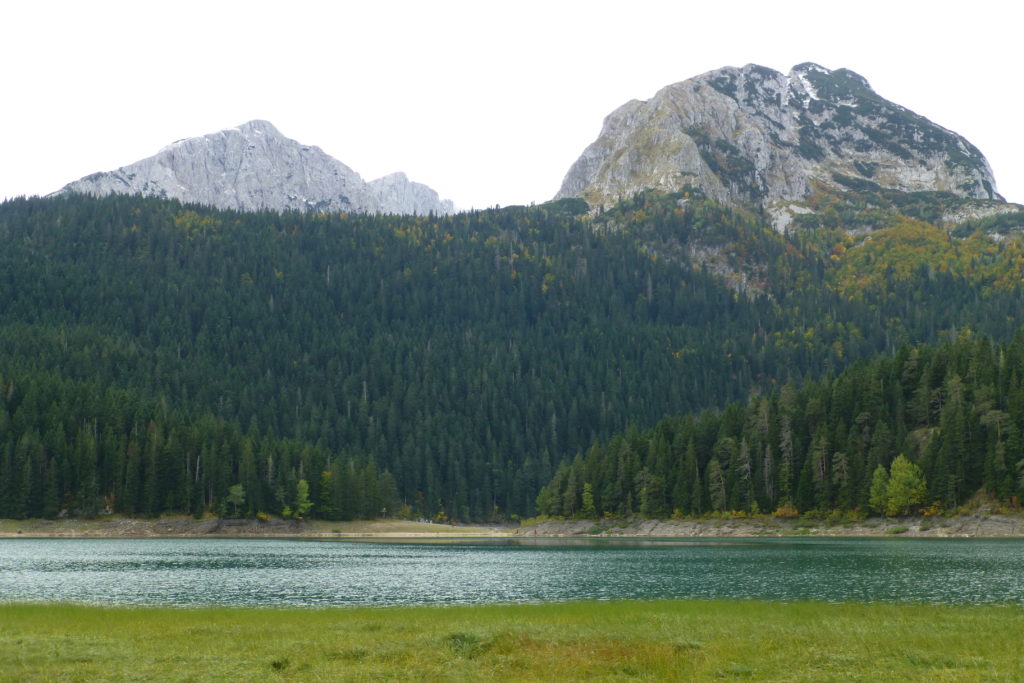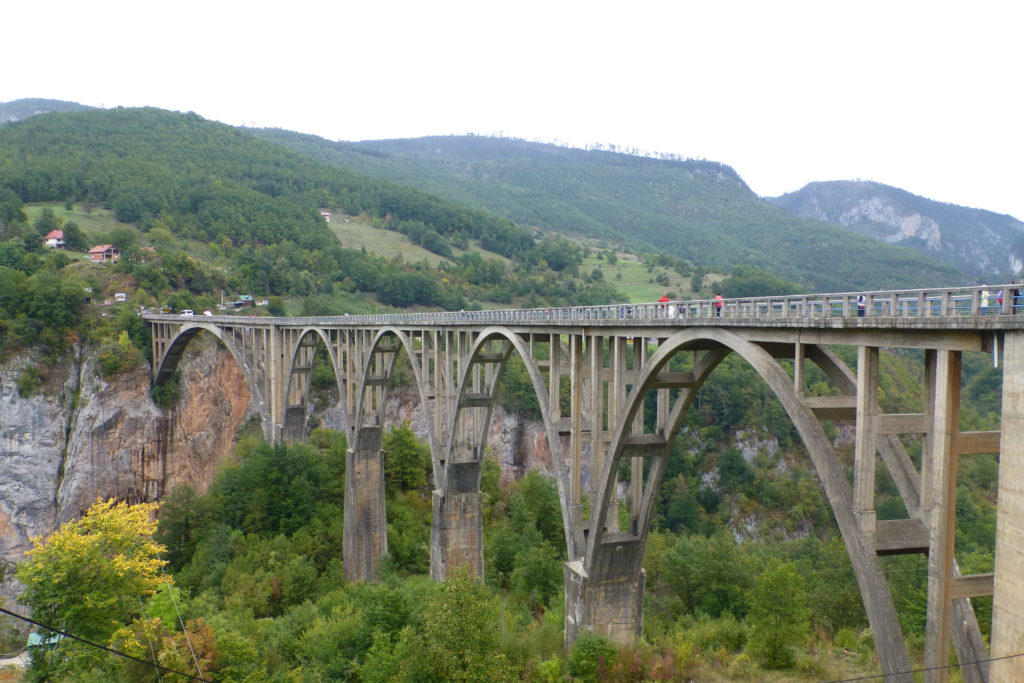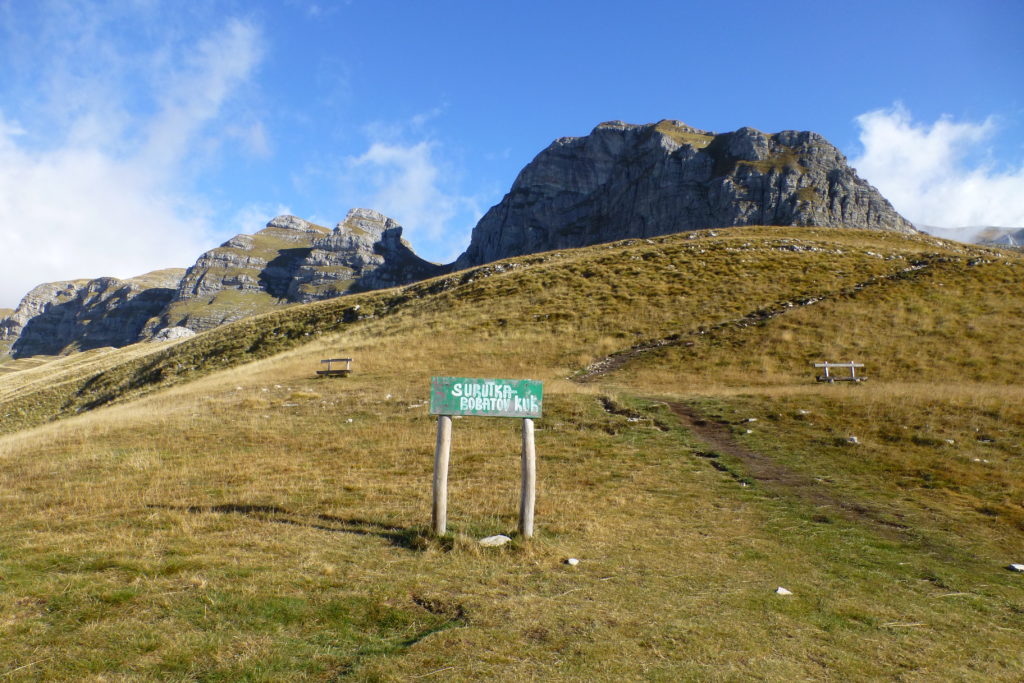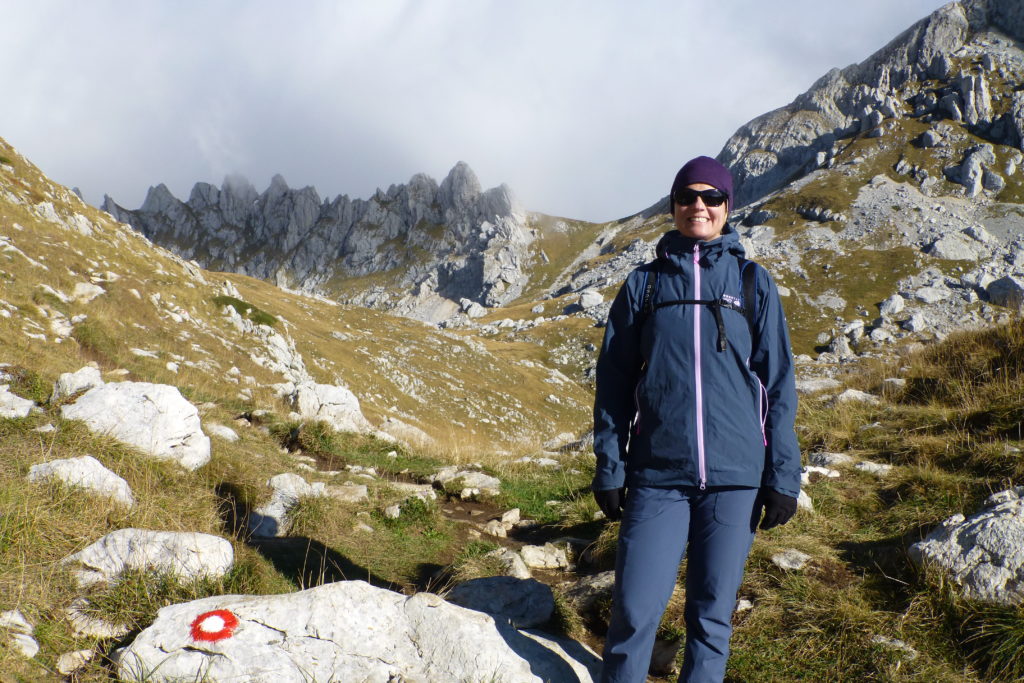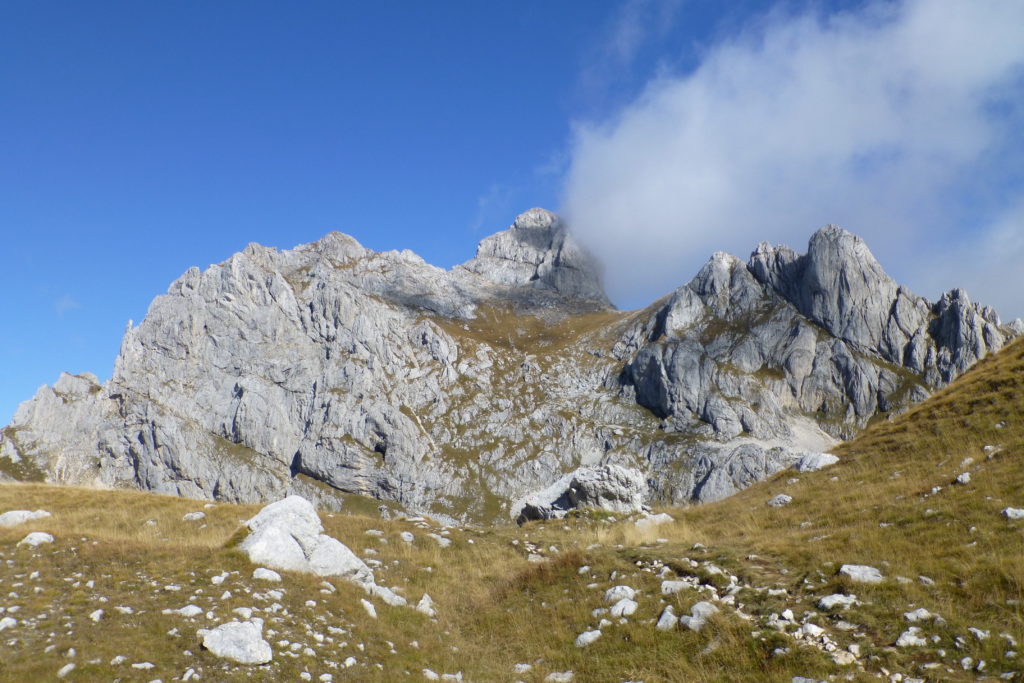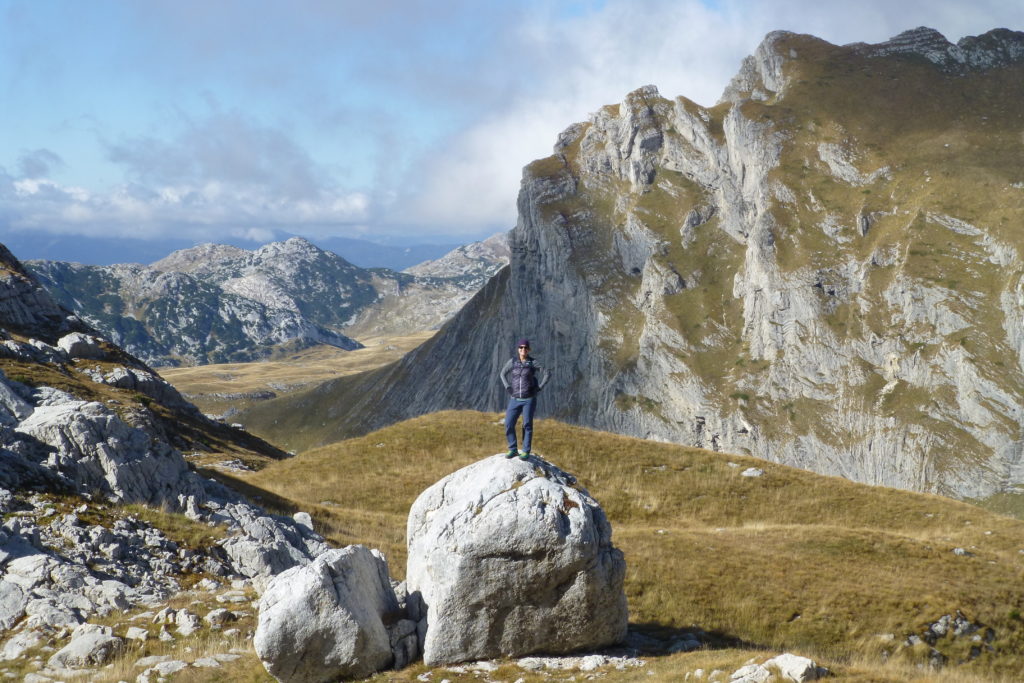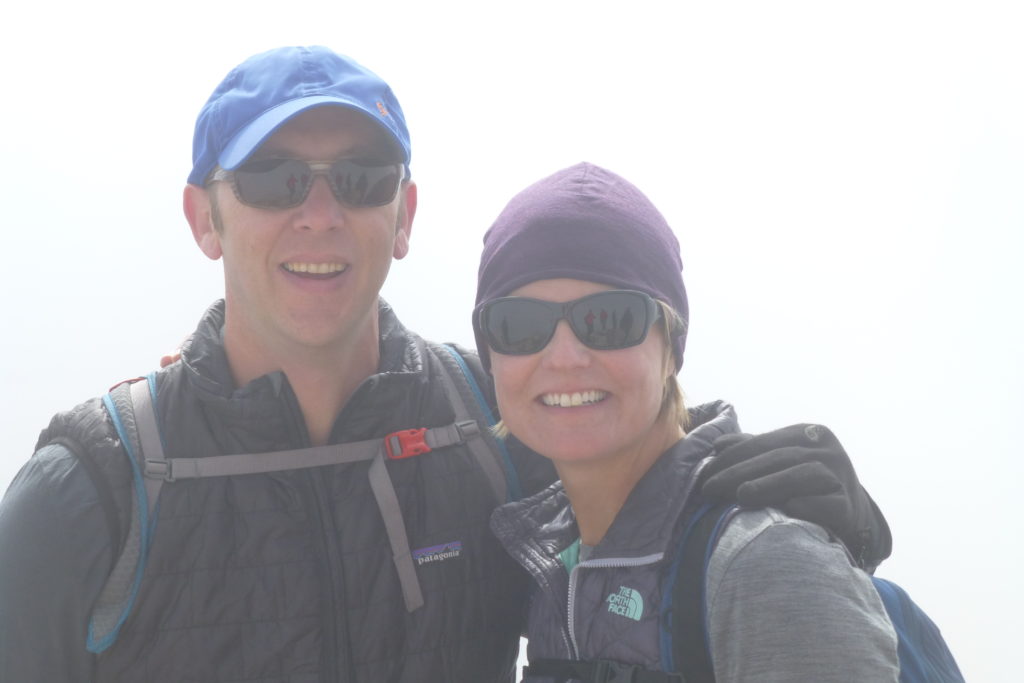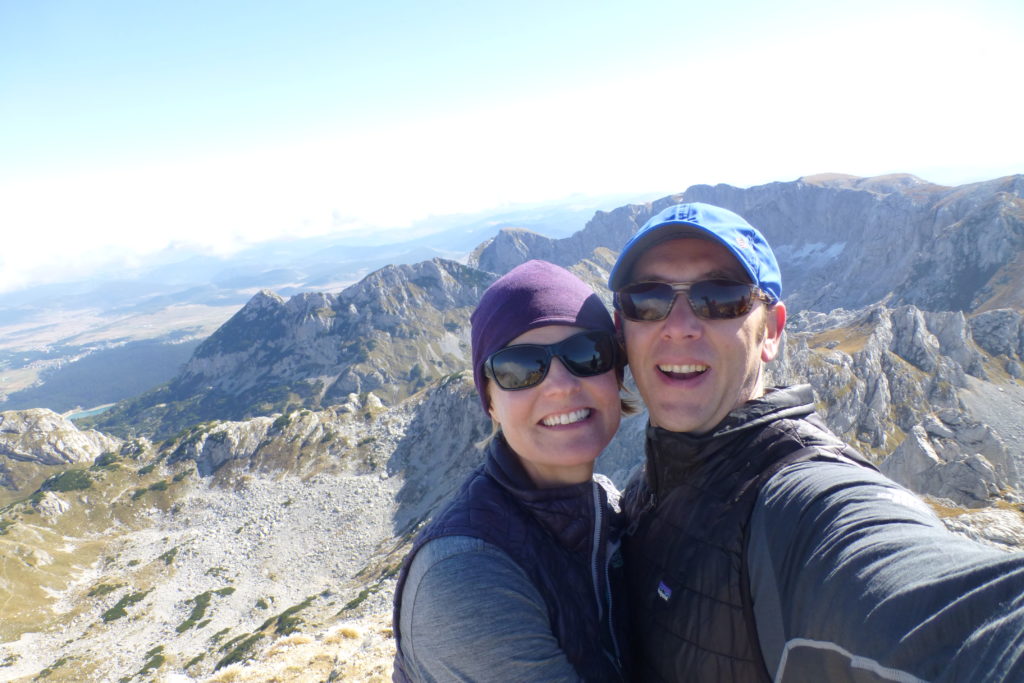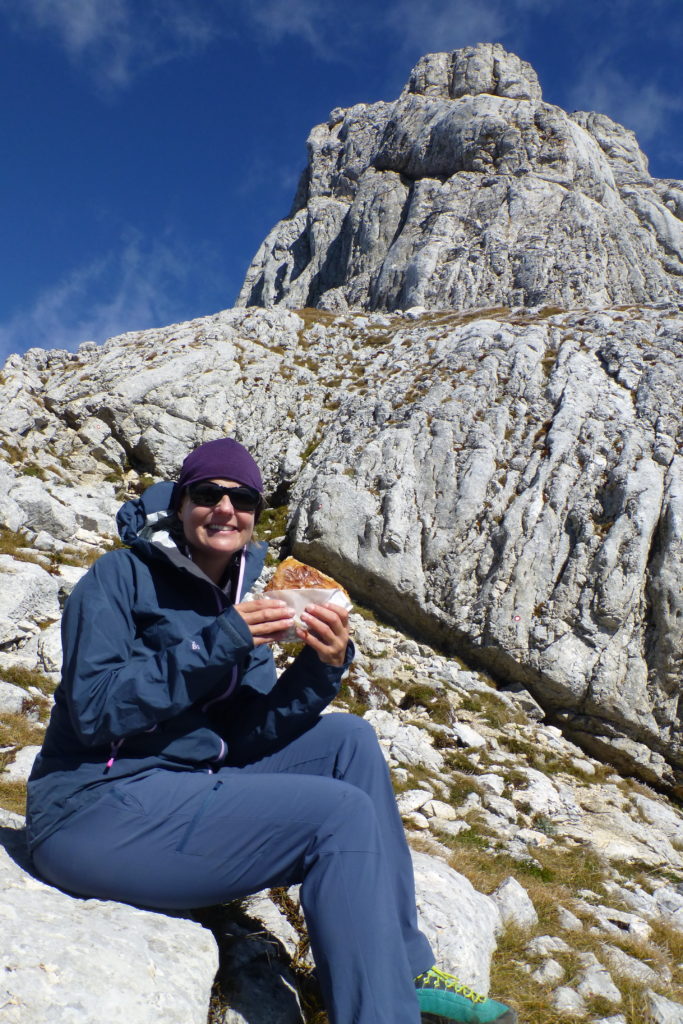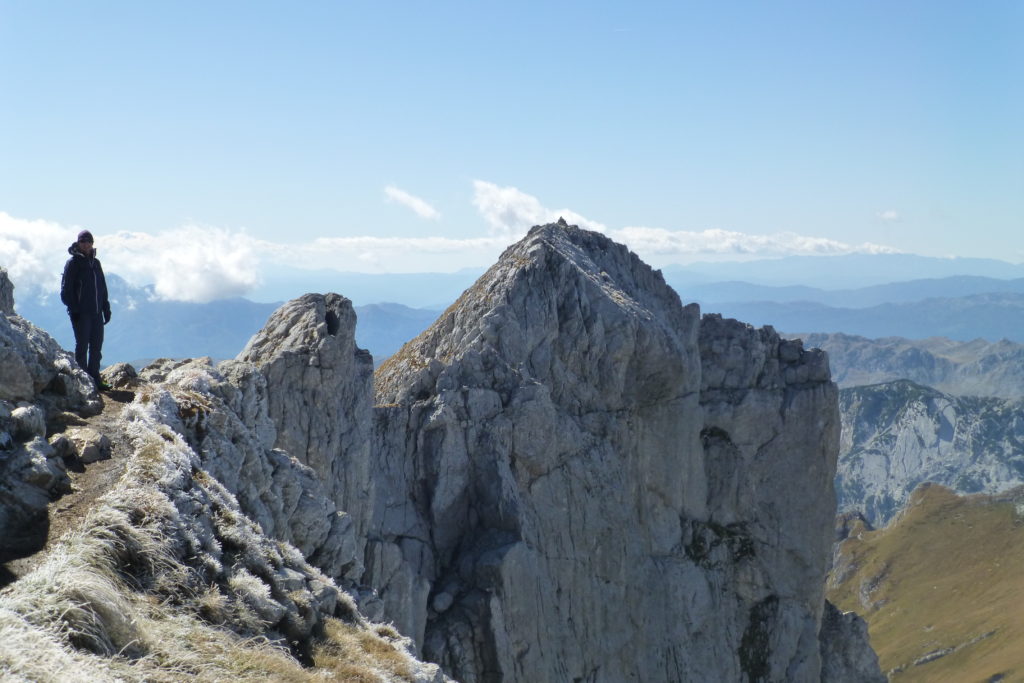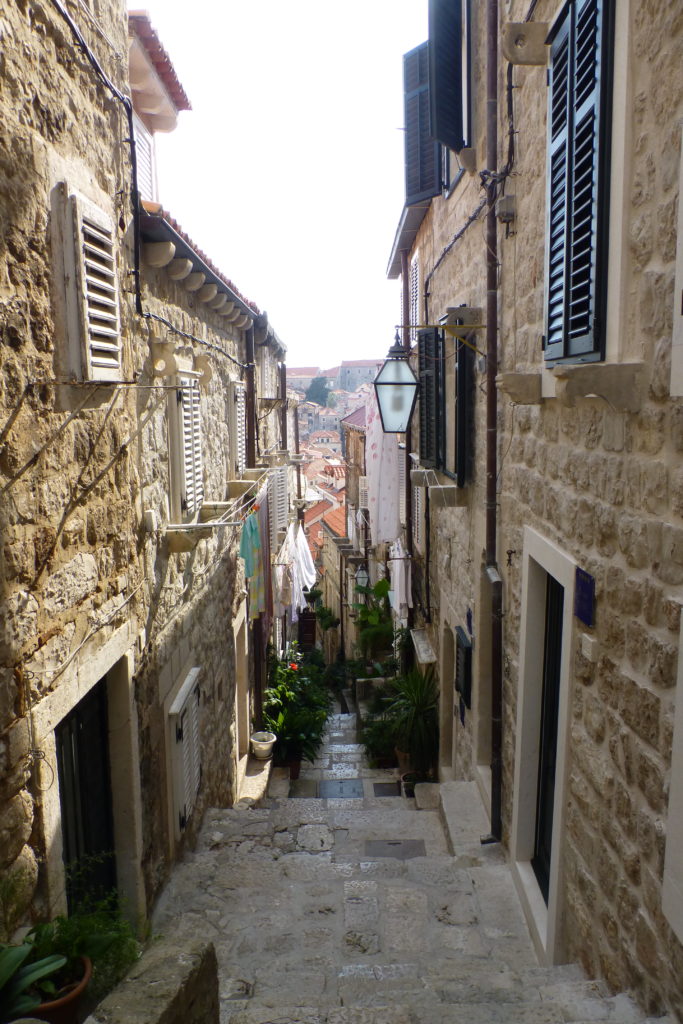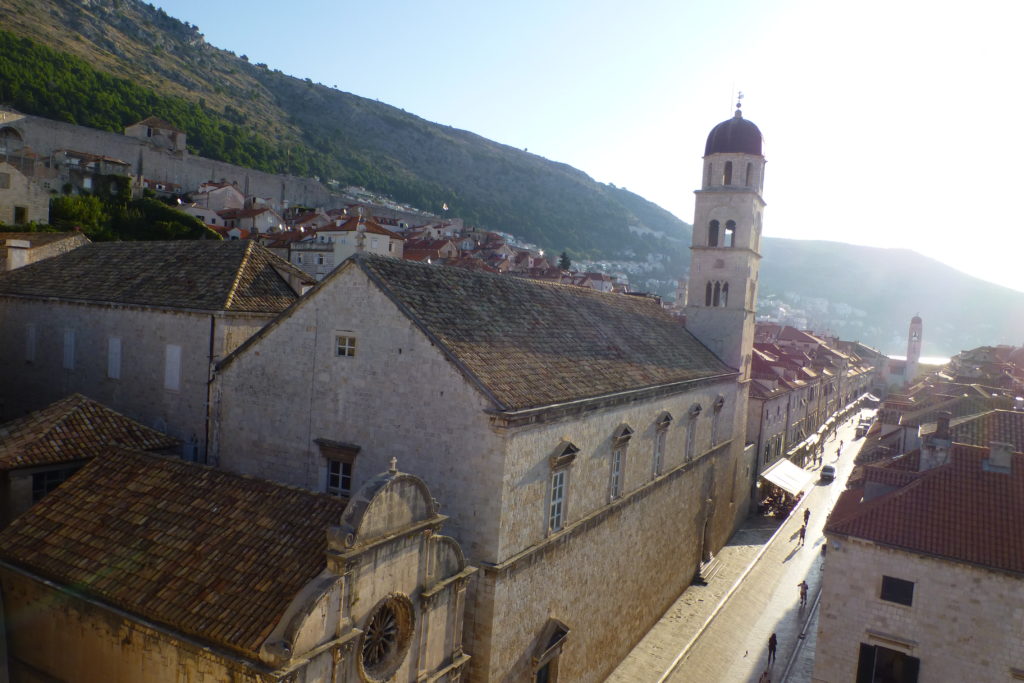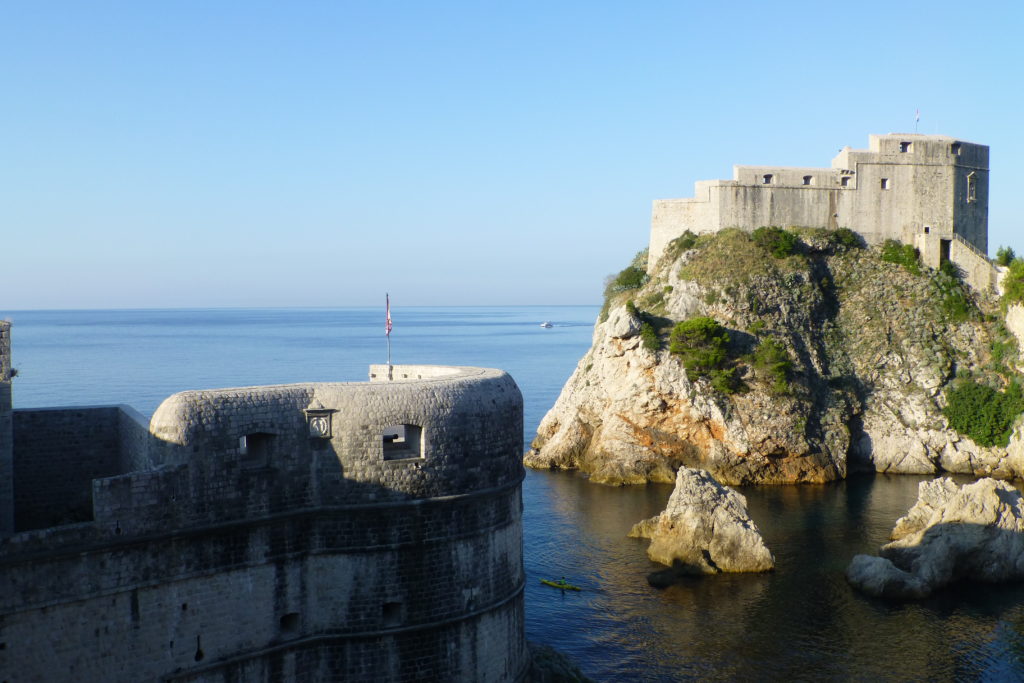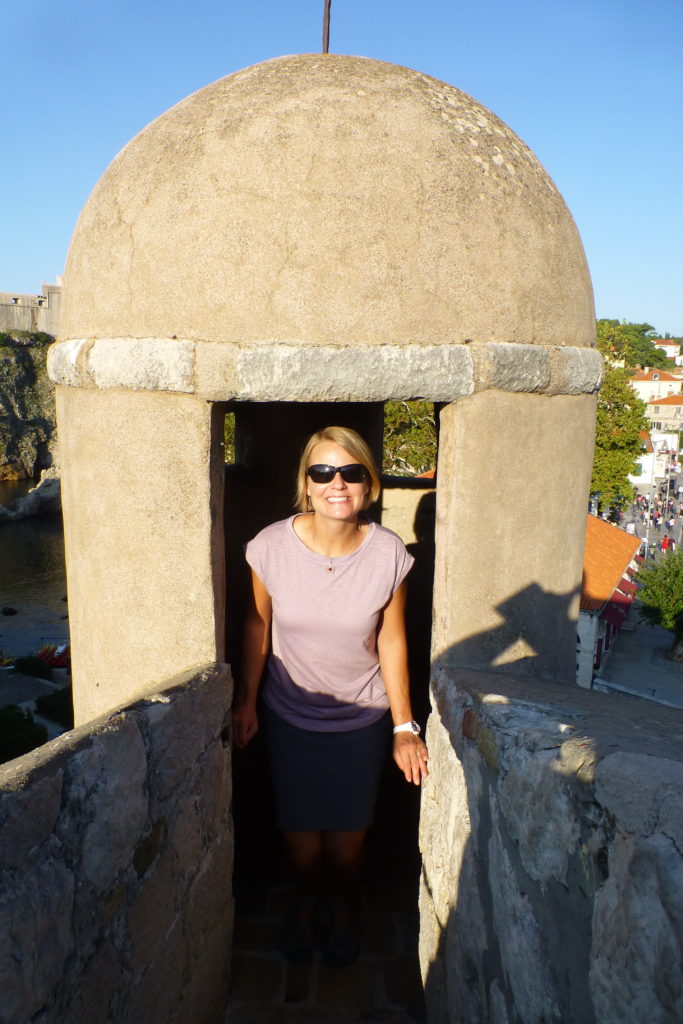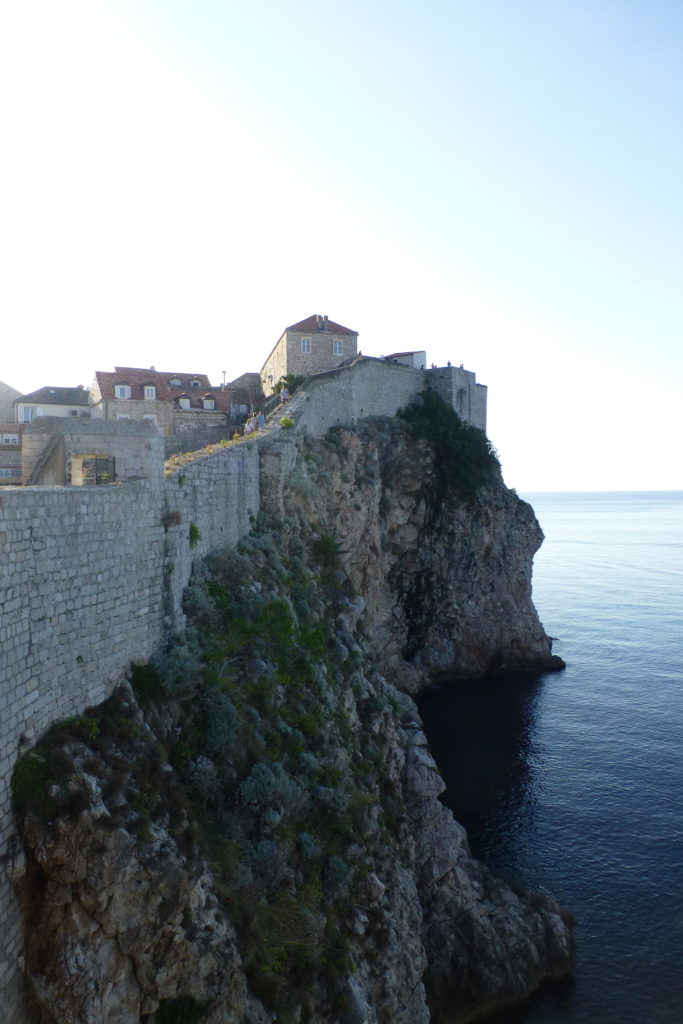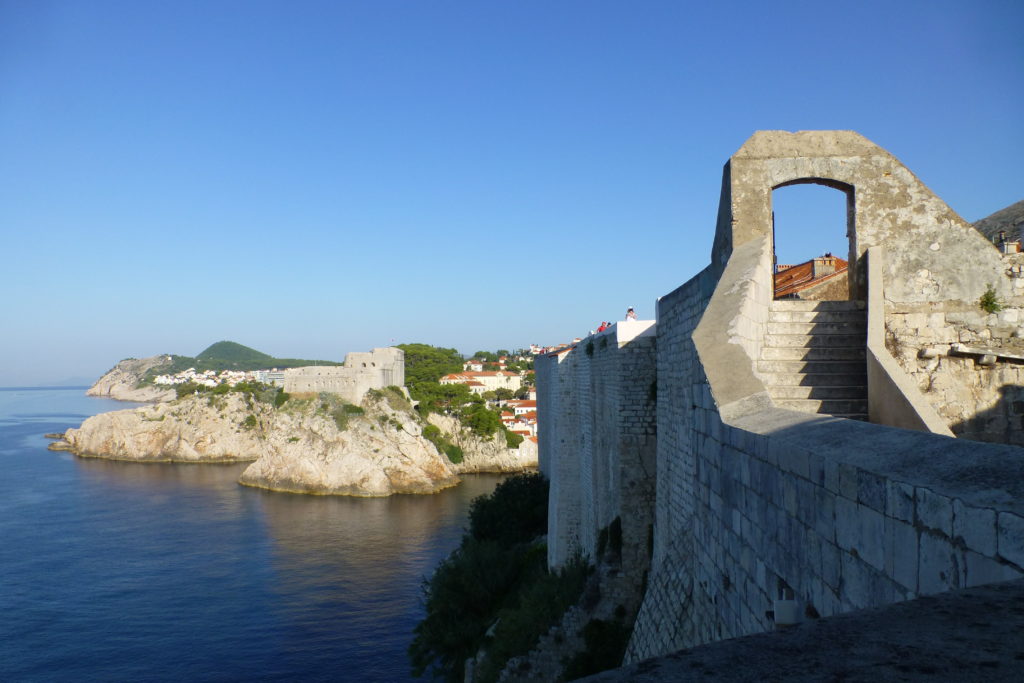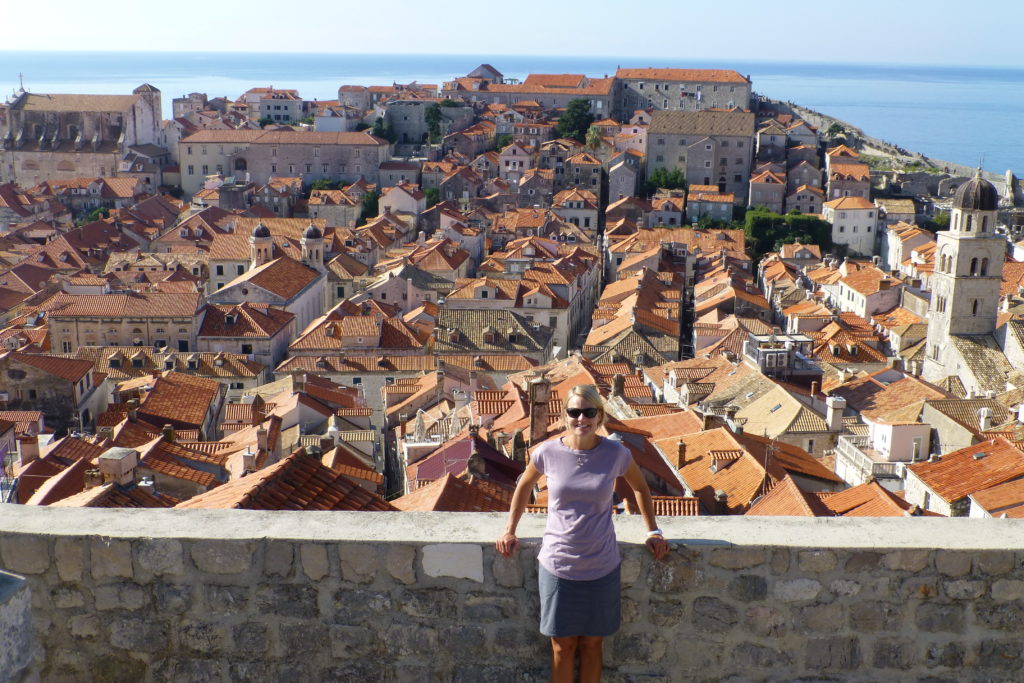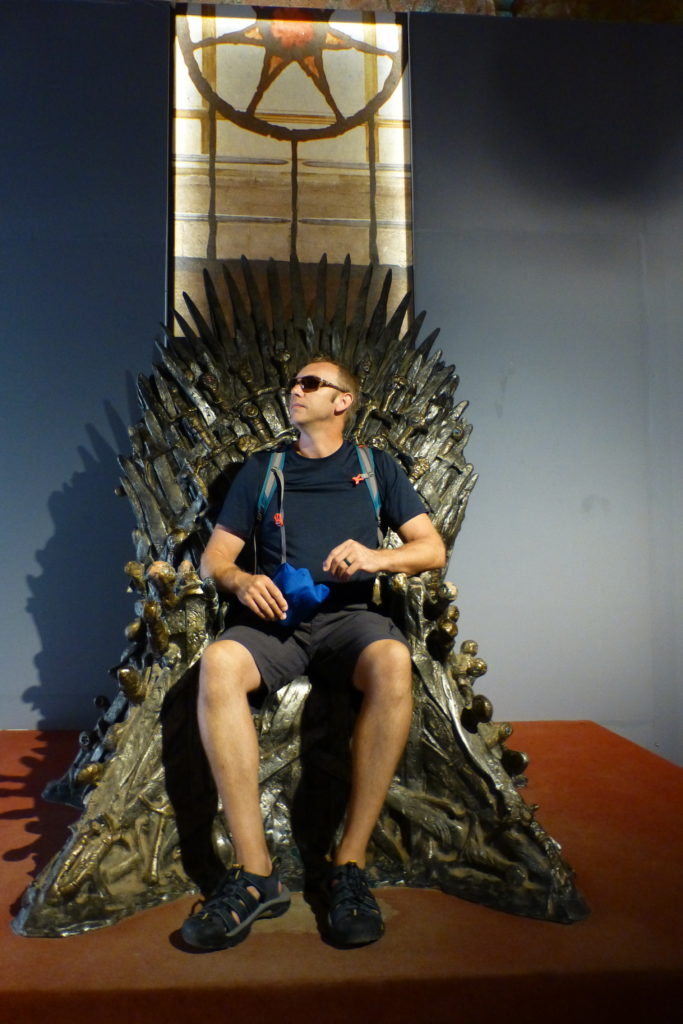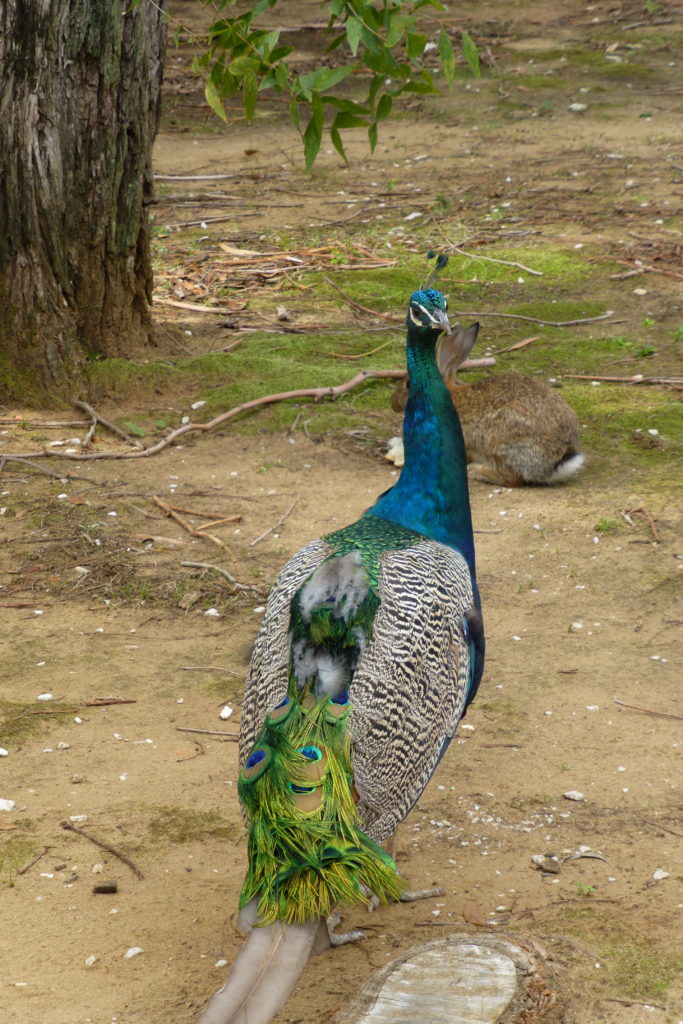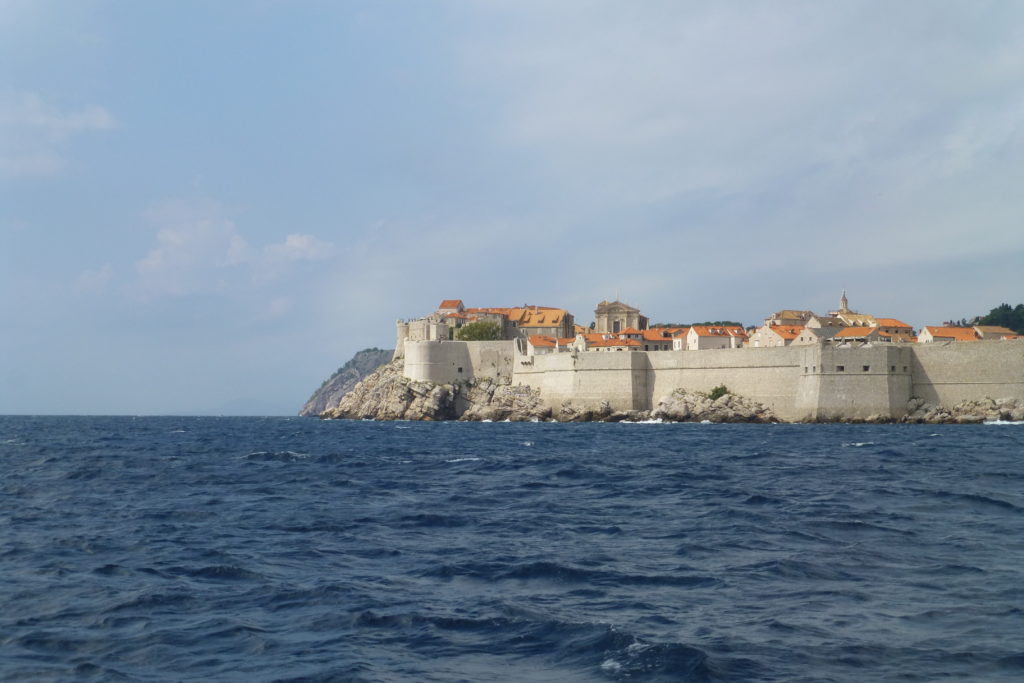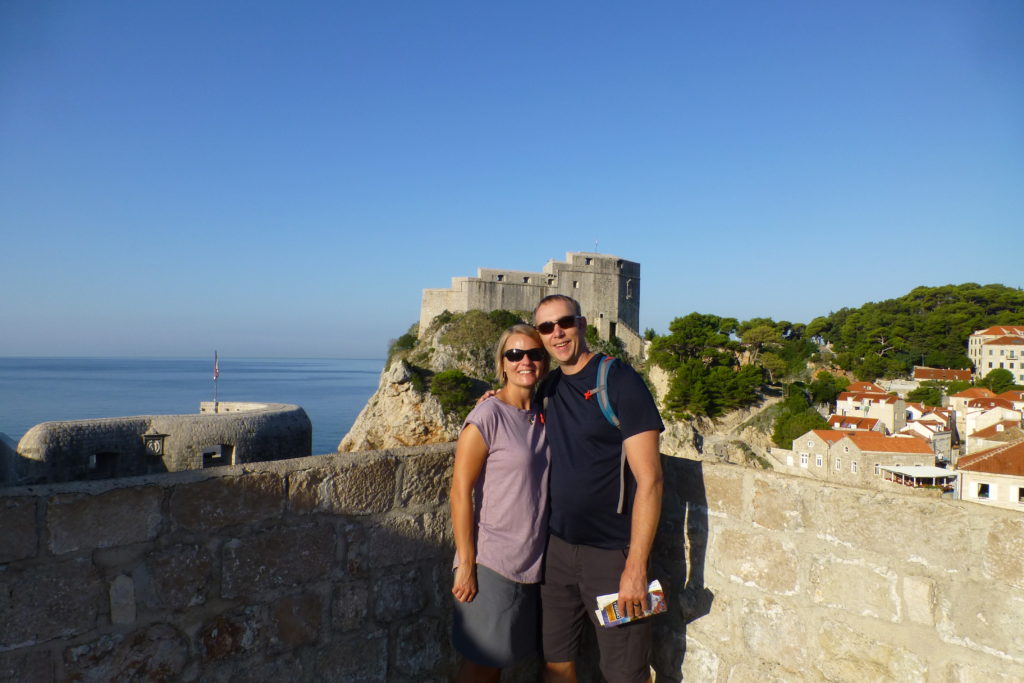Occasionally in our travels, we’ve struck up conversations with Spanish people we’ve met along the way; they usually ask us about New York (Sarah’s on her own with that…I’ve never been!) or San Francisco, although Portland is surprisingly well-known compared to a few years ago. In return, they always say the word Sevilla (Seville) with a sort of wistful gleam in their eye…sort of like our cooking instructor in Barcelona when speaking of jamon. So, we were very excited to come to this “city of soul,†a place with a few grand attractions but also a place just to go slow and enjoy life in a shady garden or sipping a drink at a table in a square. Sounds good? Well, maybe schedule your visit before the middle of November, or you’ll be singing the “Rains in Spain†under your breath as you sprint at a decidedly non-paseo pace from one attraction to the next!
Sevilla is the fourth largest city in Spain (700,000 people), but it has a very compact and touristy old town. The city’s main boom corresponded with Spain’s Golden Age (1500-1700) in part because it is where Ferdinand and Isabella married, thus creating the Spanish Empire. While it lies on a river instead of the ocean, Sevilla served as an ocean port for Columbus and Magellan. Later, it served as a cultural stop for the wealthy and the intellectual/artist crowd who enjoyed the romance of the city. Today, it serves crowds mostly, but the flip side of the rains in Spain flowing down November drains is you can still gain a sense of Sevilla’s charm without the crowds.
The center of old town lies between the Plaza de la Virgen de los Reyes and Plaza de Triumfo, which pretty much merge to create a pathway between Sevilla’s two main attractions: the Alcazar (Moorish palace) and the cathedral. Both sites held importance for both Muslims and Christians in the past, and I thought it was interesting to see two squares sort of merge to connect them instead of each having one grand square to itself. Our first afternoon was the one sunny moment we had here, and it was perfect for Sarah to get some photos of the cathedral in good light. The Alcazar often has terrible lines of people who didn’t reserve tickets ahead of time, and we noted the number of horse carriages lining up to serve as Plan B for the 100 people or so who were about to be disappointed as the palace closed.
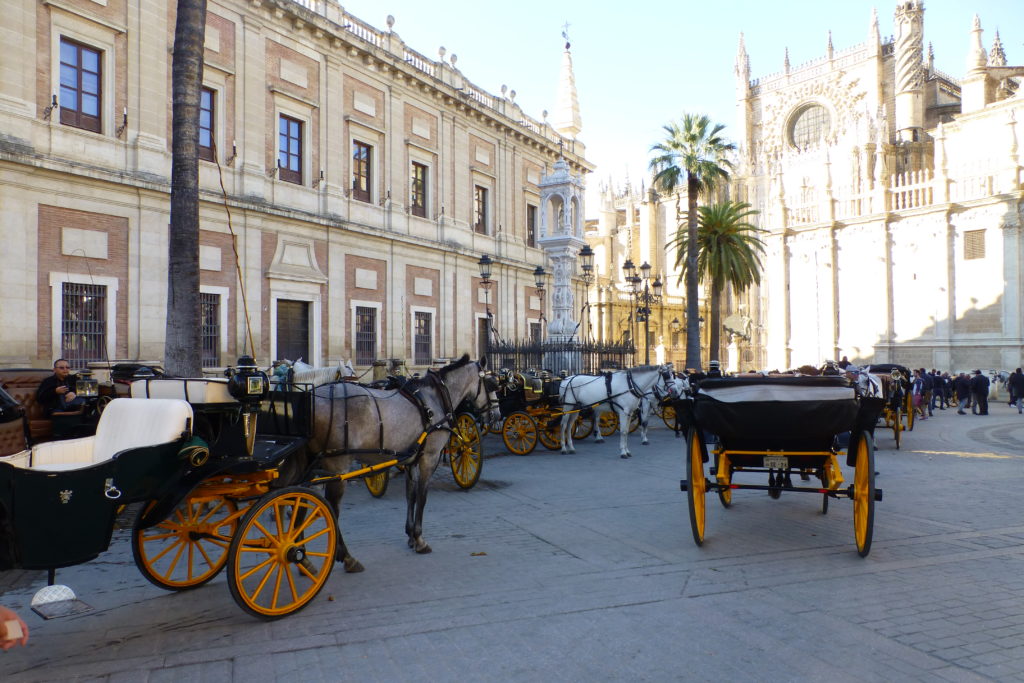
From there, we just wandered a bit…one of the main treats in Sevilla. It has a reputation for being ridiculously hot here in the summer, so there are many neat little shady squares lined with bitter orange trees, tiled benches (which help absorb the heat), and fountains. What a lovely place to eat your lunch or read a book…okay, probably check Instabookchat instead…during siesta! Even by European standards, most pedestrian lanes are narrow and curvy, which also blocks some of the worst sun. For us, though, it mostly created a fun place to explore before focusing on the big sites the next two days.
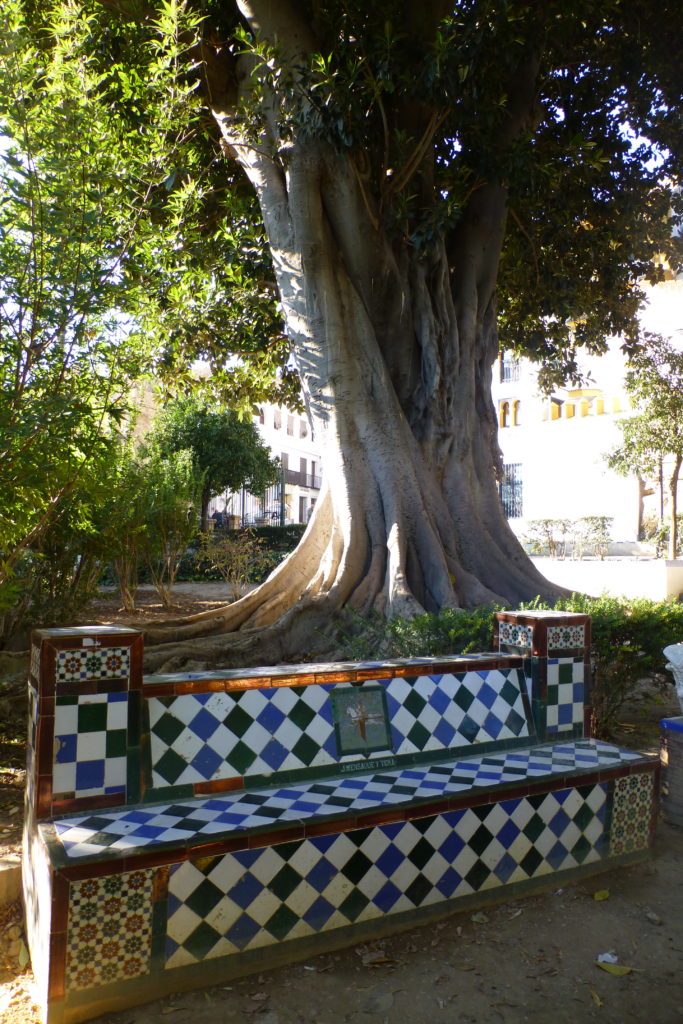
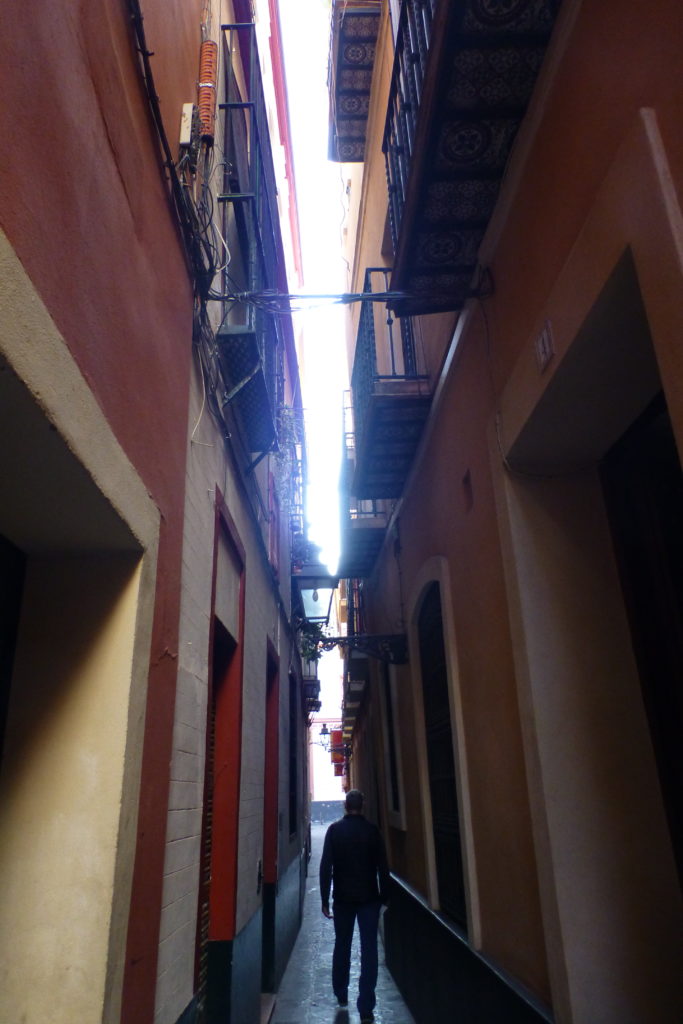
Sevilla’s cathedral is the 3rd largest in Europe and the largest Gothic church in the world. When it was completed in 1528, it was the largest church in the world (more shameless plagiarism of Tio Rico’s guidebook). Built on the footprint of the former mosque that stood here, the cathedral would span two Manhattan blocks. The exterior is somewhat devoid of classic Gothic statues, drawing your eye up to the many flying buttresses; Sarah tells me these buttresses also served a structural purpose and enabled them to build the church so high. Speaking of which, the Girelda Bell Tower (a former minaret) dominates any other feature of both church and square.
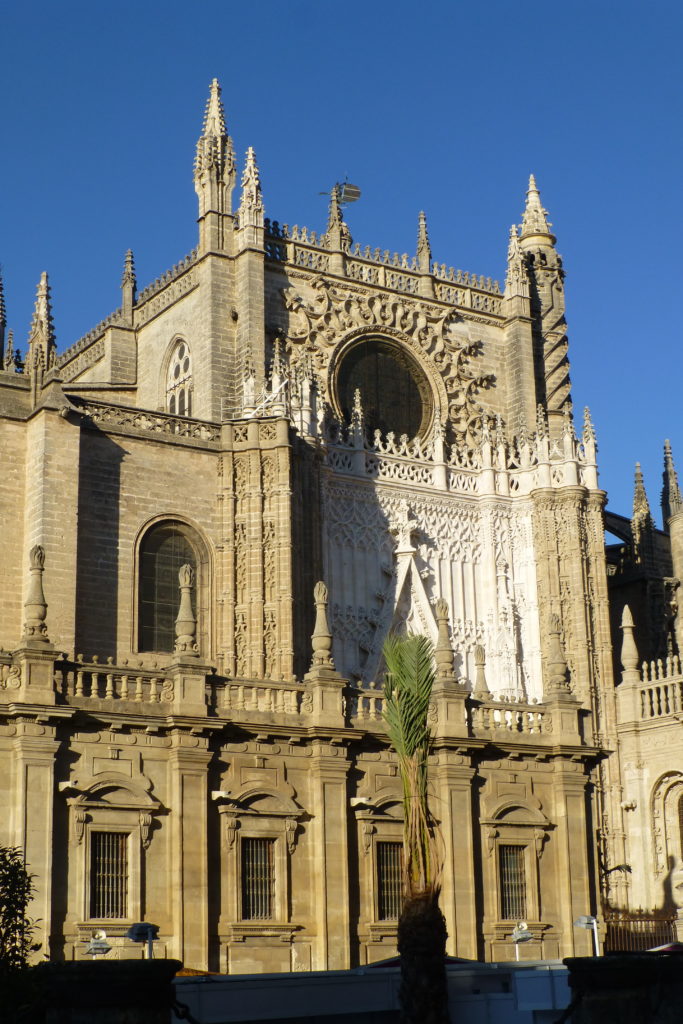
Much of the interior is more notable to Spanish history (Ferdinand driving out the Moors, two saintly sisters martyred by pagan Romans), but there was still plenty to peak our somewhat “churched-out†interests. The Tomb of Columbus, that magnificent imperialistic bastard/explorer, dominates an entire corner of the church, adorned with appropriately imperialistic propaganda among the four bronze pallbearers. His son’s confirmed remains are also interred here, and they used DNA testing a few years ago to show probability that Pops really is in the big box we all photographed that day. Spain’s most valuable crown, containing 12,000 jewels and the world’s largest pearl, sits in the cathedral’s treasury. The high altar rises 80 ft.; you have to crane your neck to see Jesus way up high. It’s 44 scenes plated in gold took nearly 80 years to complete!
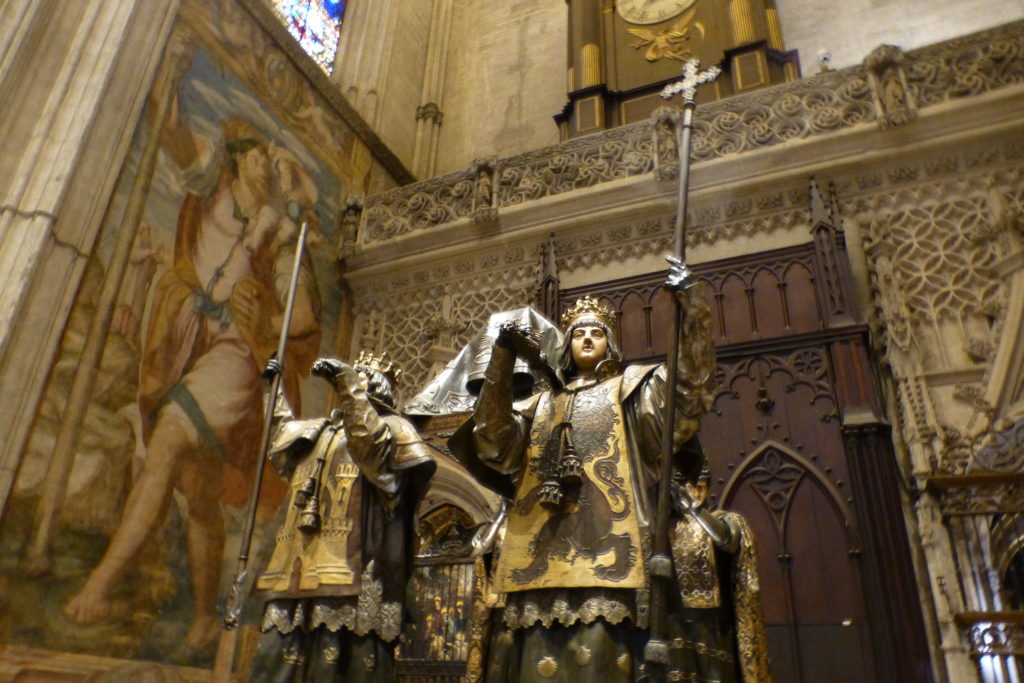
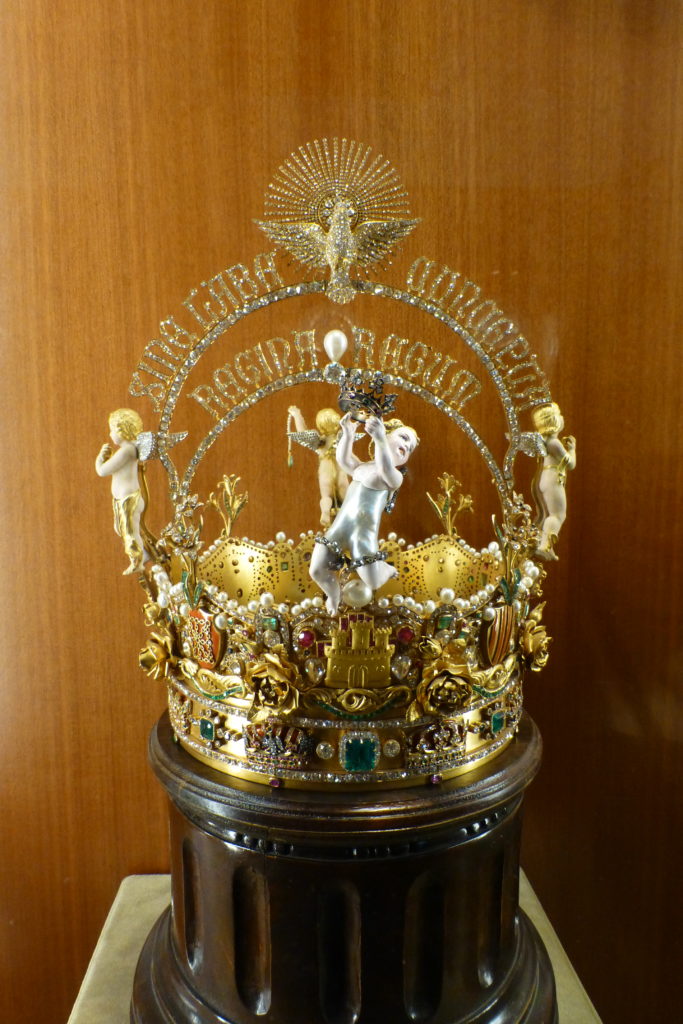
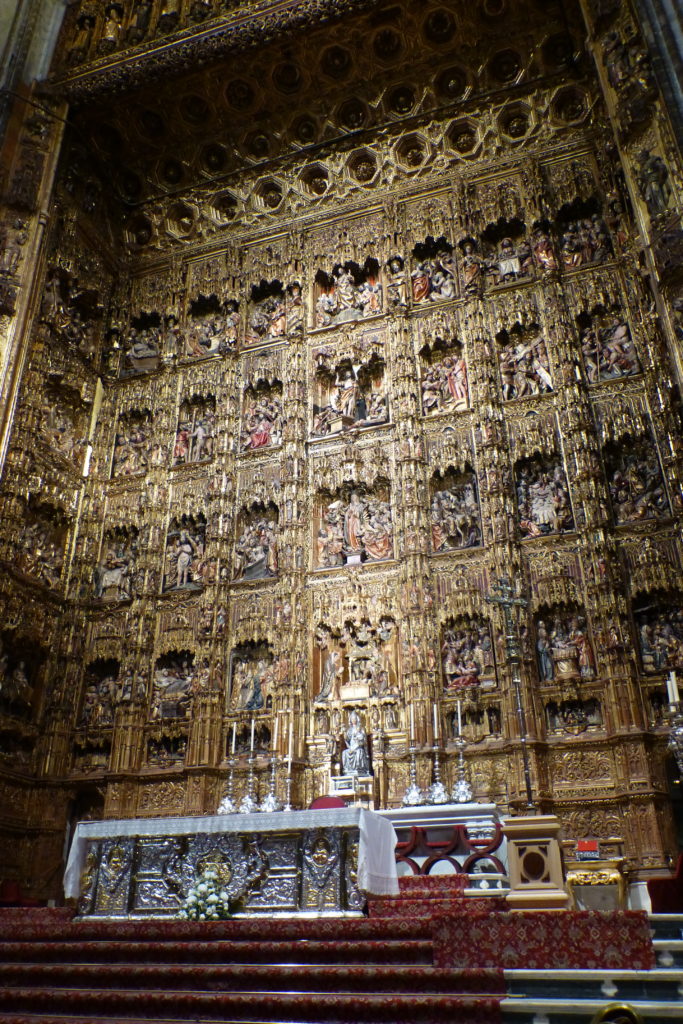
My favorite part was climbing 330 ft. to the top of Girelda Bell Tower. If you’ve ever climbed the narrow, spiral staircases up a church tower and pondered your own mortality in the process, you’d love this former minaret’s 35 wide ramps. Originally, a mule-ridin’ muezzin ascended the tower five times daily to sing the call-to-prayer. Today, many more Olds can be seen enjoying the city views from atop this tower than probably any other church in Europe! Oh, and those views are quite spectacular!
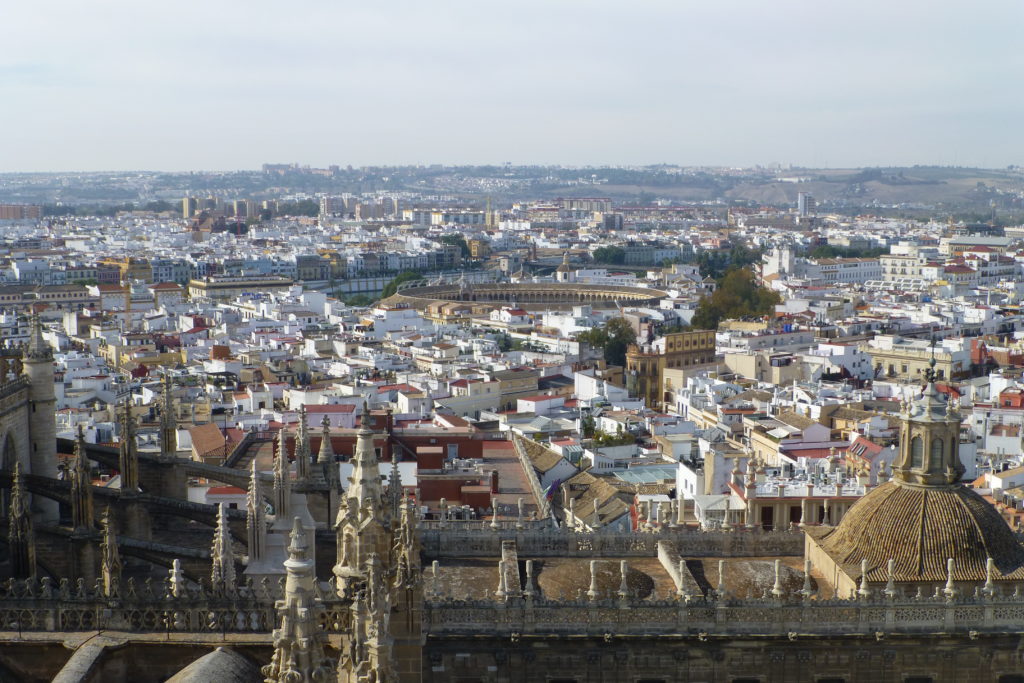
I mentioned that Sevilla is known as the “City of Soulâ€. Part of that nickname comes from its reputation for great flamenco shows (Contrary to many cartoons of my youth, there were no pink birds dancing the flamenco). Luckily, we’d been training on the Spanish dining schedule and could now stay up past nine to enjoy a nice date night. It was an interesting hour-long show in a very intimate setting; we were only about 6 ft. from the stage (close enough to get sprayed by the male dancer’s freshly sprayed coif). Five performers—2 dancers, 2 singers, and 1 bad-mamma-jamma guitarist—performed two styles of dance. They actually improvise much of the show each night based on the mood of the dancers and the rhythm set by the clapping of the lead singer, whose songs often had undertones of a Muslim prayer but also the human passion of love or loss. The dance was energetic with rapid tap-steps; the woman making many high steps and skirt-twirls and the man maintaining his bull-fighter’s posture. I can’t say that either of us loved the show, but we both appreciated the talent of each performer!
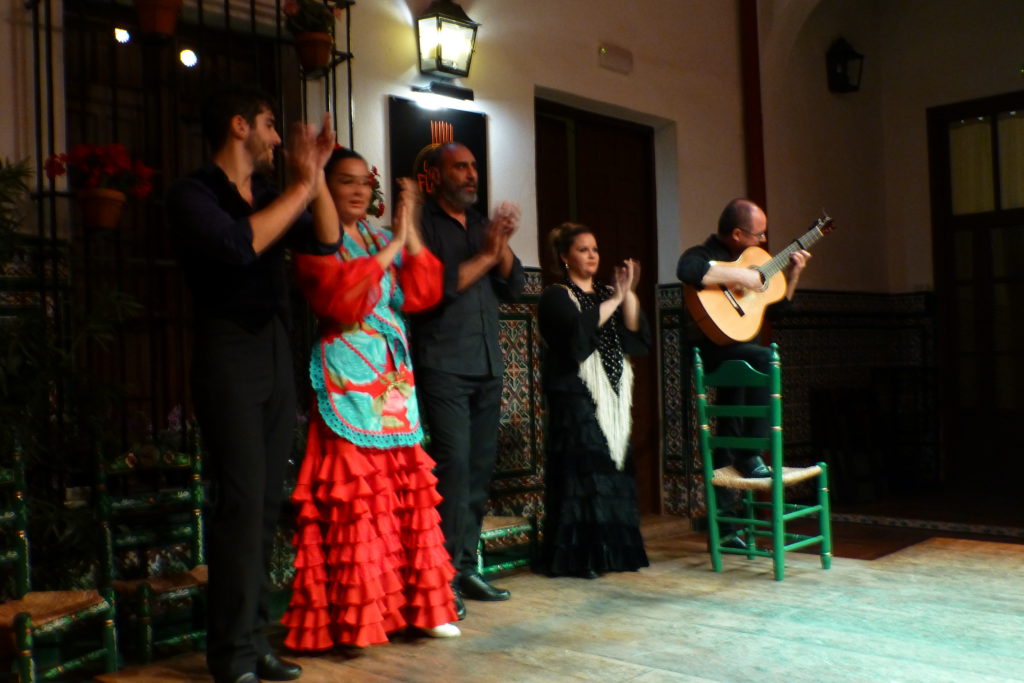
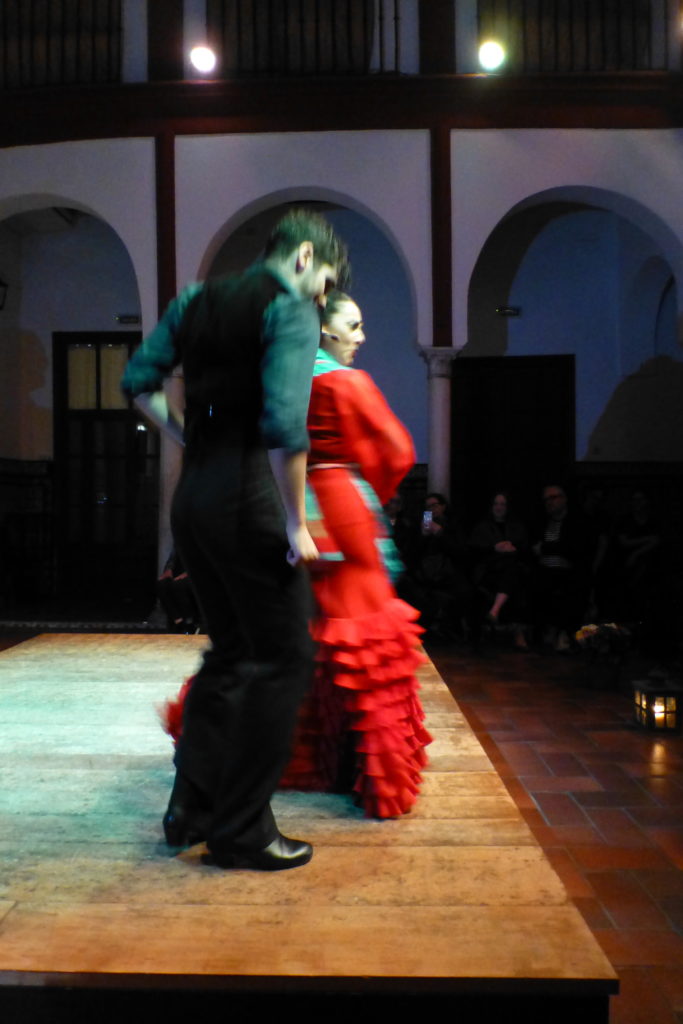
Sevilla’s other main attraction, the Alcazar, was a Moorish palace from the 10th century that was rebuilt after Christians recaptured the city. The royal family still uses some of the more modern portions as a part-time home. The best part of a complete visit is the royal bedrooms section, but we were unable to procure a ticket online (I think Sarah mentioned in her last blog that Spain hates our credit cards). We decided to treat the day as a tantalizing preview for the much grander Alhambra we’d see the next week in Granada. Still, though, the Alcazar proved to be quite enjoyable on its own.
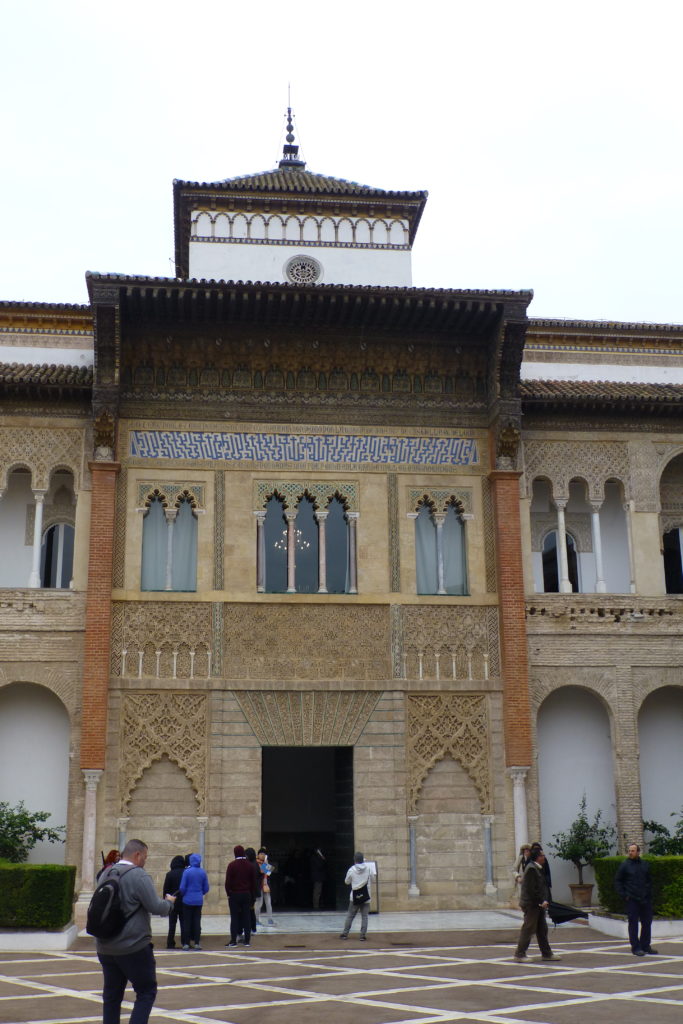
I enjoyed the fascinating blend of cultures in two very different architectural styles. The Moorish level was decked out in what’s known as Mudejar style: full of beautifully carved keyhole-shaped windows, colorful tiles, and geometric patterns. The newer upper level, on the other hand, is more subtle stucco with Corinthian columns, balustrades, and coats-of arms. The entire palace is centered around the beautifully serene (even with all the selfie-snappers) Courtyard of the Maidens. The Hall of Ambassadors featured a cool half-dome carved to look like the stars of heaven set over a cube-shaped room (earth)—a nod to the balance of Allah’s universe. At the same time, the room’s update also mixed in calligraphic references to the bad-assery of King Pedro, the Christian ruler who oversaw much of the renovations. The banquet hall was the site of Ferdinand and Isabella’s wedding reception. It was decked out with each family’s coat-of-arms and scenes of all types of humans and animals partying. While you can only tour a small portion of the rooms in the palace, the vast gardens would be a lovely place to linger all afternoon; locals are able to do just that anytime they want…they negotiated the space as public lands when they reinstated the ceremonial royalty some time ago.

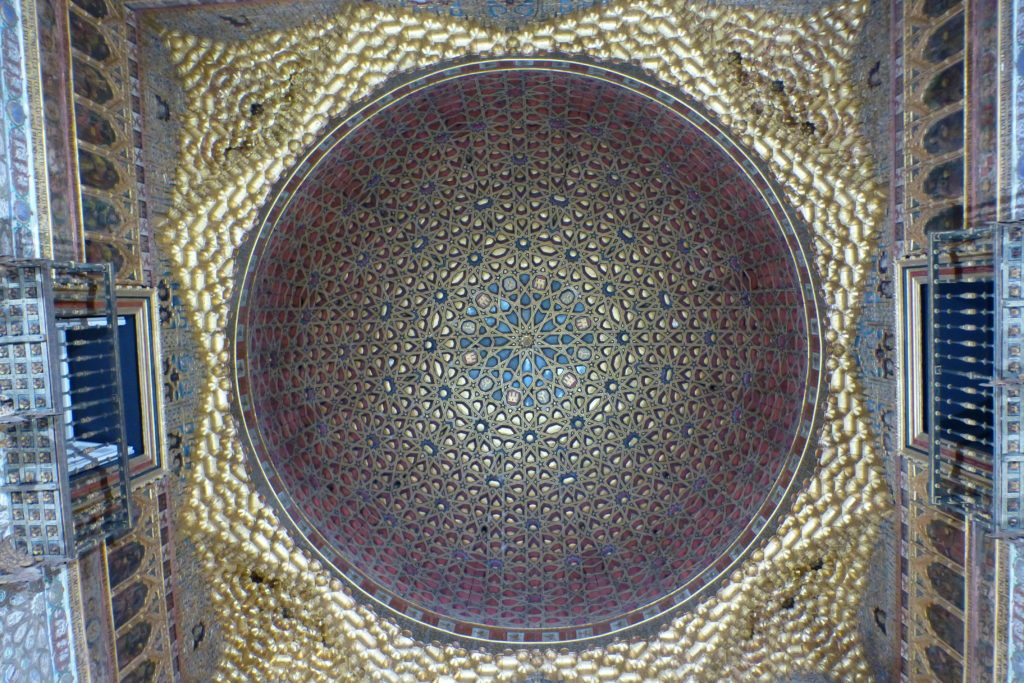
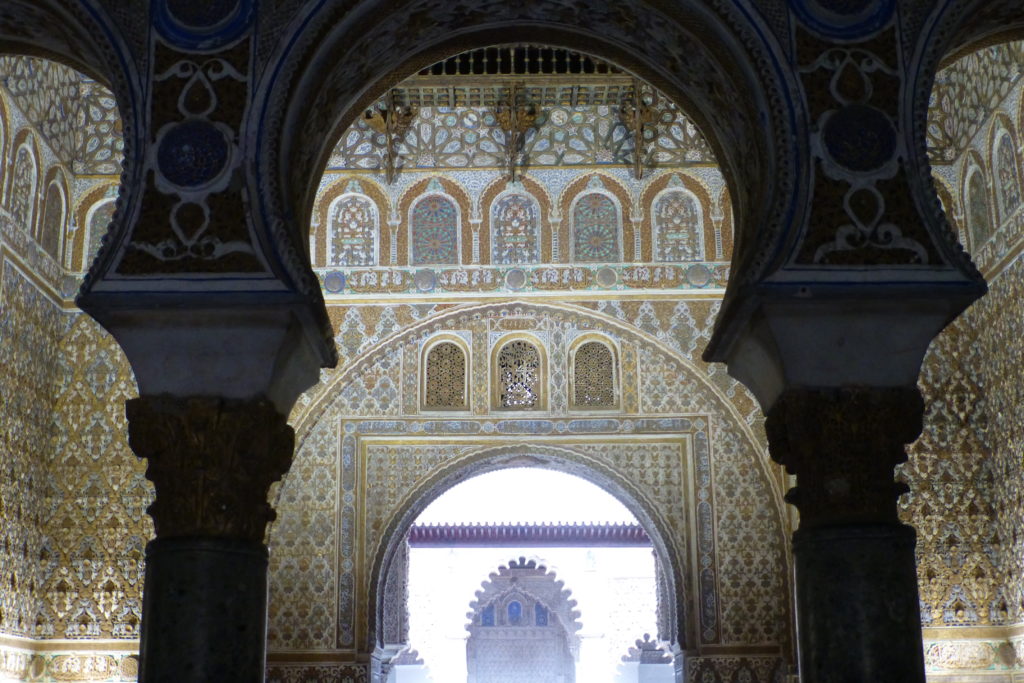
While the rain did shut down most of our wandering, it would be impossible not to eat well in any Spanish city. In fact, we spent an almost embarrassing amount of time eating in Sevilla. Almost. Our favorite tapas bar was a locals’ place only a few blocks away from the cathedral but apparently too far for most tourists to stray. Every bar seems to have a ham man, and this one had an excellent artist; you wouldn’t believe how thin this mustachioed genius could slice the Iberian good stuff with his 15-inch carving knife. I haven’t done well with my Spanish during the trip; most people want efficiency, so they seem to prefer English with non-natives. It was pretty slow here, though, so I got to enjoy some practice, which made it even more fun for me. The other highlight (actually highlights since we used a torrential downpour as an excuse to eat there a second time) was the culinary school connected to one of the most highly regarded restaurants in the region. We could both get 3-course gourmet lunches with wine for under 40 Euros—not a bad way to spend two hours hiding from the rain! One last highlight for environment if not food was eating tapas in a bull bar; yup, we were surrounded by tons of happy tourists, a few waiters, and about a dozen mounted bulls’ heads. Alas, through all these culinary adventures, we found ourselves sufficiently indoctrinated to Spain’s number one rule:
NO FOTO!
